- info@naturebylennart.com

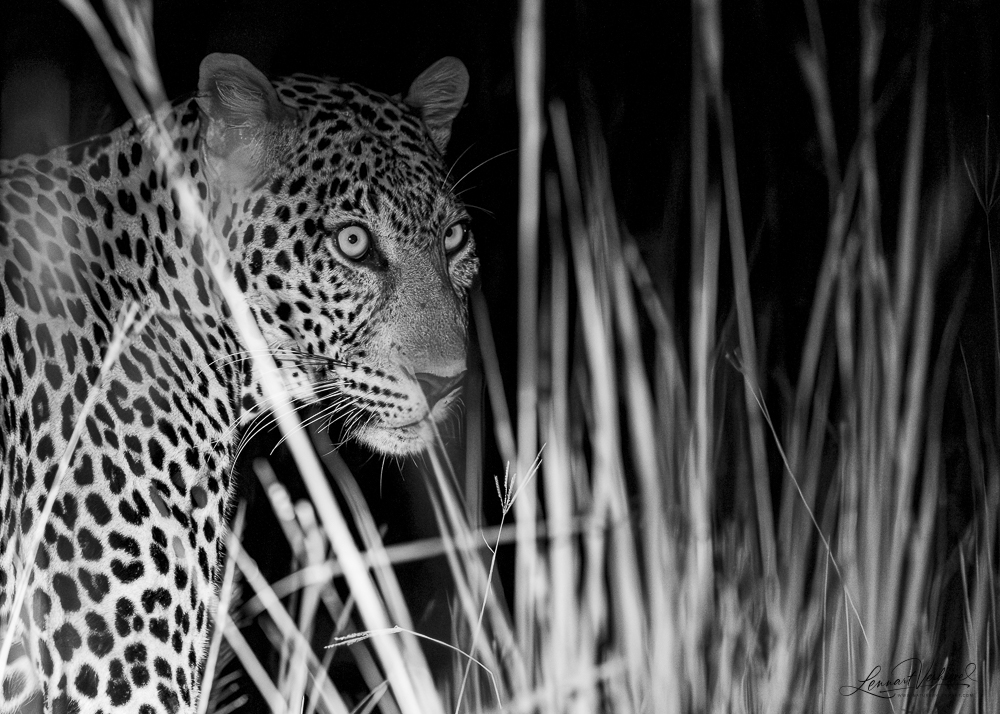
The last place I’ll be writing a separate report about is Murchison Falls National Park. Uganda offers the best of both worlds with excellent rainforest and also excellent savanna where the more typical African animals can be found such as Lions, Giraffes, Elephants and so forth. During our trip, we visited several typical savanna parks, including Lake Mburo, Queen Elizabeth National Park, and finally Kidepo National Park. Personally, I thought Murchison Falls was the most beautiful location of the four, which is why the post will focus on this park. Of course I can’t help, but name a few of the highlights from the other parks as well!
Each park had its own specialties that made the visit worthwhile. Lake Mburo is unique compared to the others because it’s possible to go in search of animals on foot. There are no elephants or lions in the area. For a birder, that opens up some interesting extra opportunities.
A good bird species we saw in Lake Mburo (actually from the car) was the Brown-chested Lapwing.
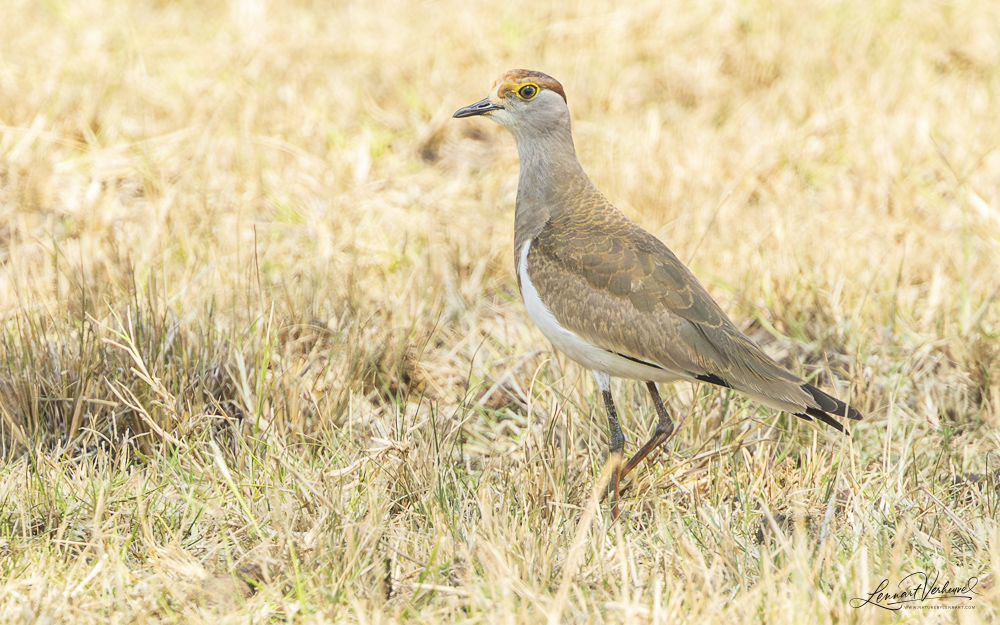
Brown-chested Lapwing
We also saw the iconic African Finfoot. This species isn’t easy to find everywhere, but Lake Mburo is one of the best places to see it. We had a great view of a beautiful male.
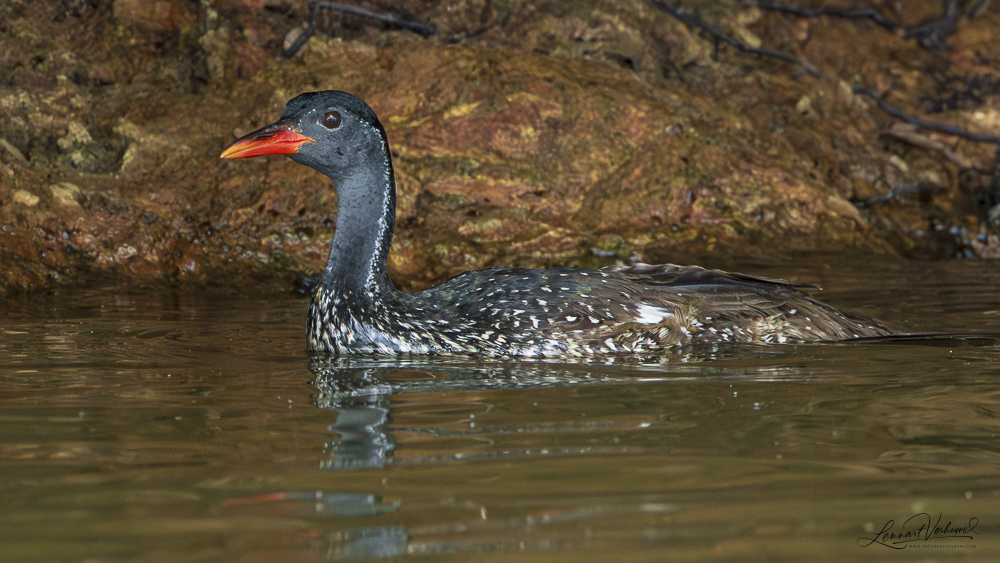
African Finfoot
It was also amazing to see Bushpig at night in Lake Mburo. That was a new mammal species for me, and one that’s not often seen this well. Apparently, a small group came to a nearby village every evening in search of food, which gave us the chance for a wonderful sighting.
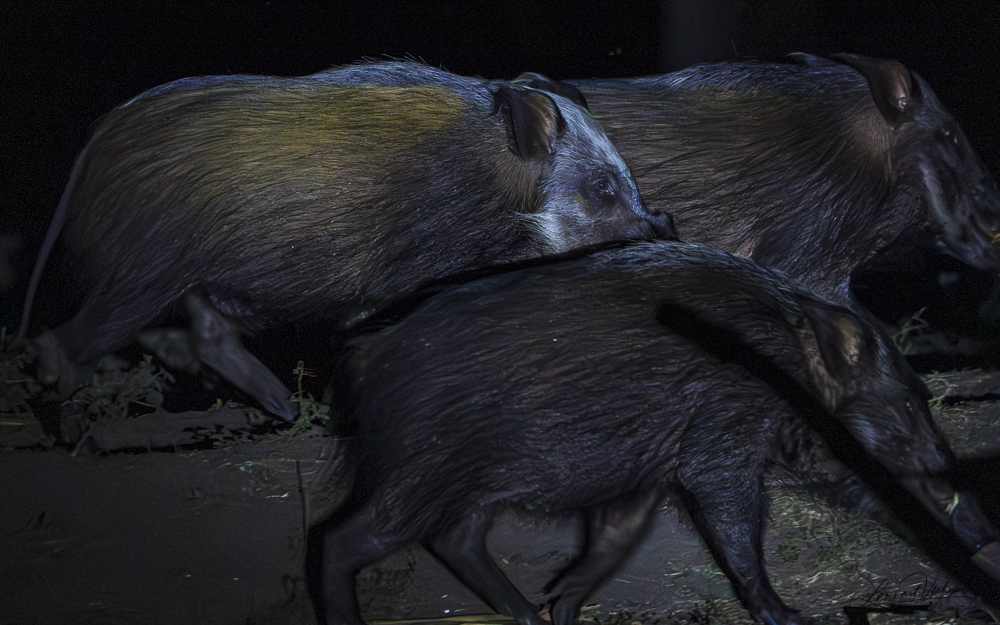
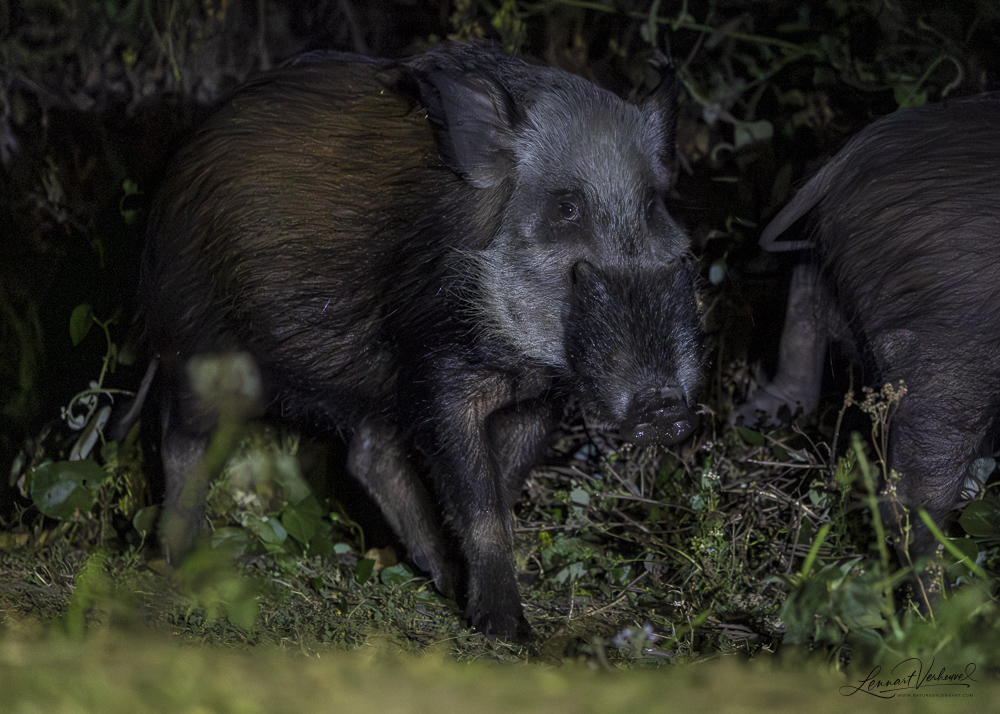
Bushpig
So Lake Mburo was certainly a good addition to our trip, though for me, not a location that left a huge impression. In a savanna park, I like to have a bit more chance of spotting interesting mammals.
What Lake Mburo lacks, Queen Elizabeth more than makes up for: elephants! We saw a great number of them here, especially during our boat trip on the Kazinga Channel.
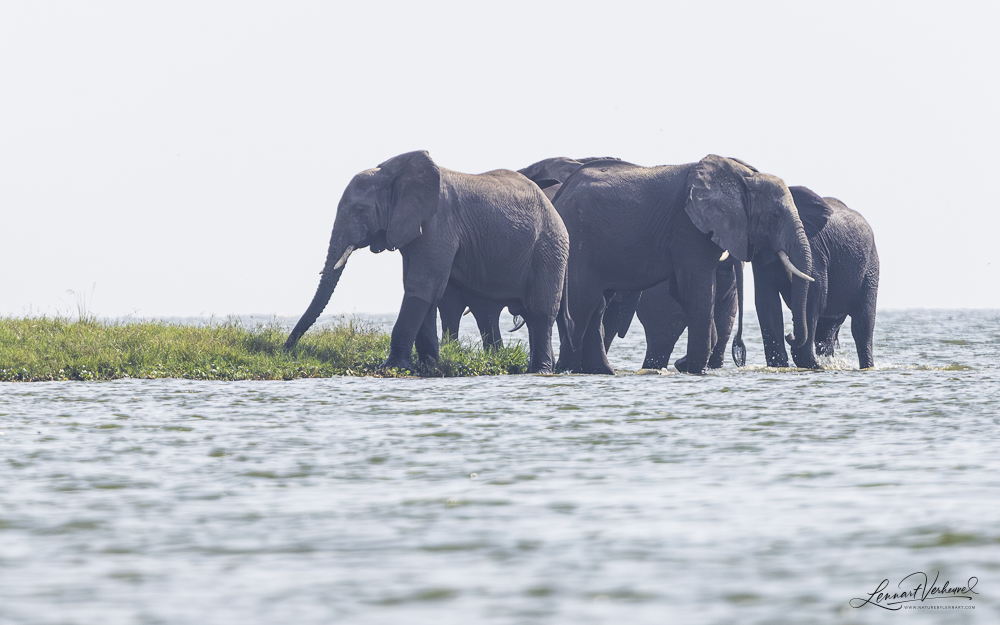
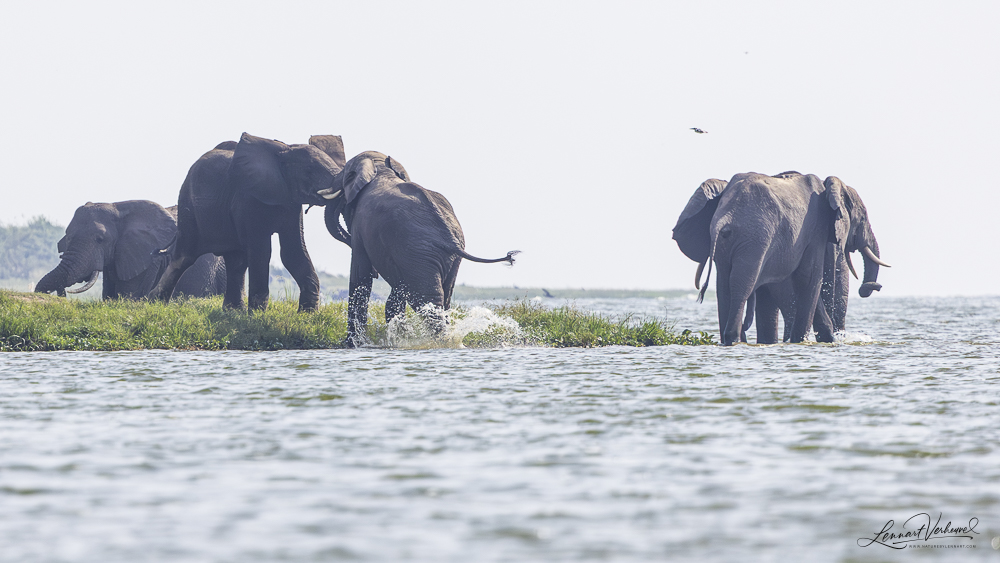
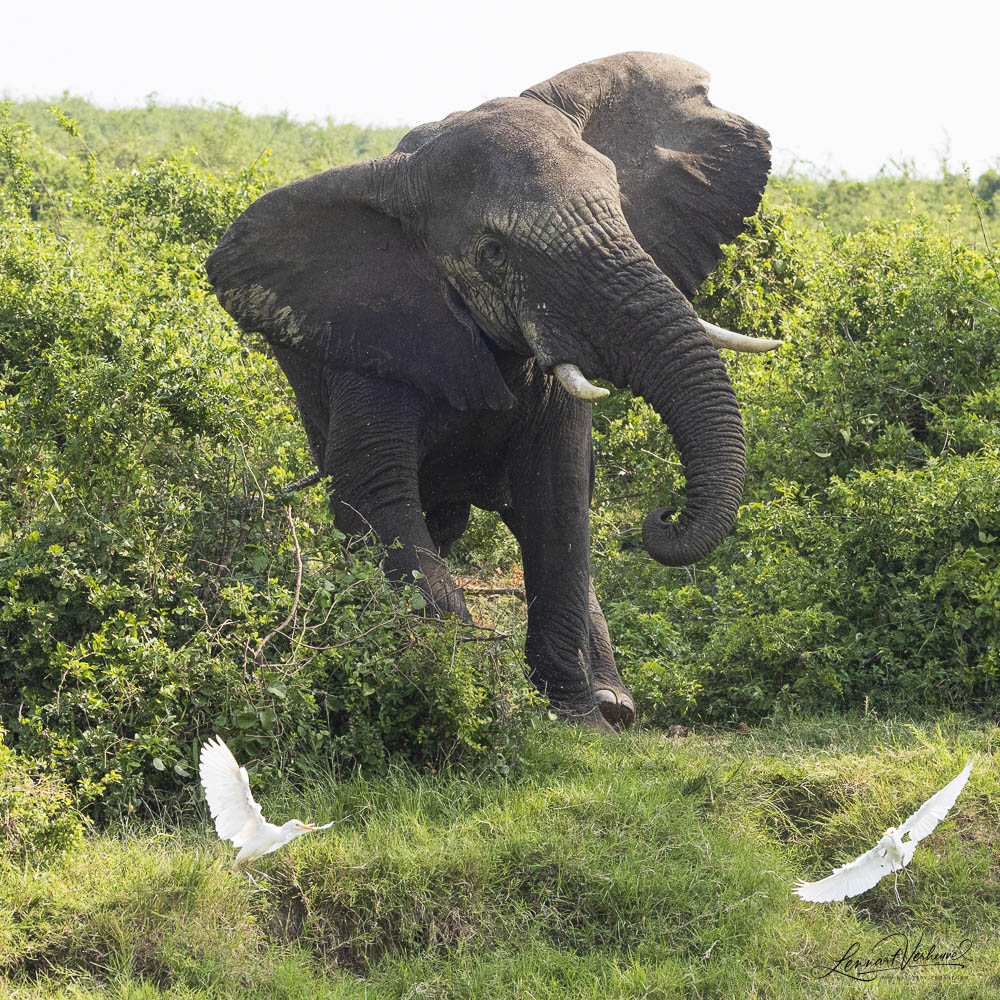
African Savanna Elephant
Apart from the elephants, however, the park felt rather empty. We did see the famous “tree-climbing lions” of Queen Elizabeth, but they were quite far away.
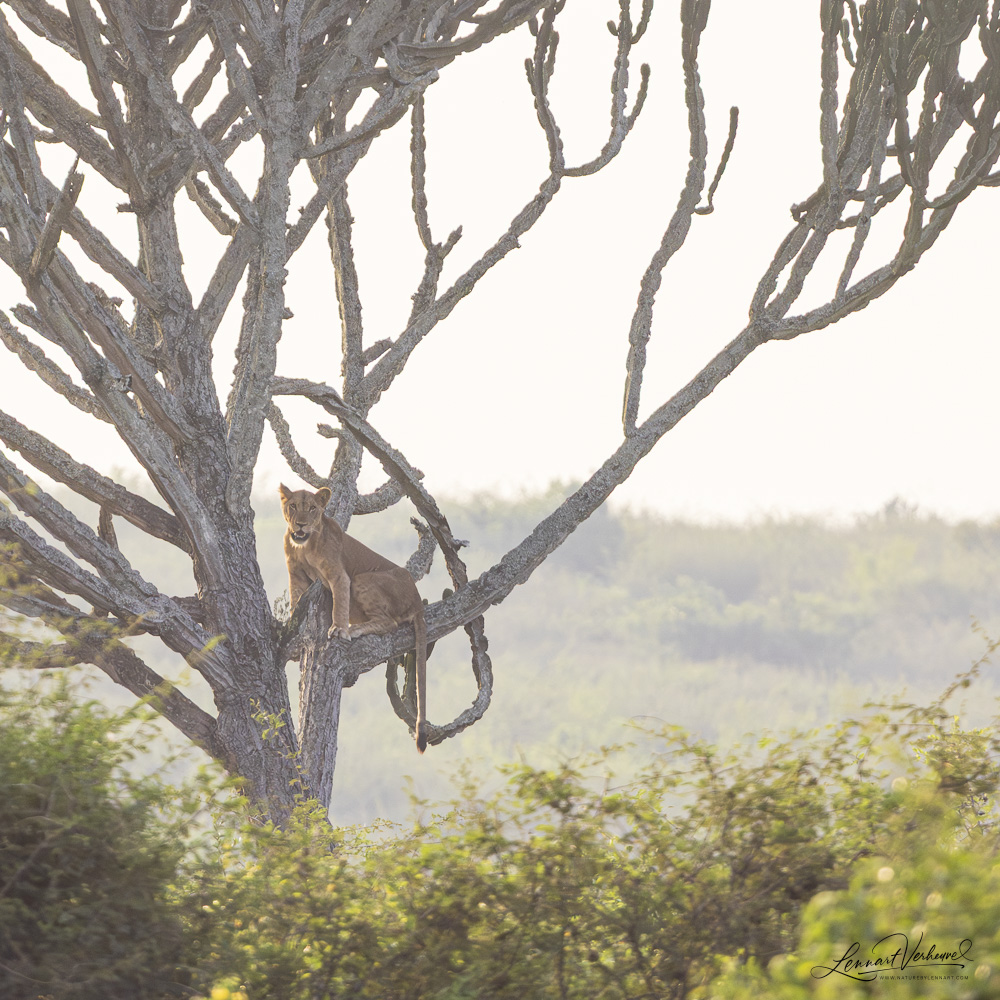
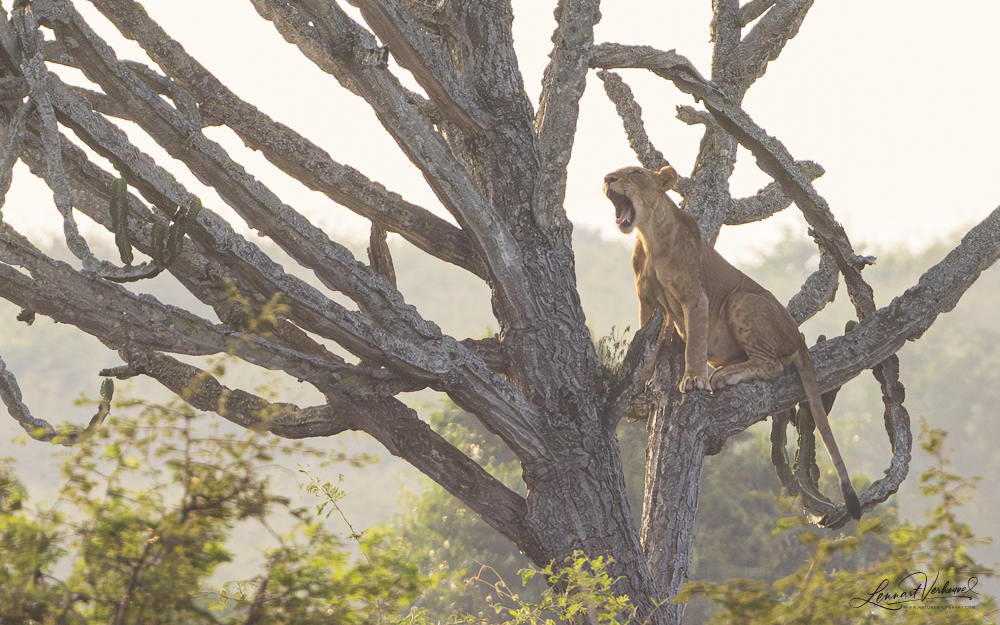
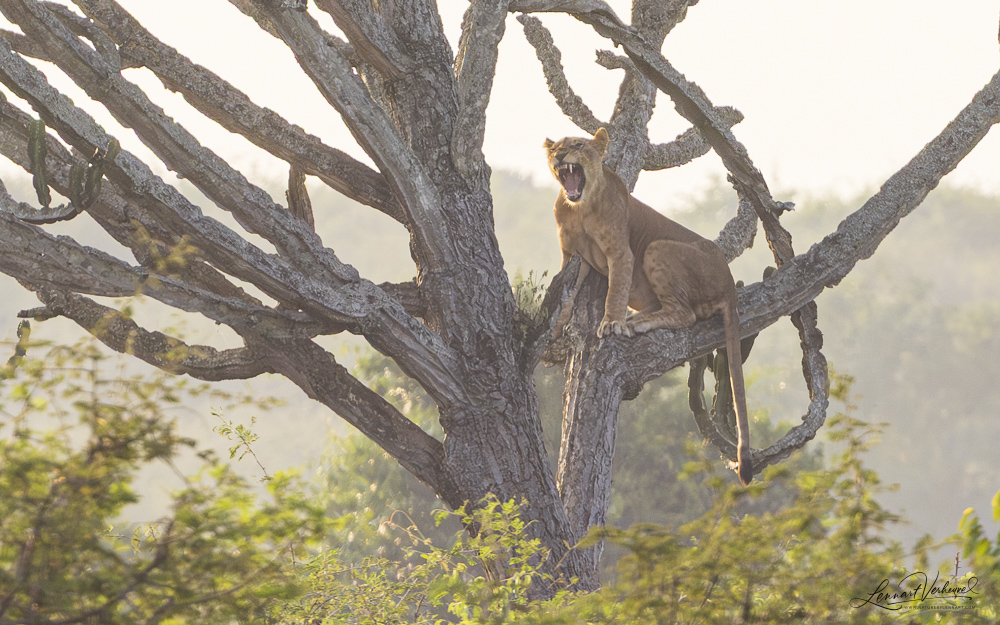
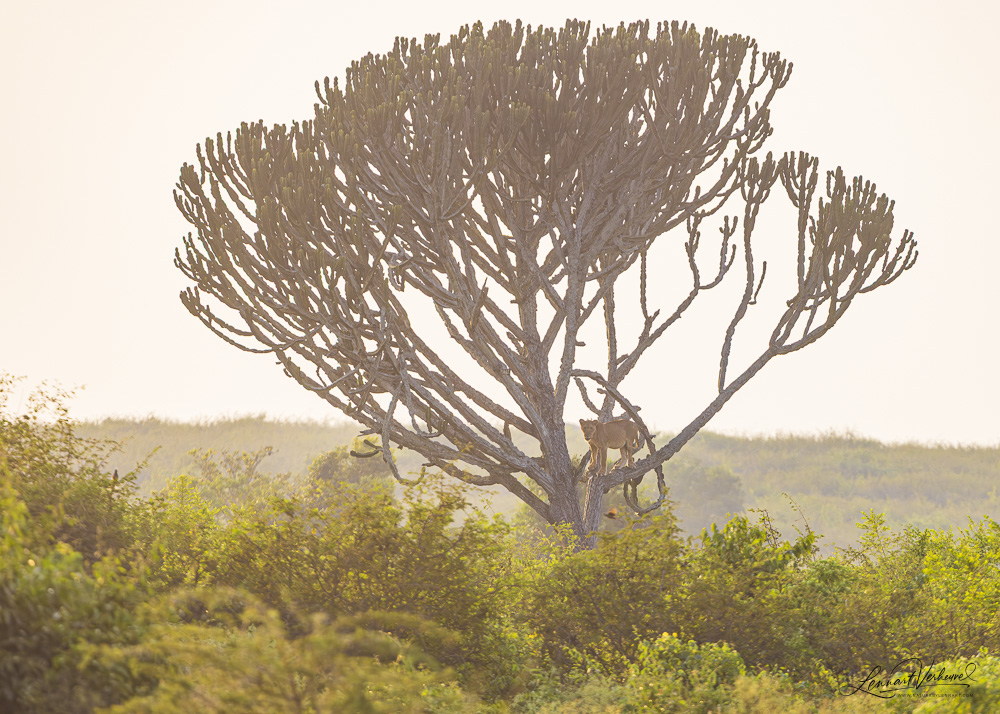
Lion
A fun mammal sighting here was the Giant Forest Hog—another pig species—and Queen was the place where we hoped to see it. Fortunately, we did.
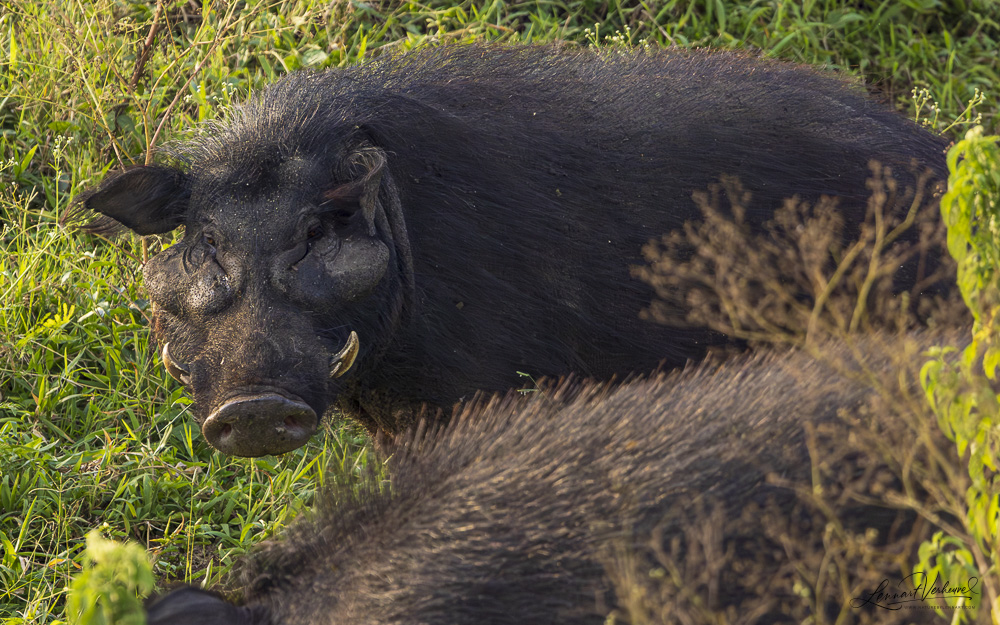
Giant Forest Hog
I had the highest expectations for Kidepo beforehand, since it lies close to the South Sudanese border. That should have offered chances for different birds and mammals. Unfortunately, rainfall meant we couldn’t explore the park as thoroughly as we had hoped.
Still, I was pleased with my photos of the many buffaloes that Kidepo is known for. We also saw several mammals and birds that were new for us, but because of the rain it wasn’t quite as spectacular as we had hoped.
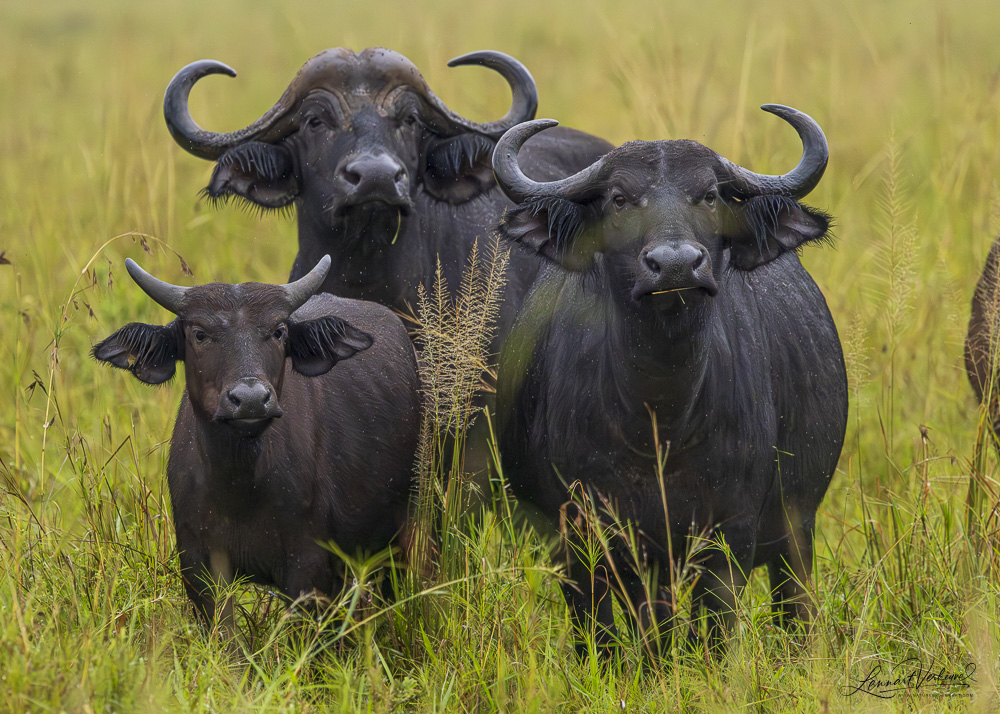
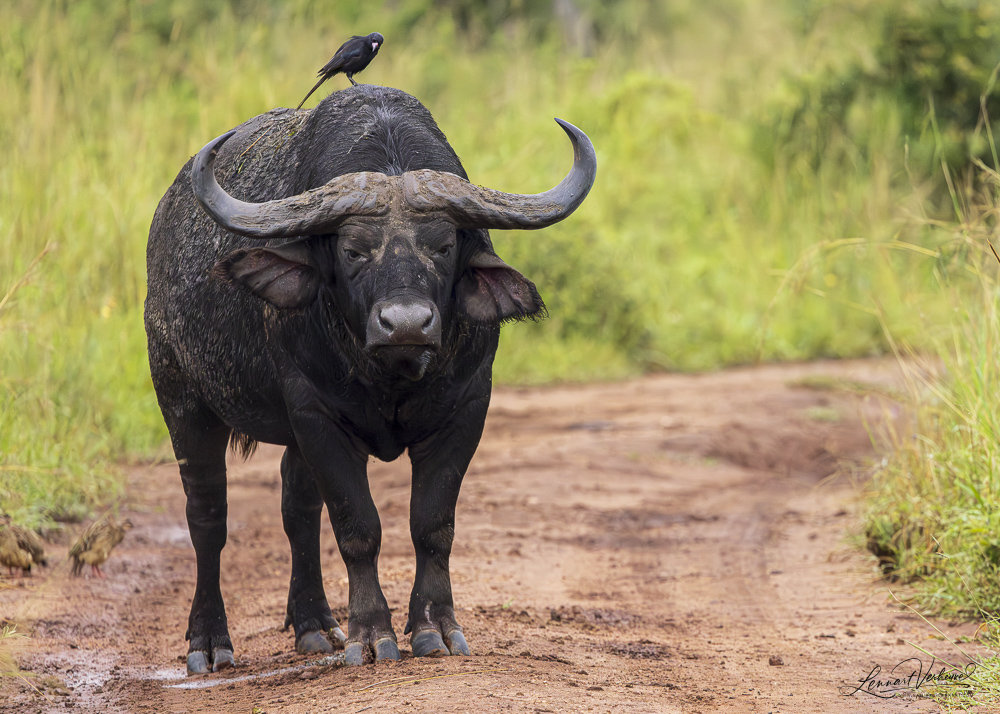
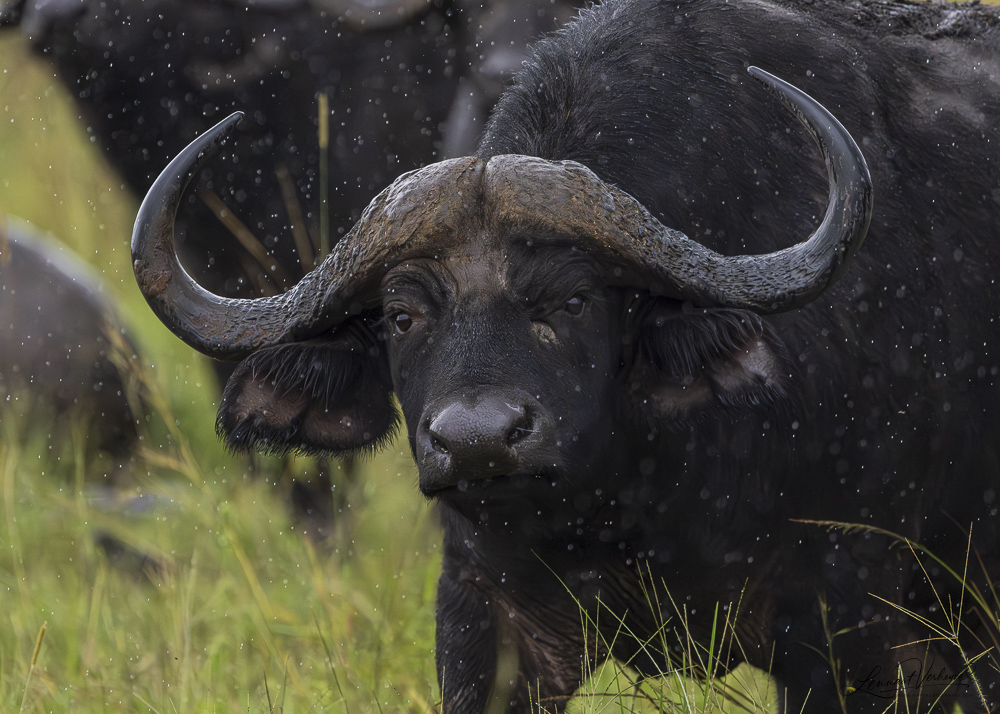
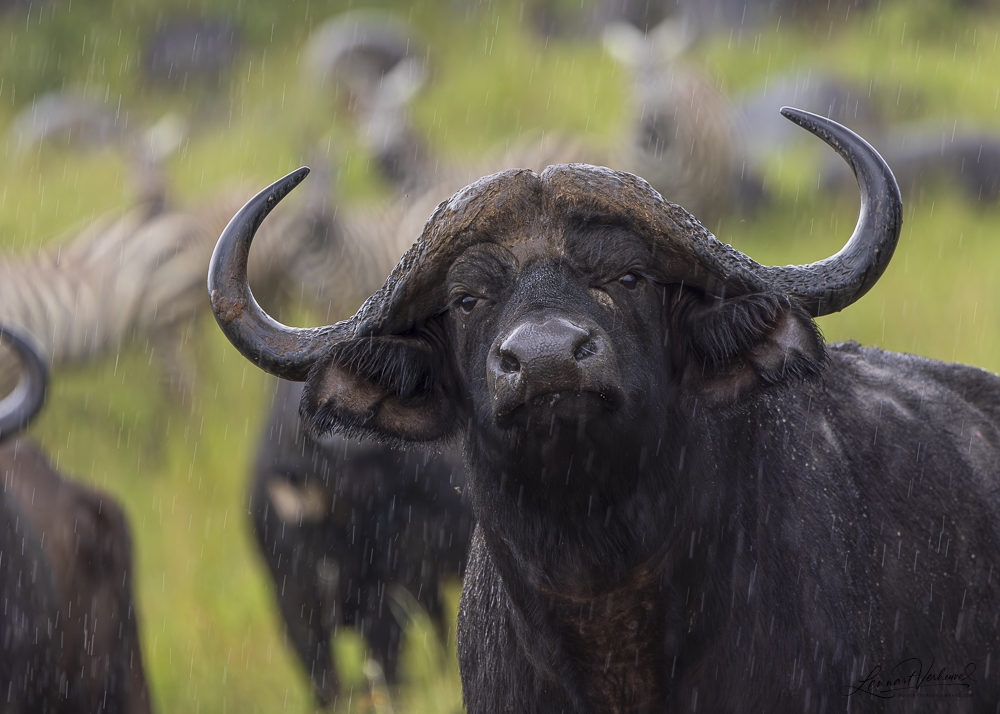
African Buffalo
But I was going to talk about Murchison! Murchison is the largest park in Uganda. When we were there, it was very green, with rolling hills and scattered trees. This gave the landscape a nice variety and made it interesting to look at, without the trees making it hard to spot animals.
One of the better bird species we saw actually appeared the day before. That was the Silverbird—a beautiful flycatcher that occurs quite locally in Africa. Because of its striking looks, it was a real target species!
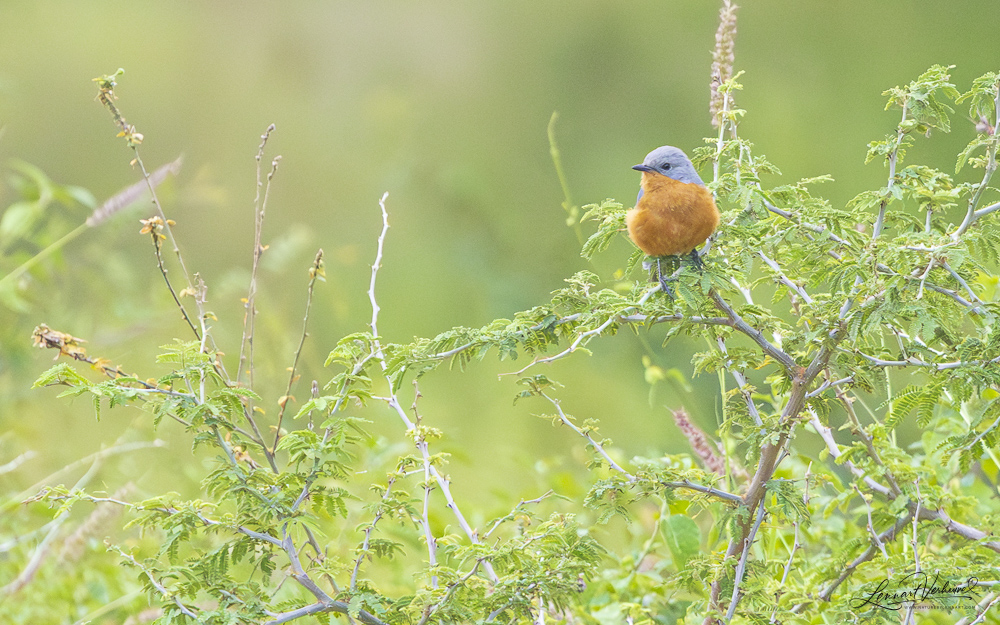
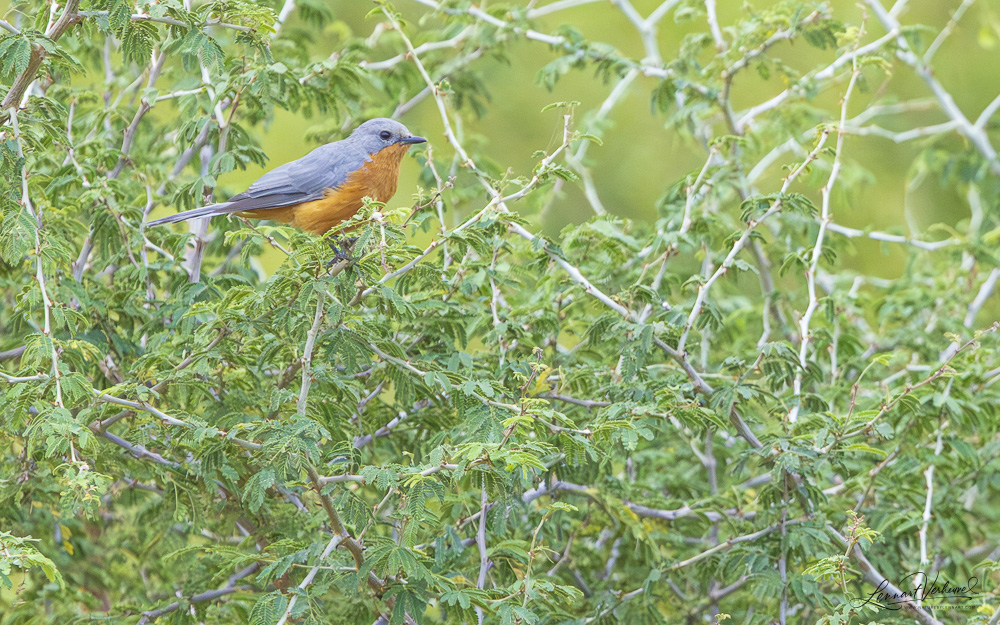
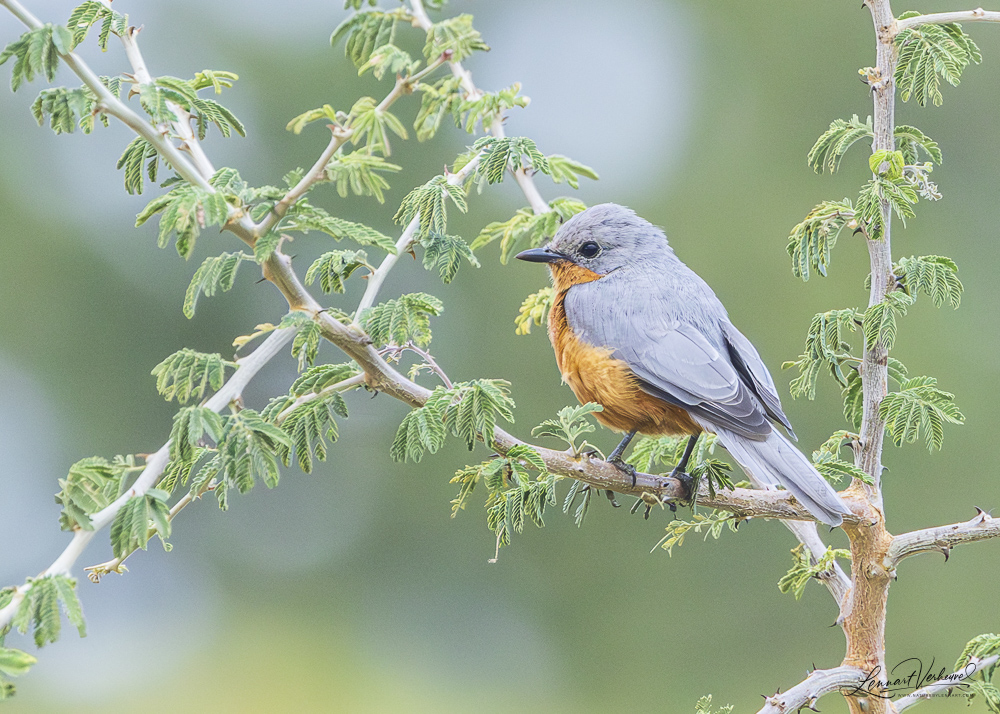
Silverbird
I was also happy to see a Yellow-winged Bat twisting above our dinner table again—surely the coolest bat in Uganda!
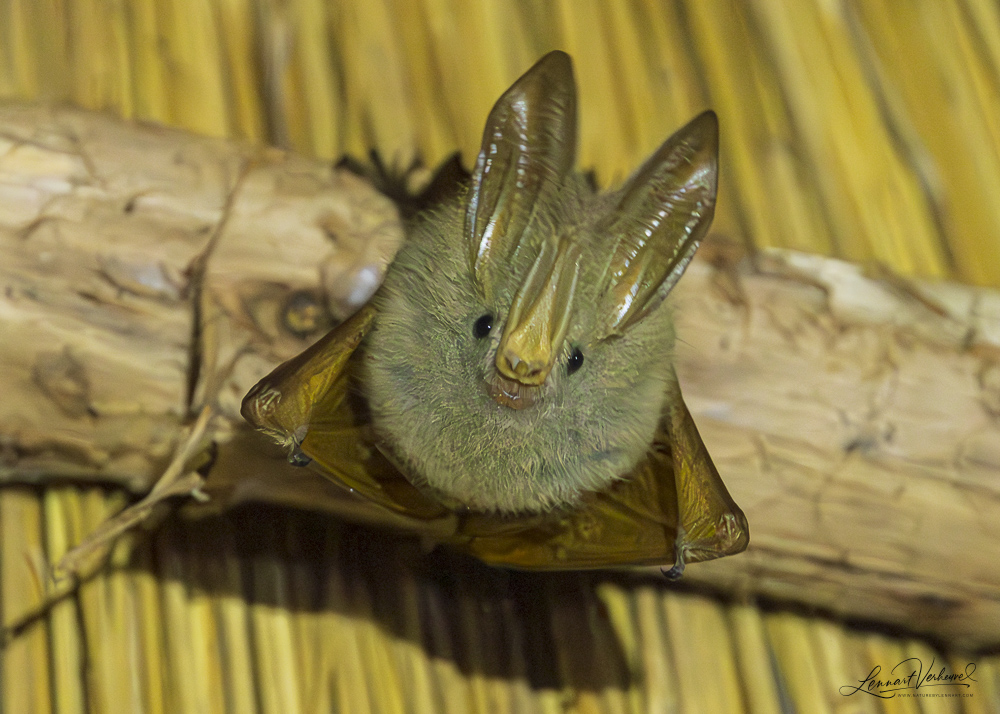
Yellow-winged Bat
The day began with sightings of Lelwel Hartebeest. This is a subspecies of Hartebeest that looks much paler than the “regular” ones I had seen before. Their appearance never fails to amuse me.
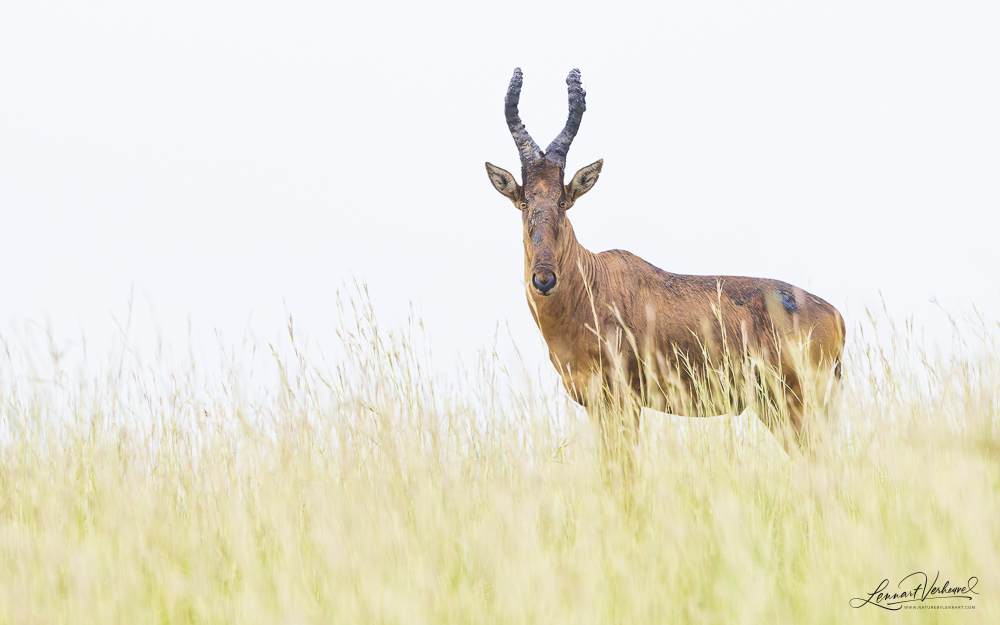
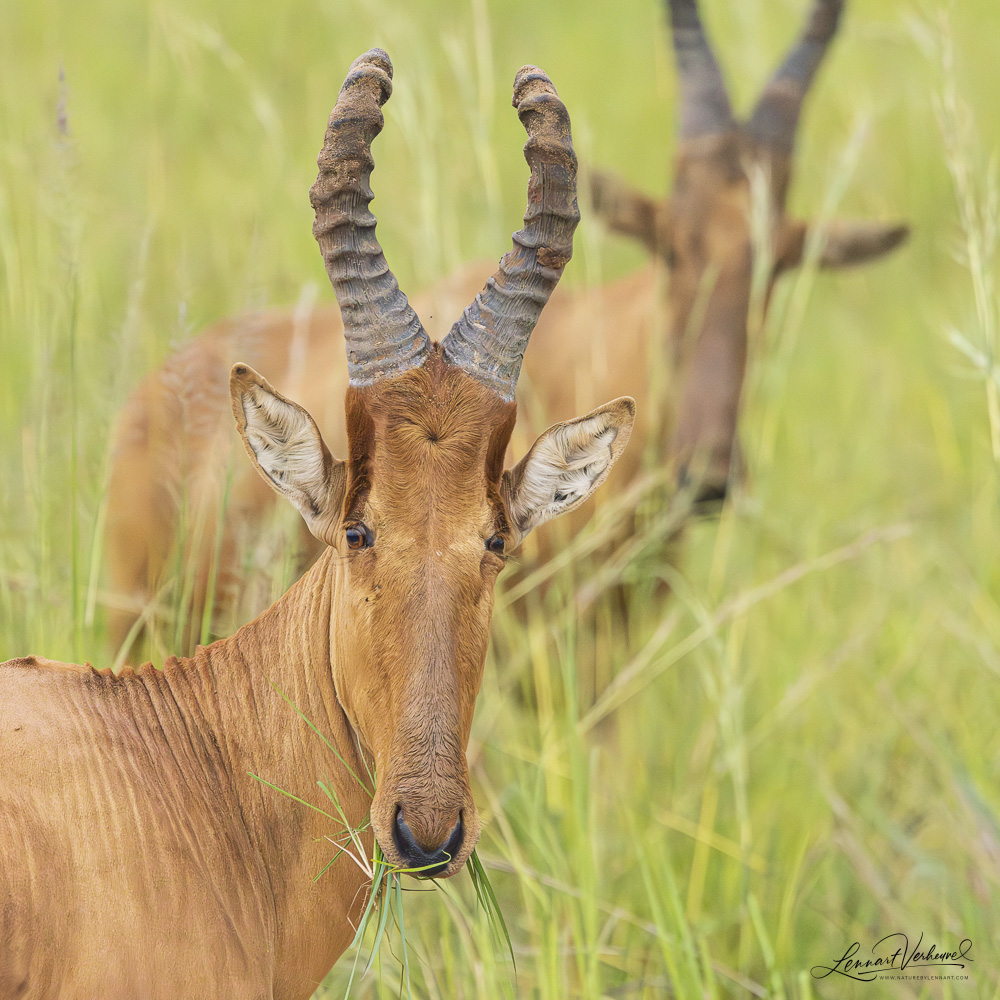
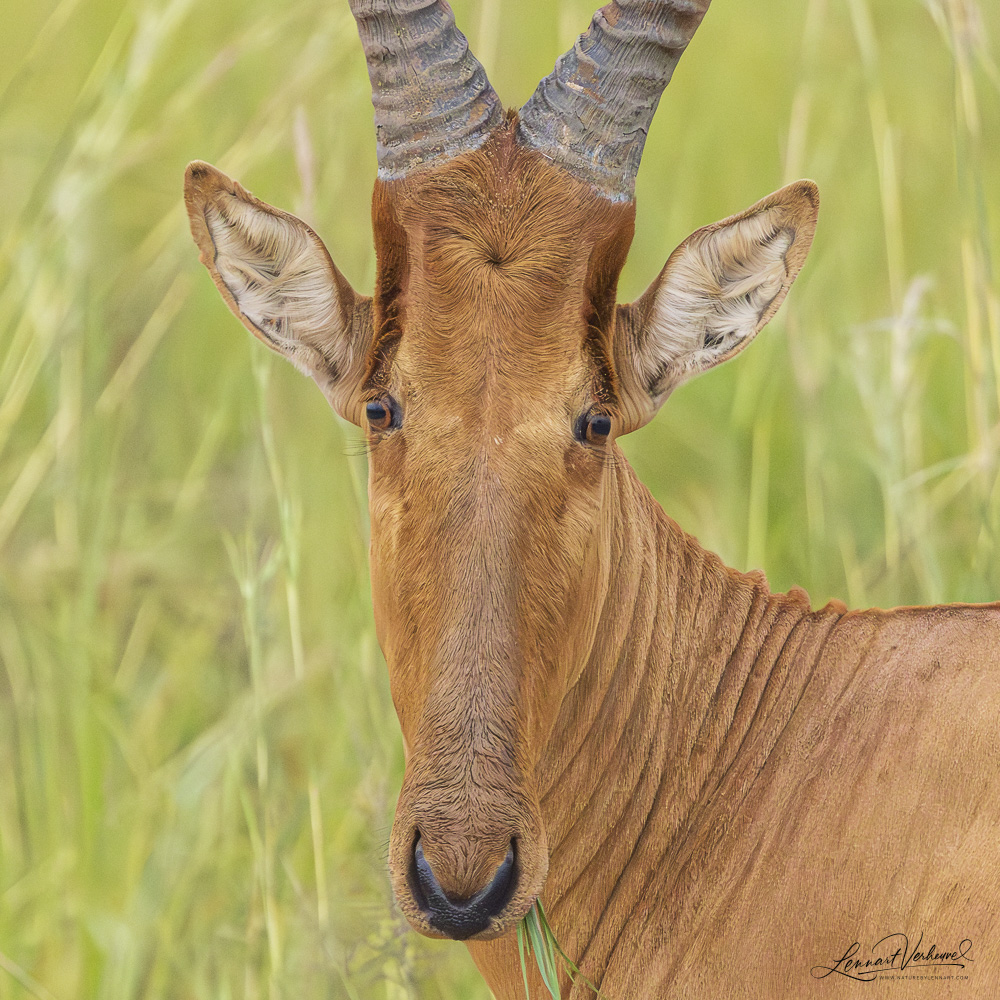
Lelwel Hartebeest
Next came a very small antelope: the Oribi. I initially thought this species would be harder to find, but it turned out to be quite common, and we saw many individuals.
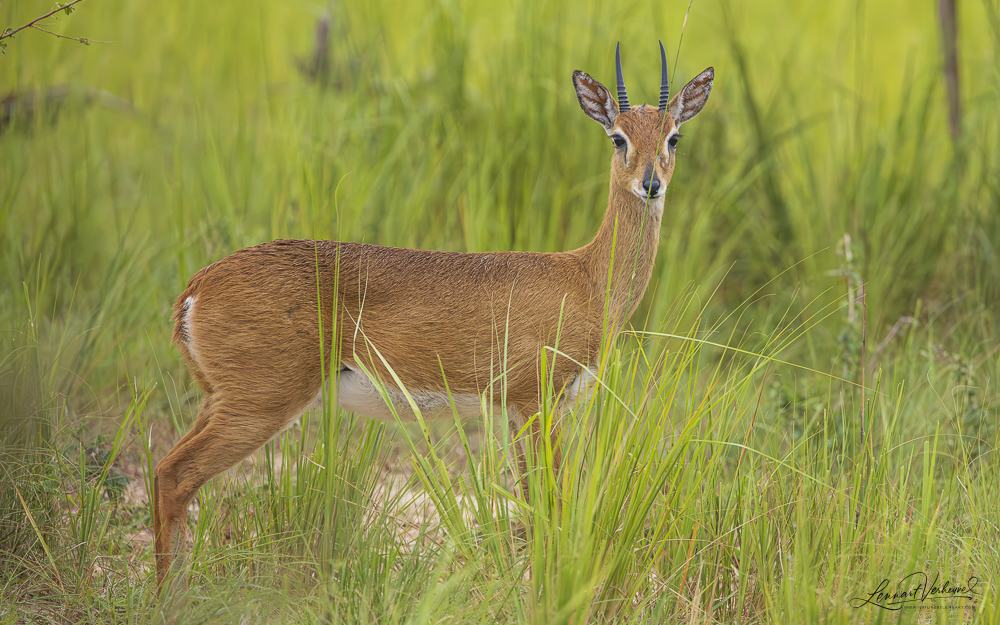
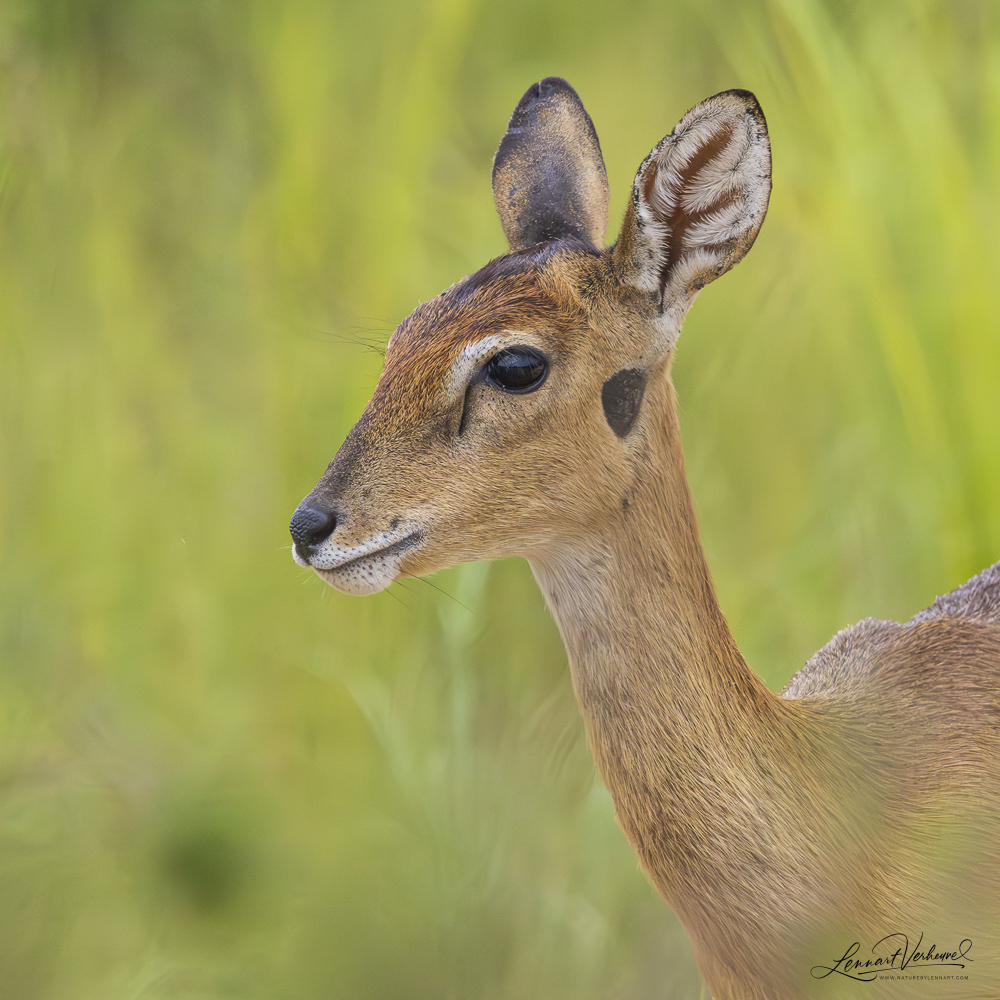
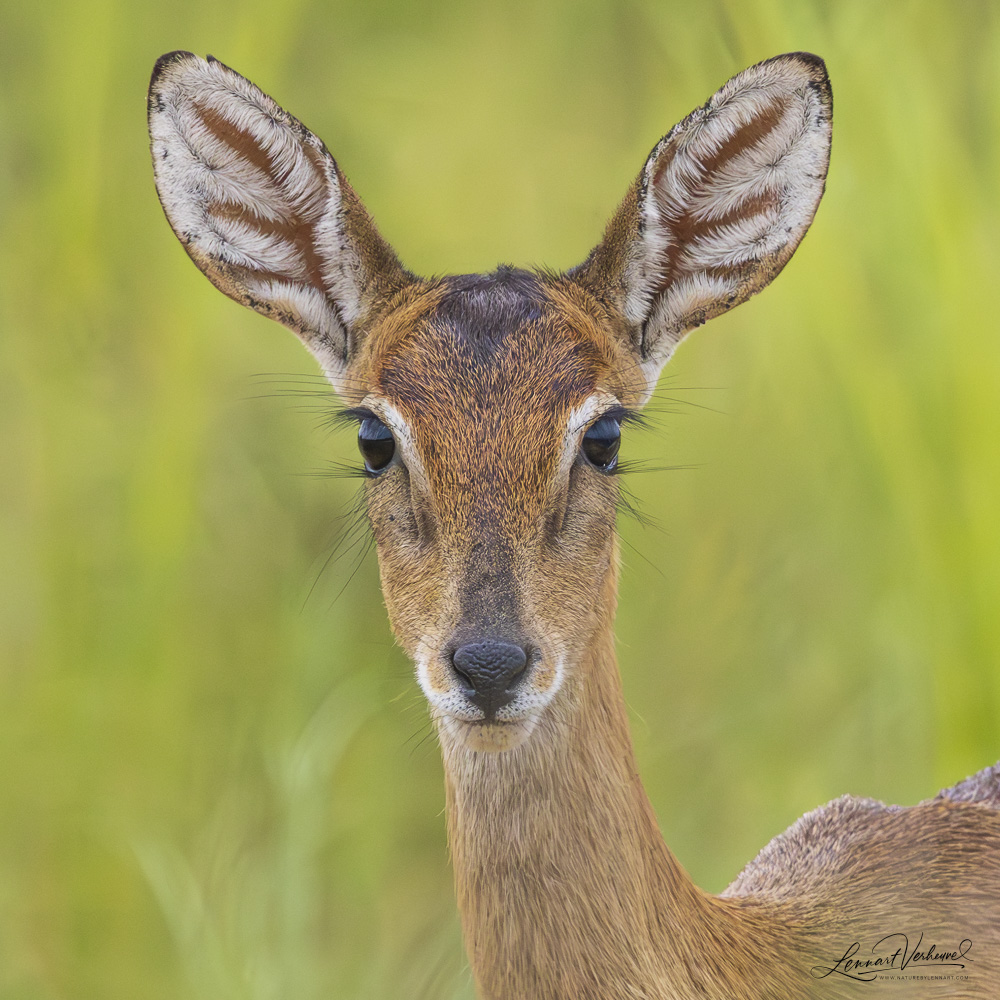
Oribi
Elephants were scarcer here than in Queen, though we did see one.
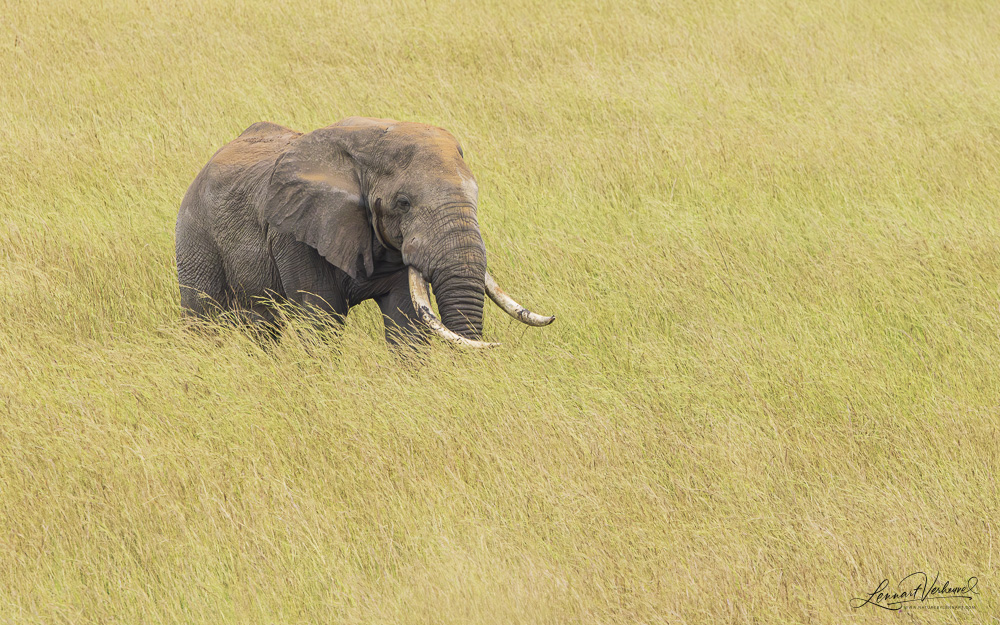
African Savanna Elephant
Giraffes, on the other hand, were common and remain fascinating to watch. The species we saw in Uganda is also known as the Rothschild’s Giraffe, a subspecies of the northern or Nubian Giraffe that now forms the genus that we used to just call ‘giraffe’, together with three other giraffe species.
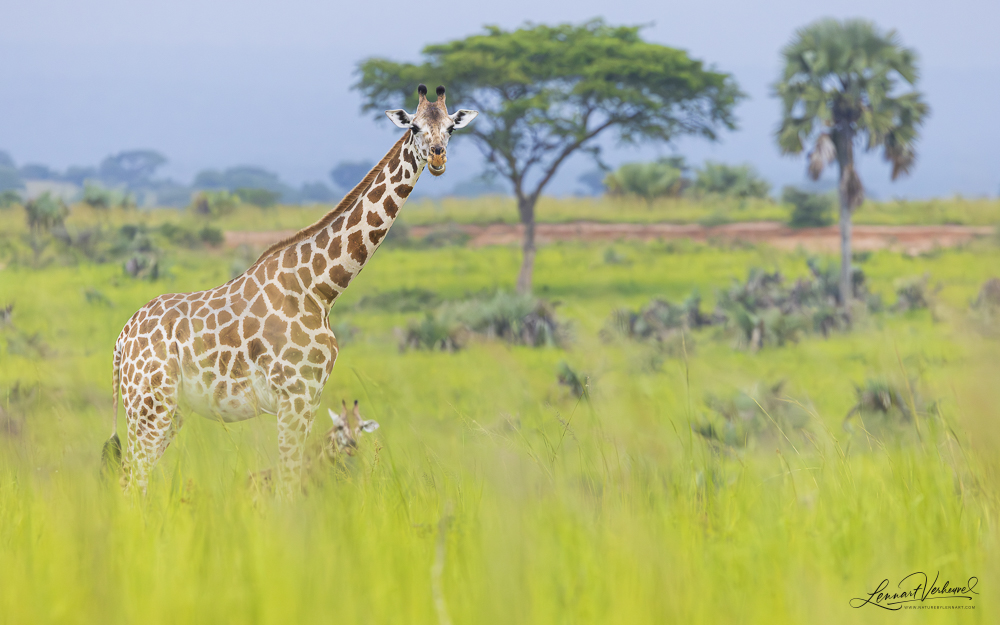
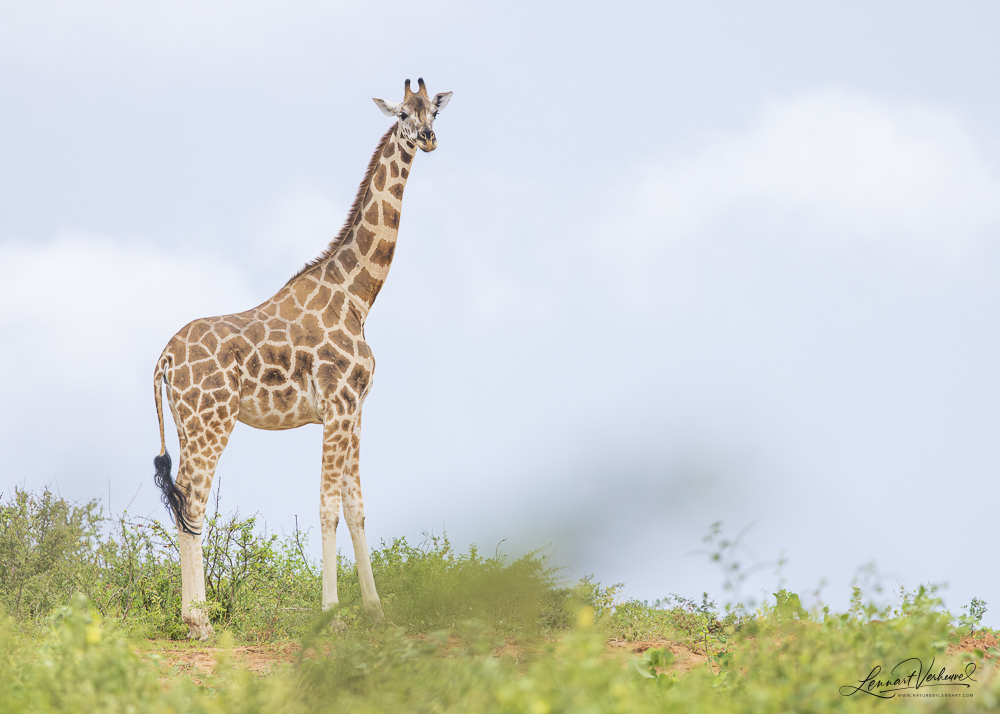
Northern Giraffe
Among the hoofed animals like buffaloes, giraffes, and hartebeests, we saw several Piapiacs. This crow-like bird looks quite unique and actually forms a genus all on its own. Although its black color and behavior resemble a crow, it’s actually more closely related to jays. Its closest relatives are the Asian ground jays such as the Mongolian Ground Jay. I always enjoy seeing such genetically unique animals— and there are actually quite a few species.
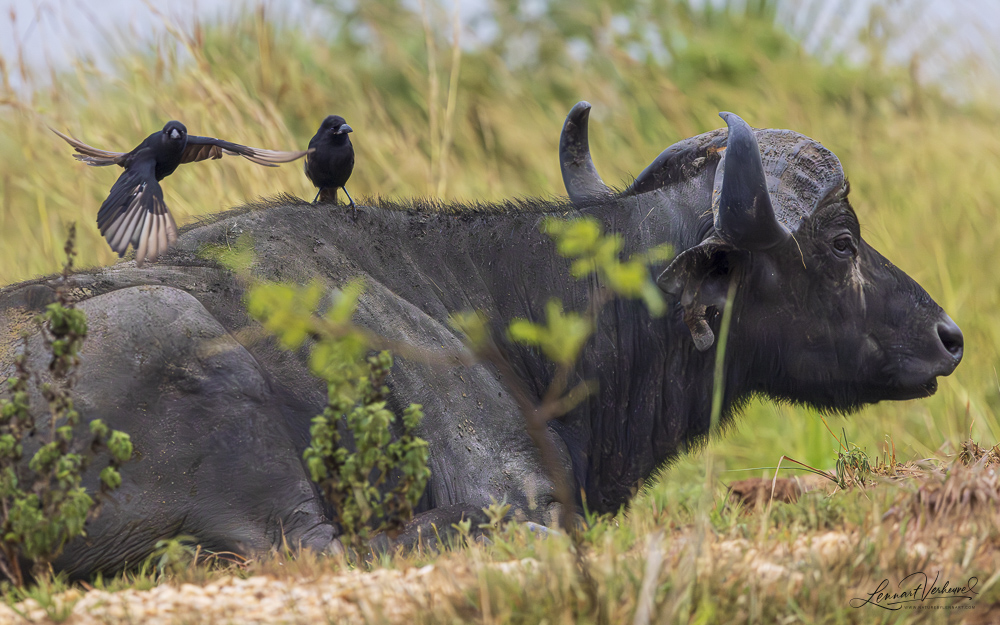
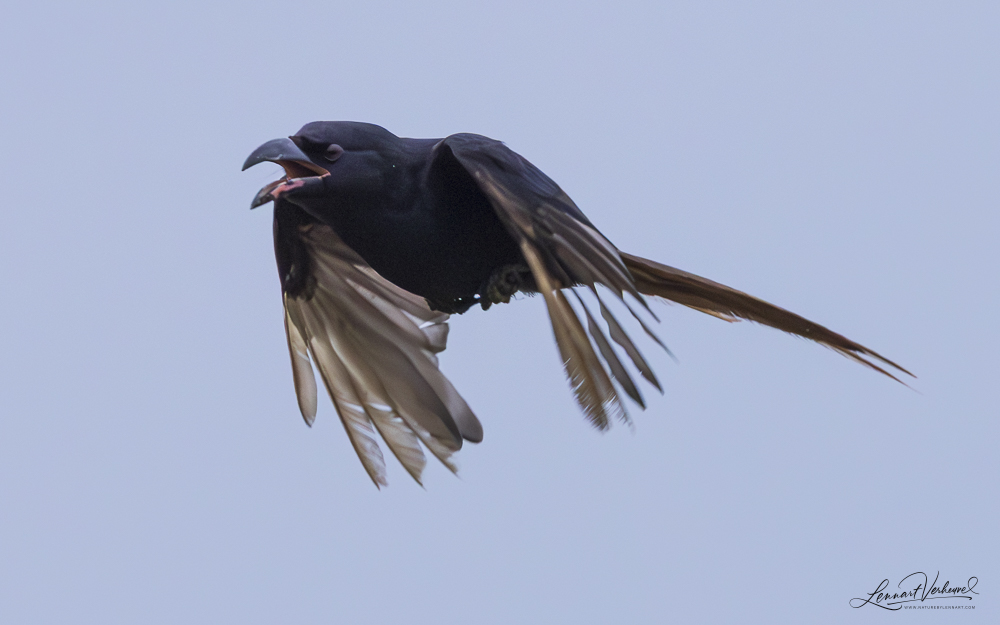
Piapiacs with African Buffalo
Of course, we also tried to find some of the larger predators. From a distance, we spotted a Spotted Hyena, though it stayed far away.
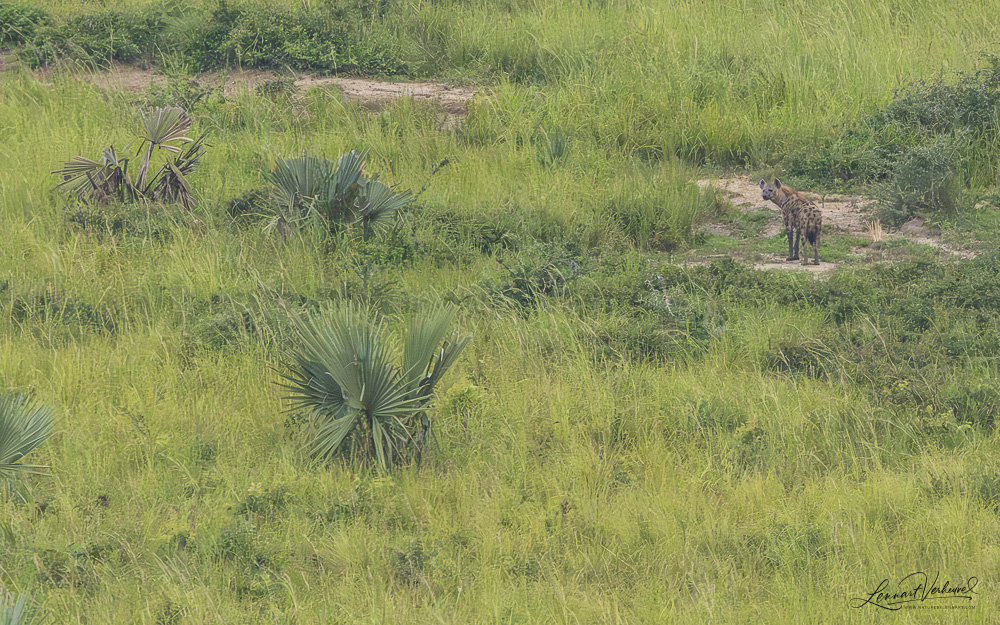
Spotted Hyena
Closer by, however, was a Leopard! I found it with my thermal scope in the tall grass, but unfortunately, it slipped away before I could take any good photos.
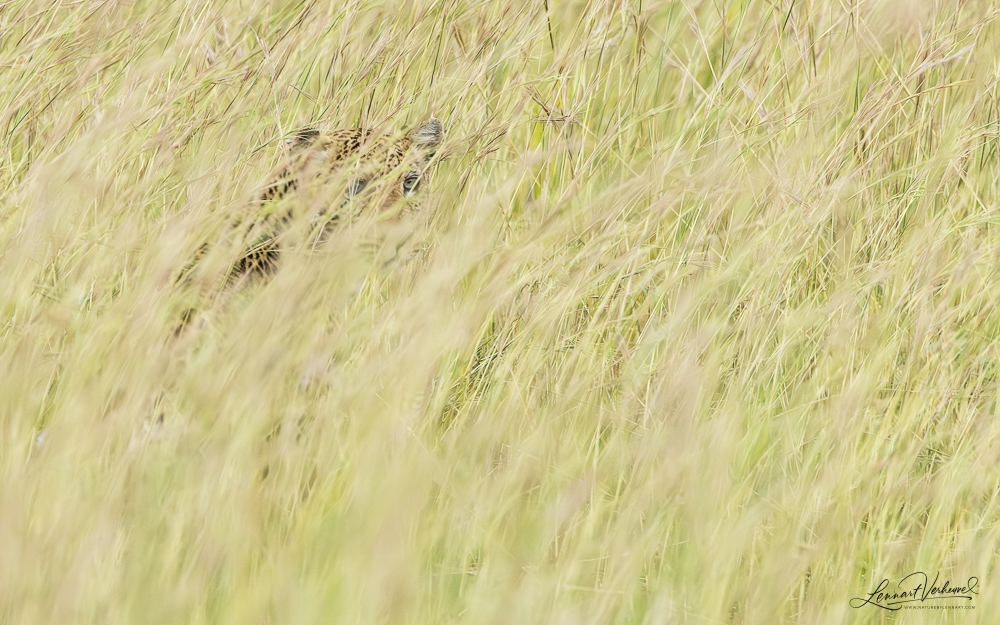
Leopard
We did get good photos of the fastest monkey in the world: the Patas Monkey. This species lives in groups on open savanna, and we had a nice observation.
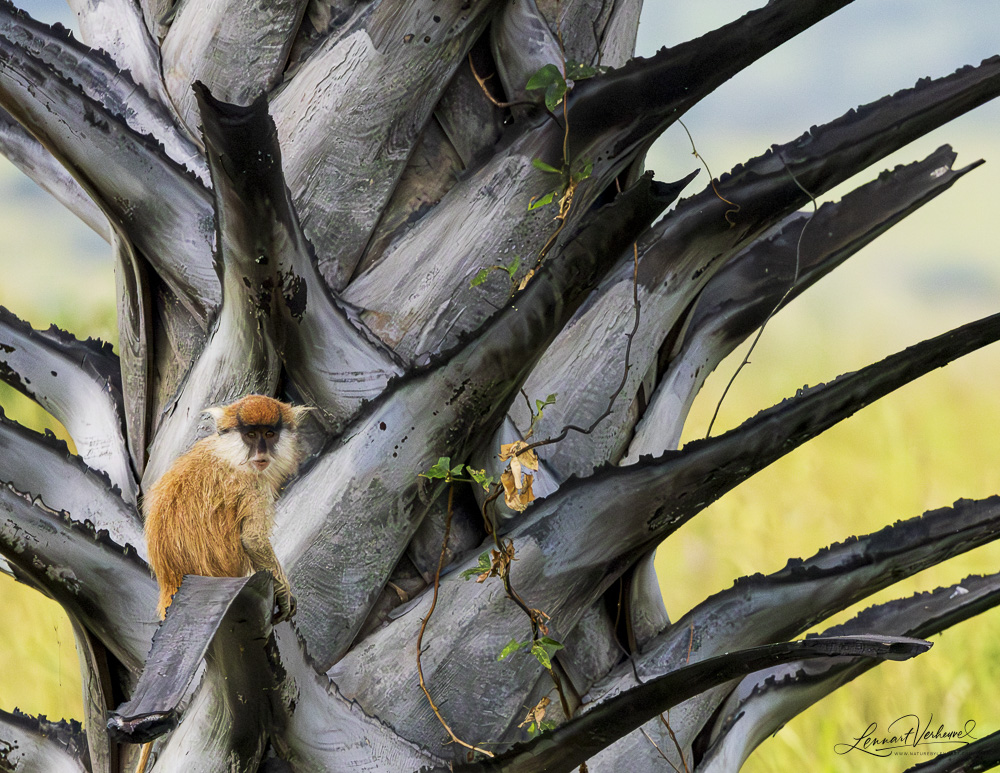
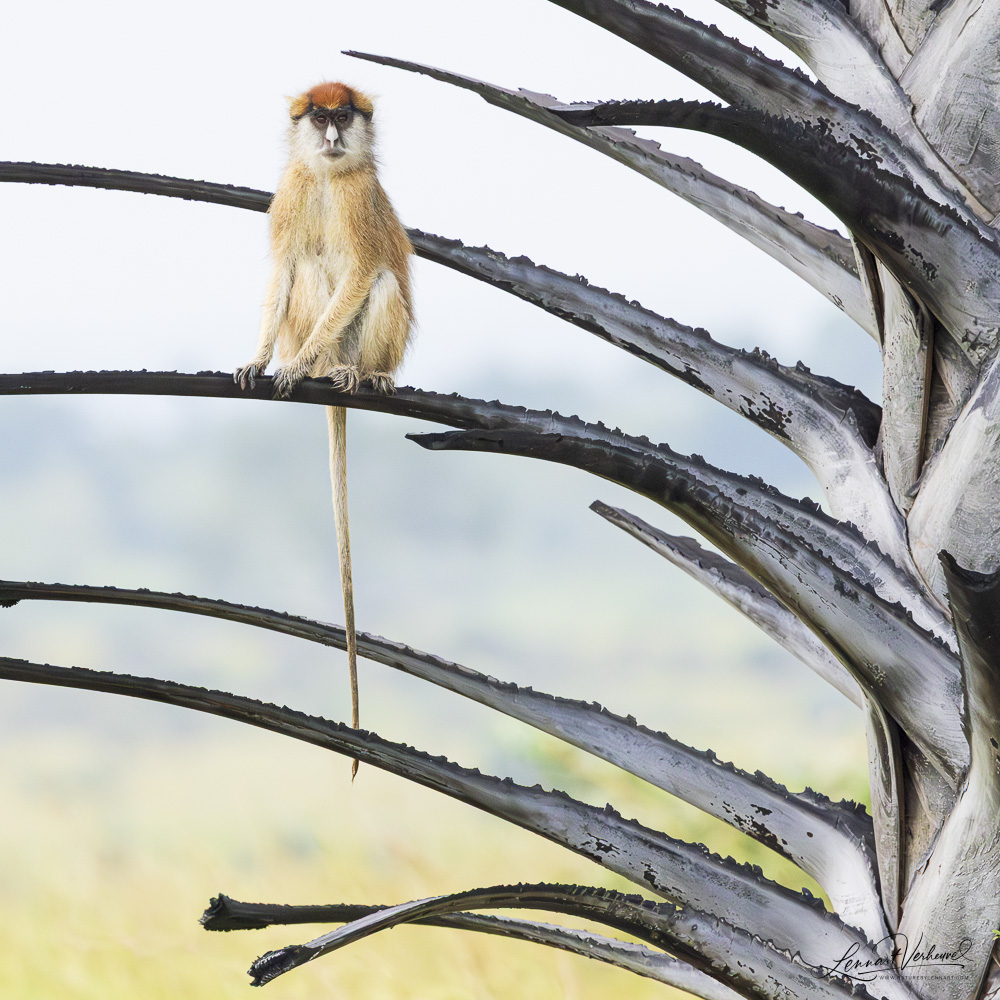
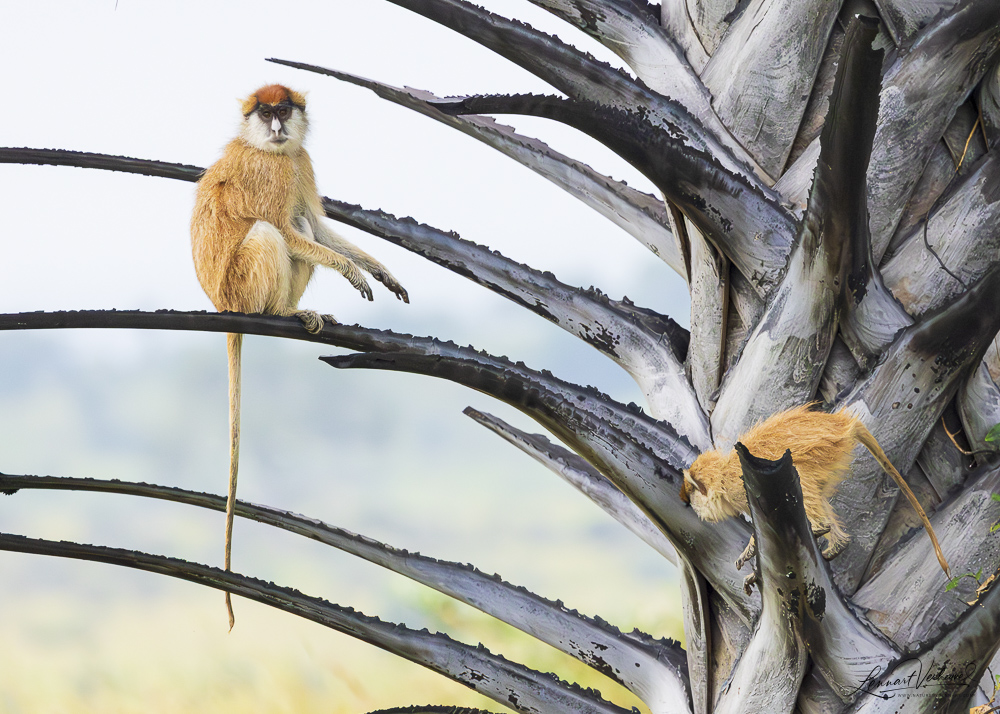
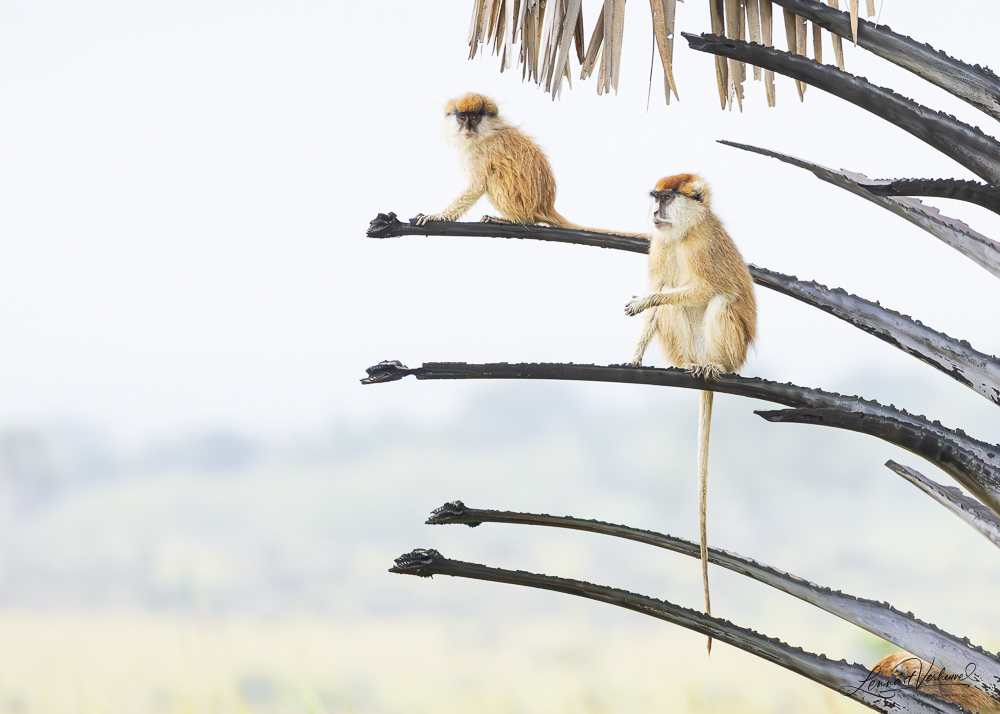
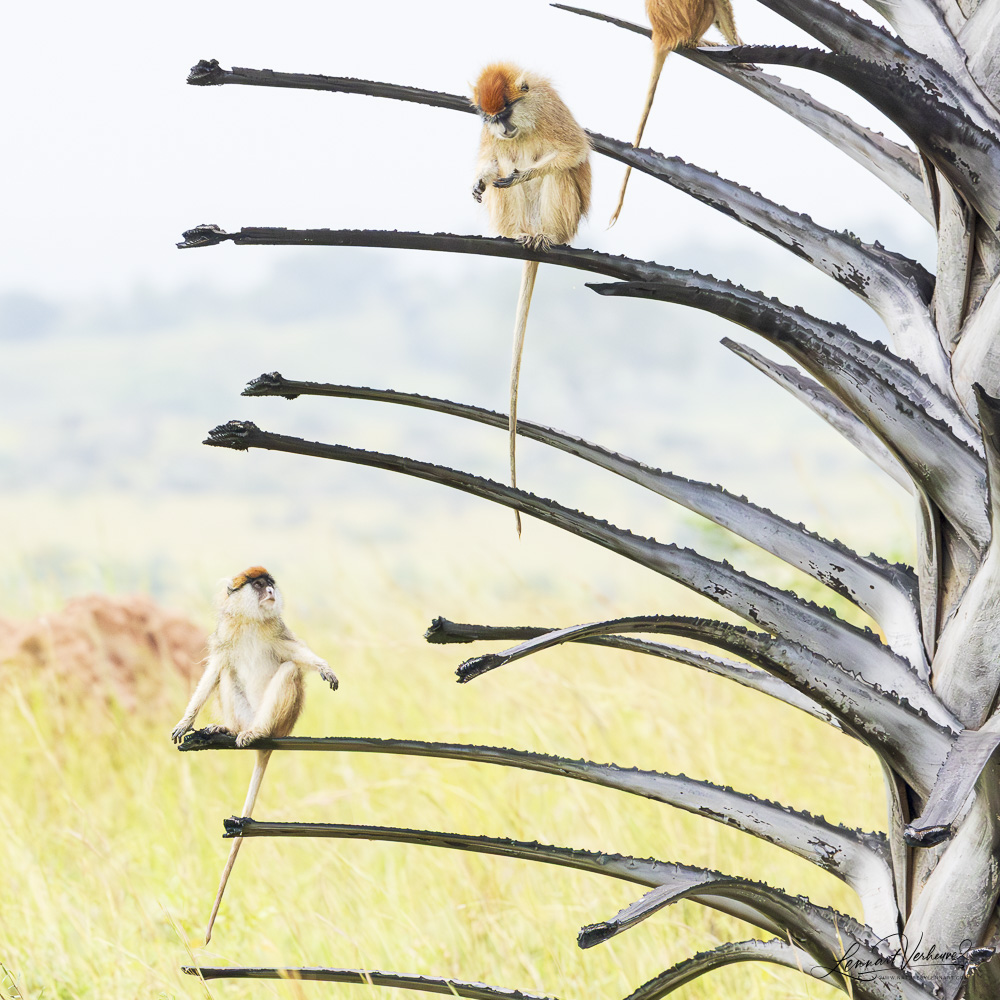
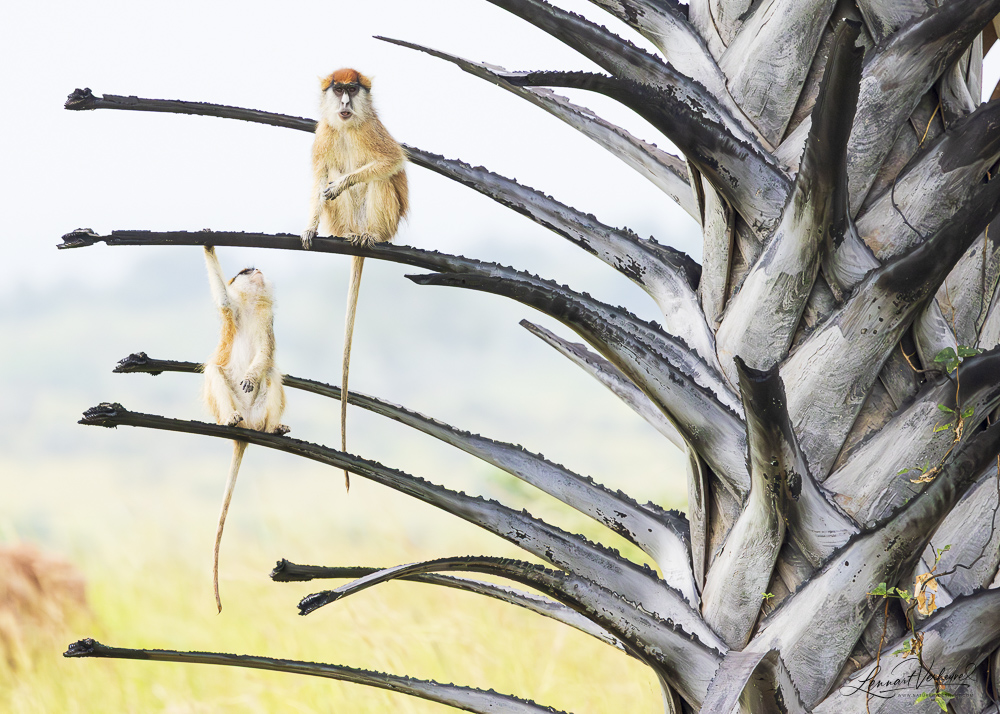
Patas Monkey
We were also very happy with a beautiful sighting of Abyssinian Ground Hornbills. These unique birds were high on our wish list, and they were new for me as well. We could watch their characteristic foraging behaviour up close.
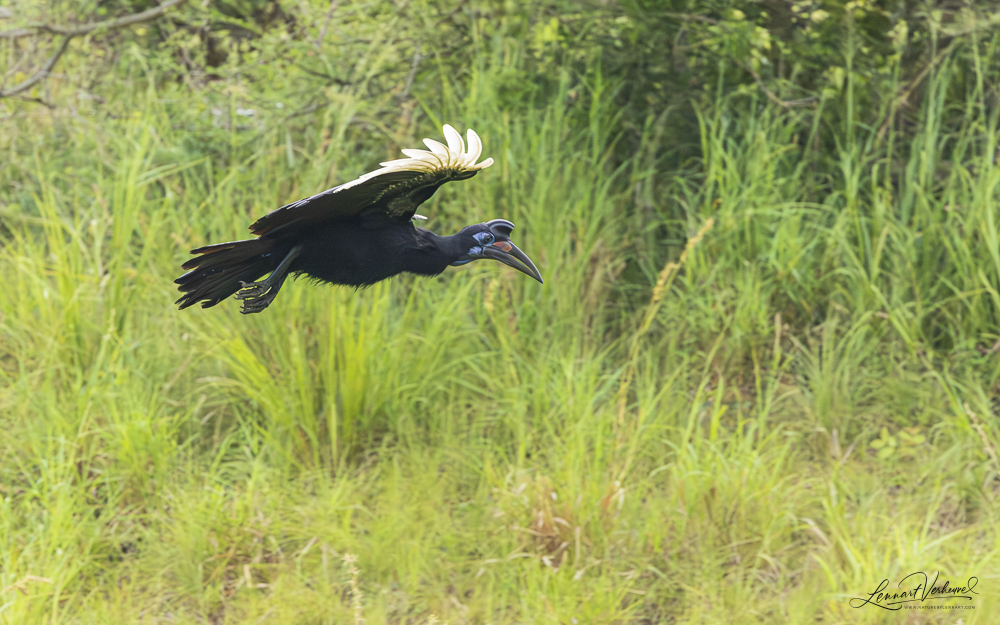
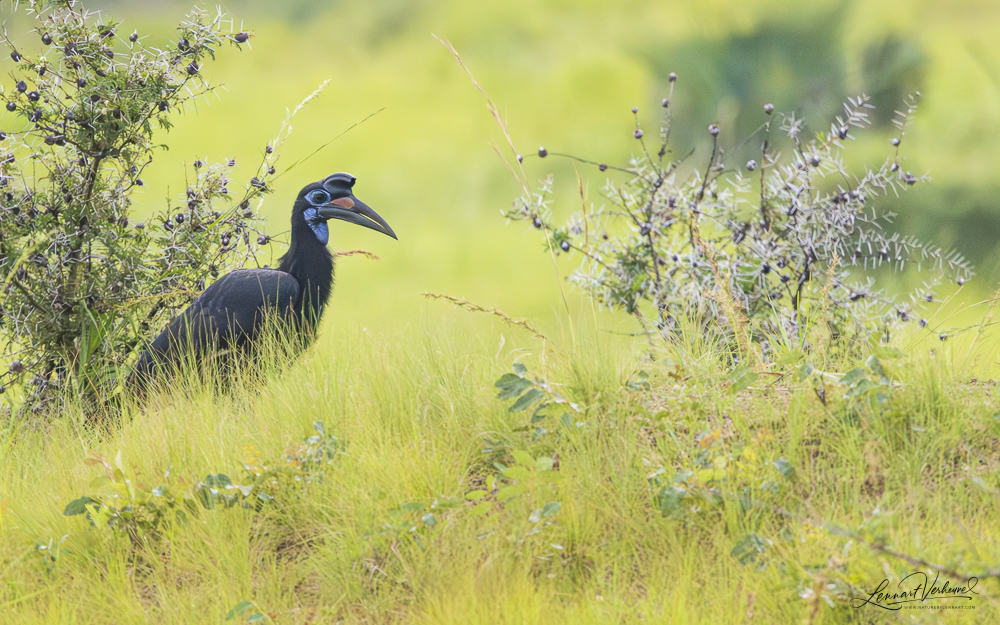
Abyssinian Ground Hornbill (female)
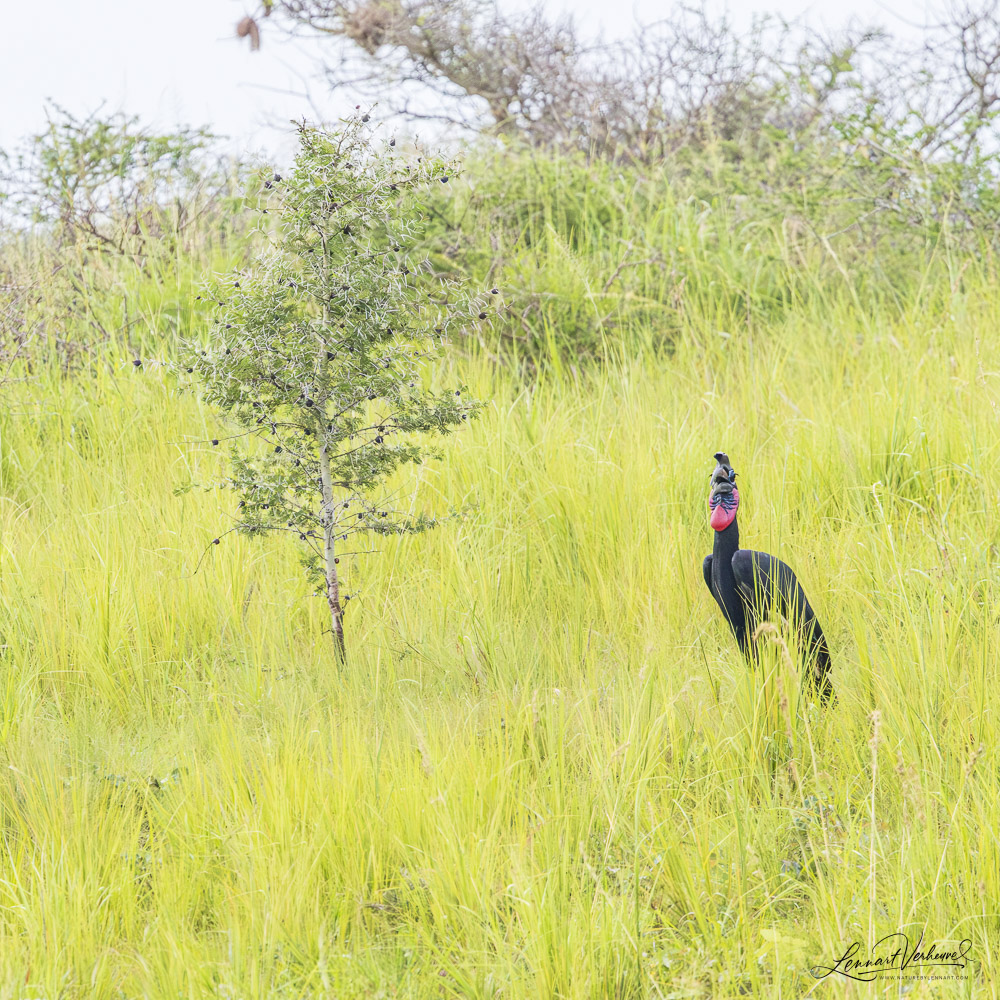
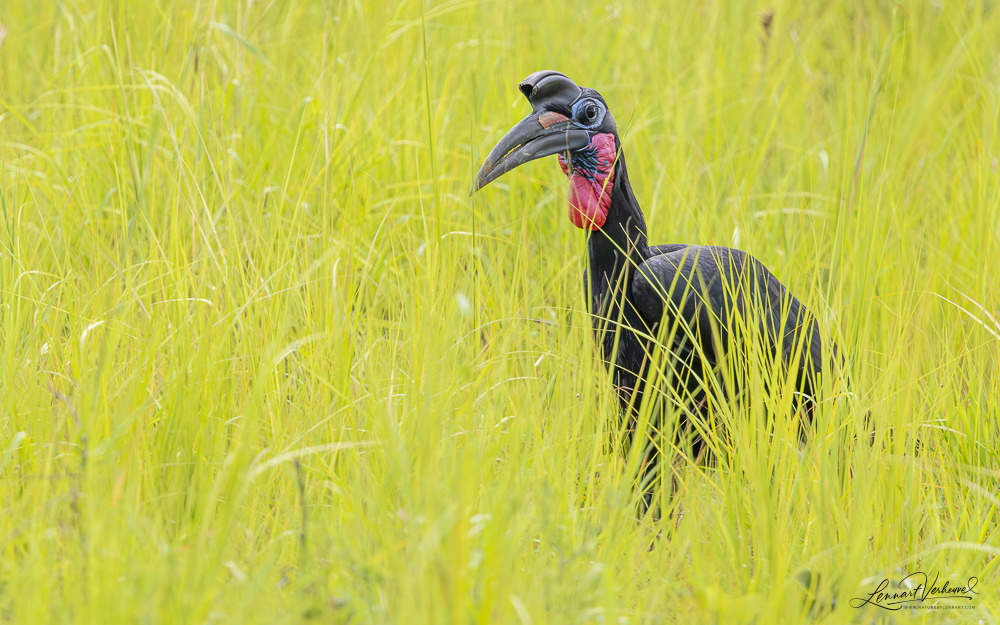
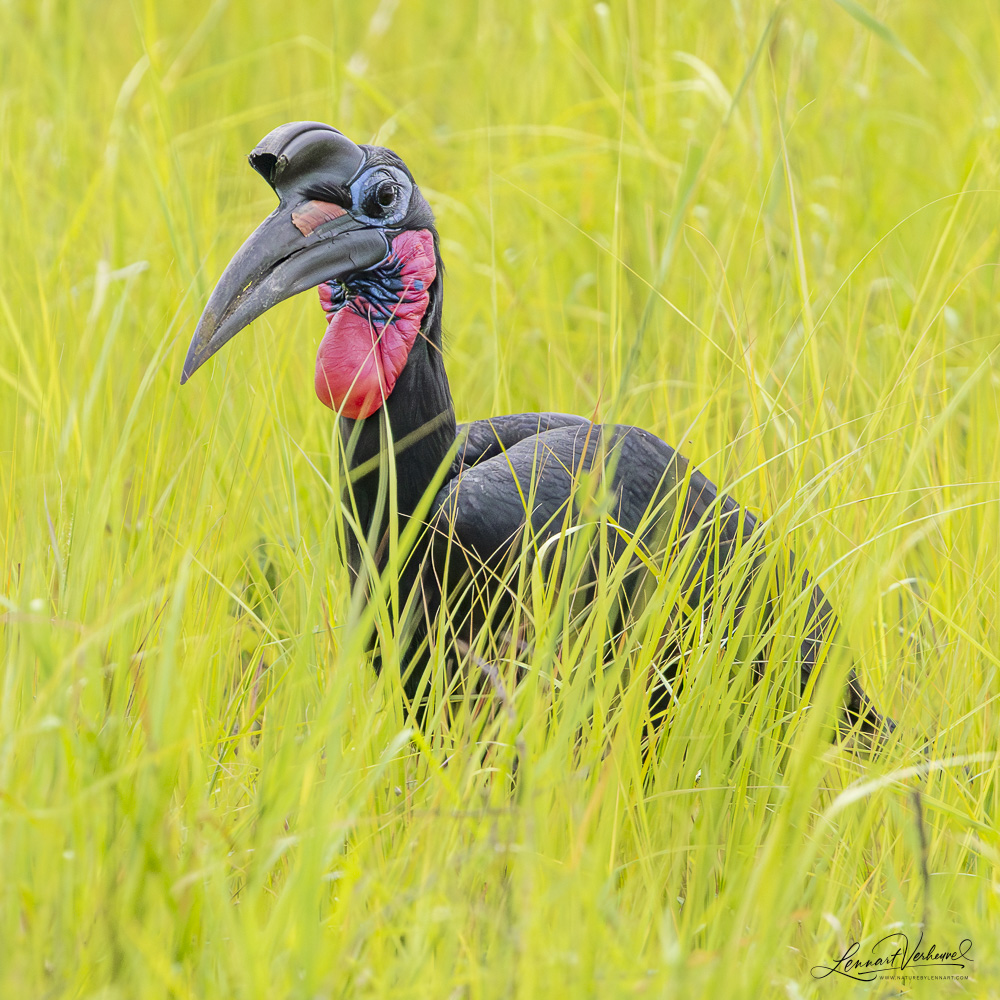
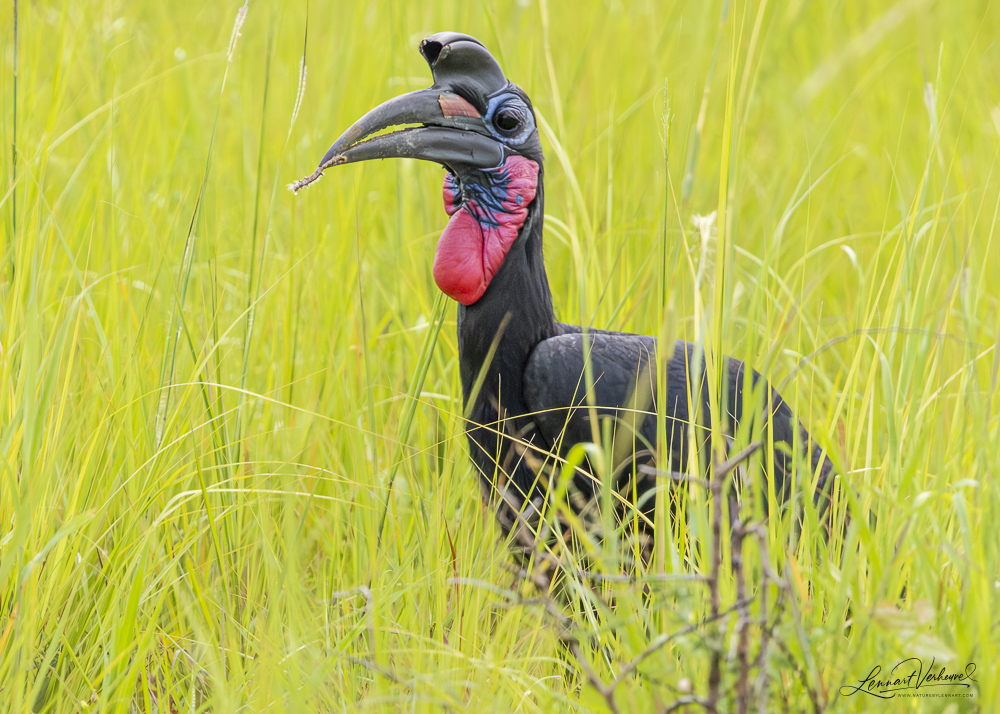
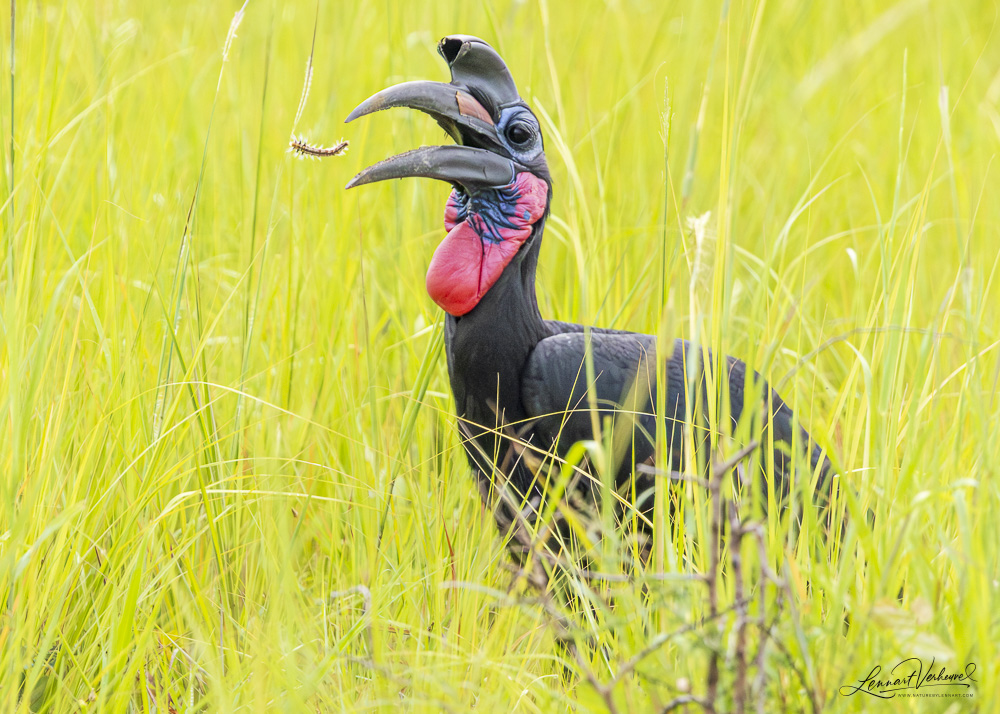
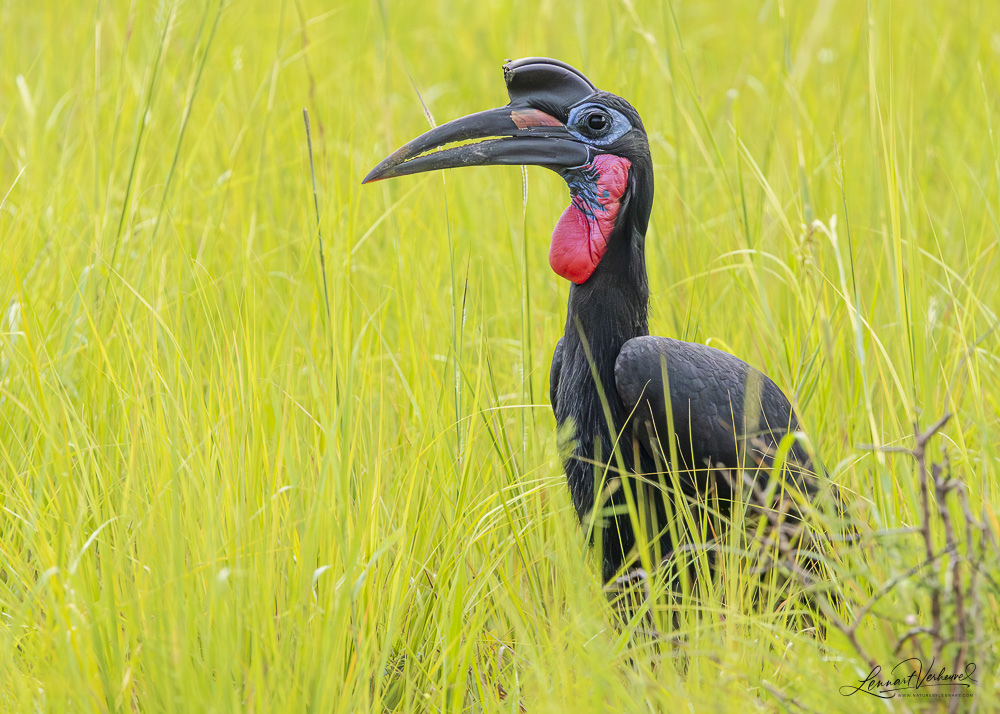
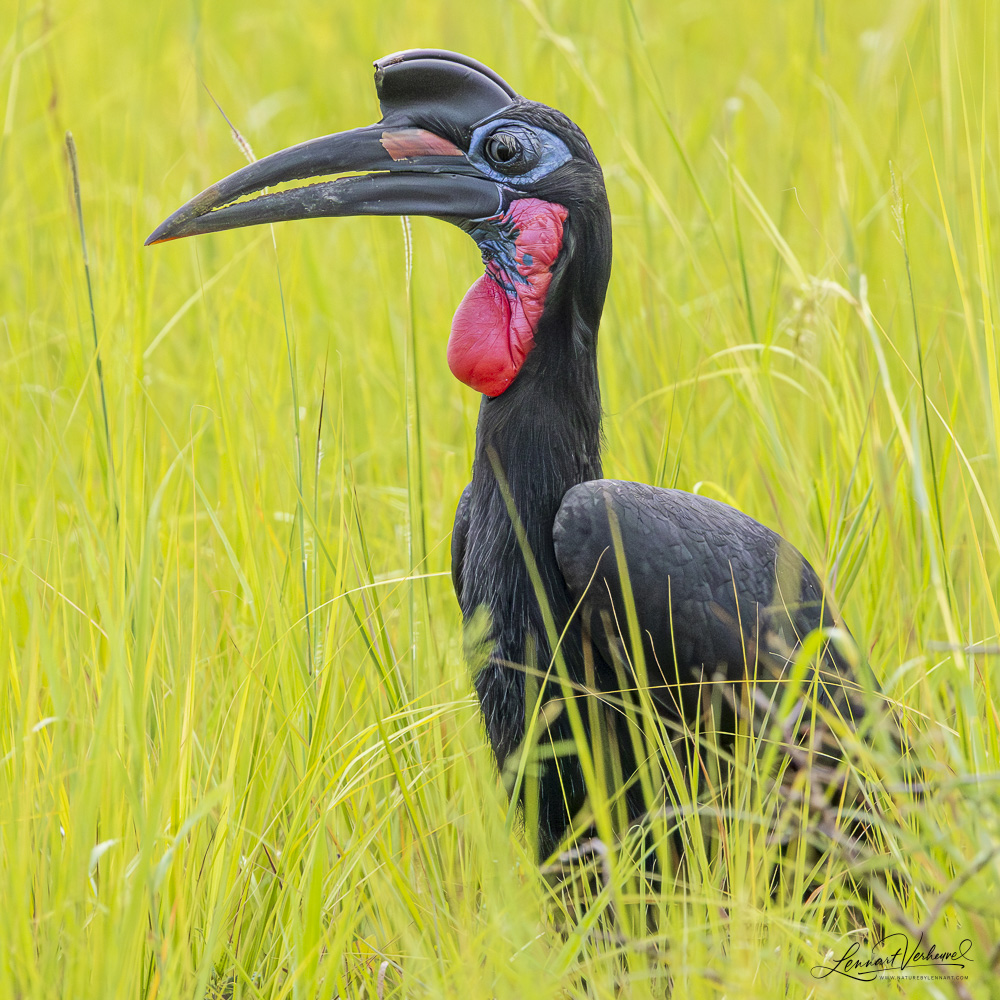
Abyssinian Ground Hornbill (male)
Among smaller birds, we saw Vitelline Masked Weaver, Speckle-fronted Weaver, and also a male Northern Red Bishop in its bright breeding plumage.
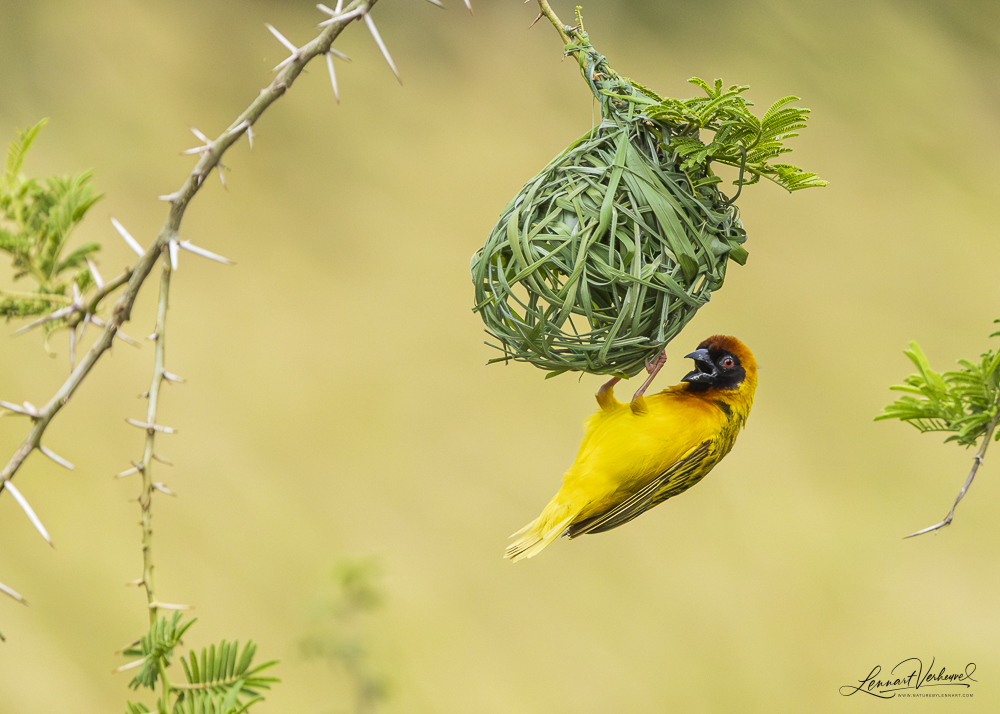
Vitelline Masked Weaver
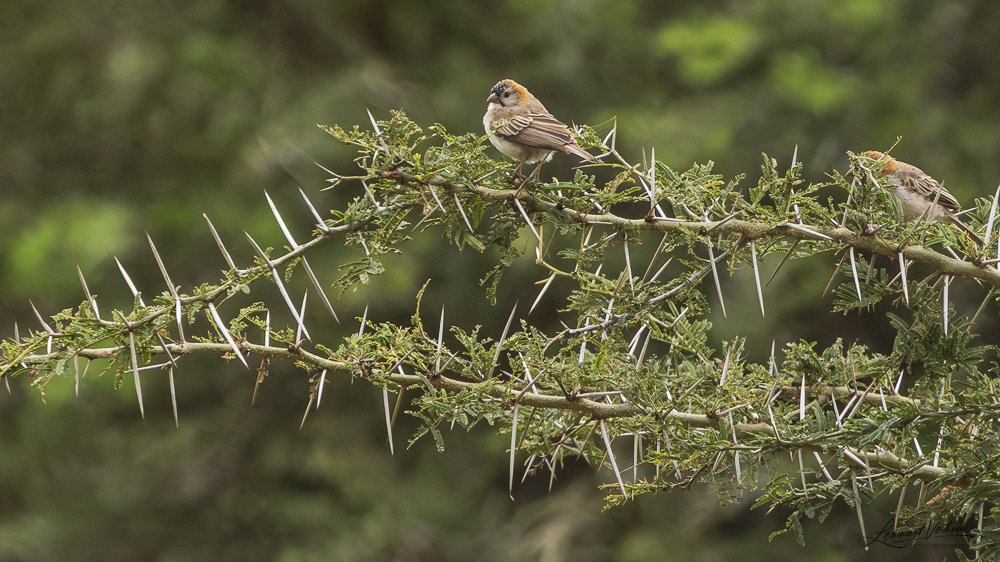
Speckle-fronted Weaver
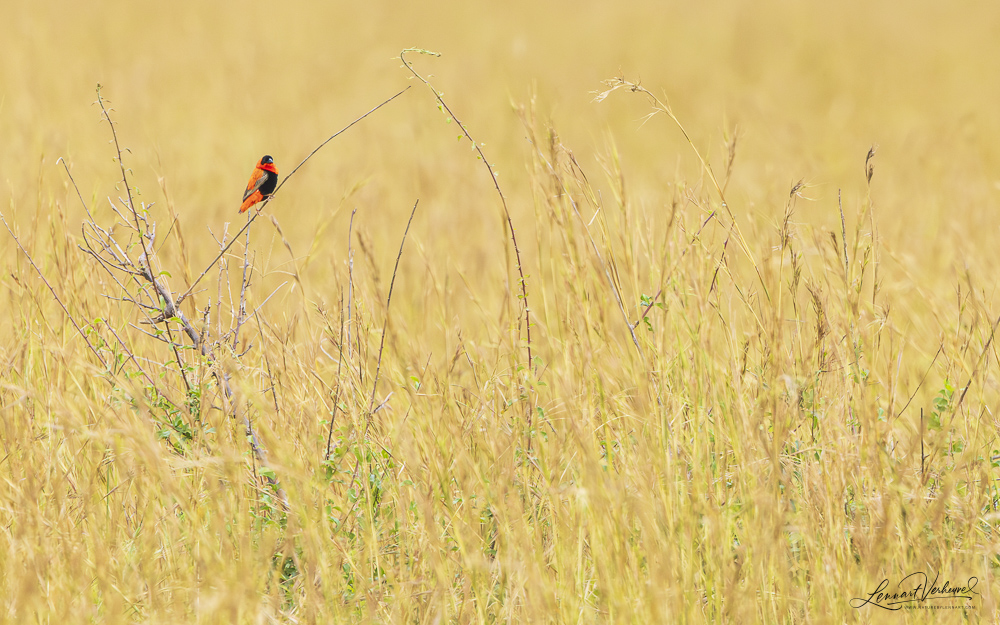
Northern Red Bishop
We were enjoying our time on the savanna, but toward the end of the morning, we had to rush back to catch our boat. We were going on a river trip to the Murchison Falls—the waterfalls that gave the park its name. Naturally, our focus was still on the animals we could see during this trip.
A nice new species was the African Darter. This darter is the African counterpart of the Anhinga in South America and the Oriental Darter in Asia. I had already seen those two, but not this one. Now only the Australasian Darter remains for me. They’re fascinating birds to watch, especially when you see them using their sharp bills to literally dart through the fish.
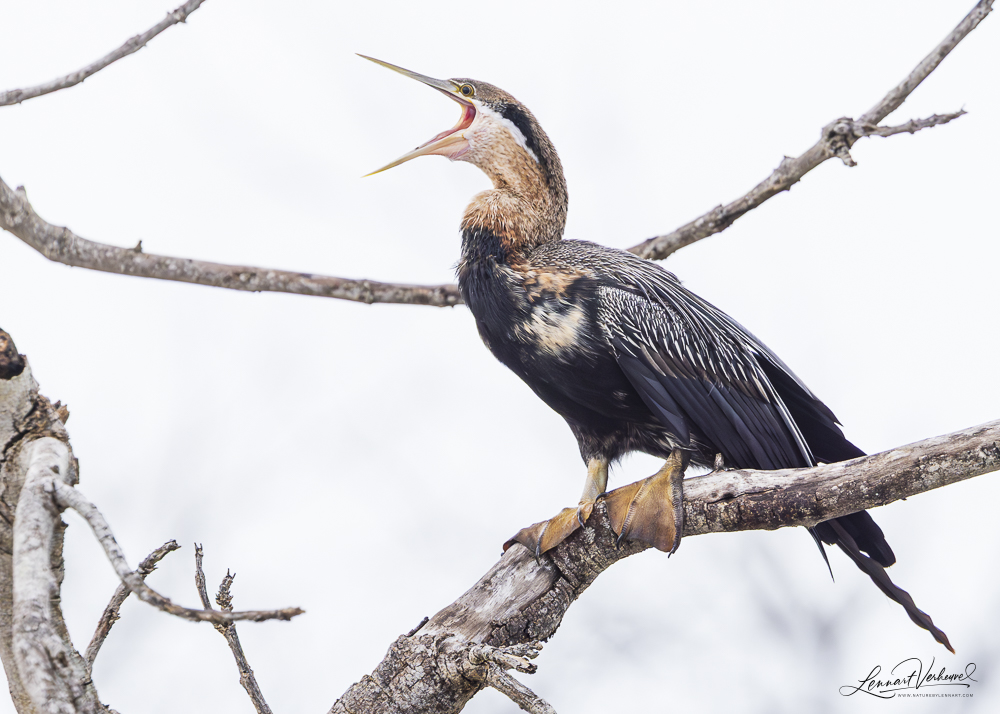
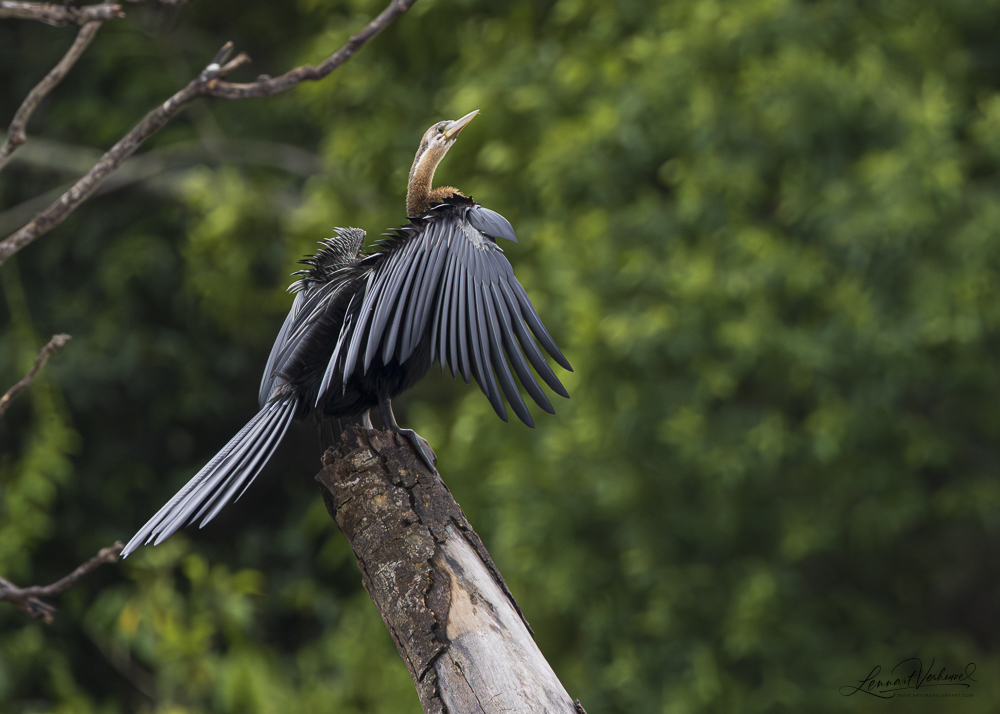
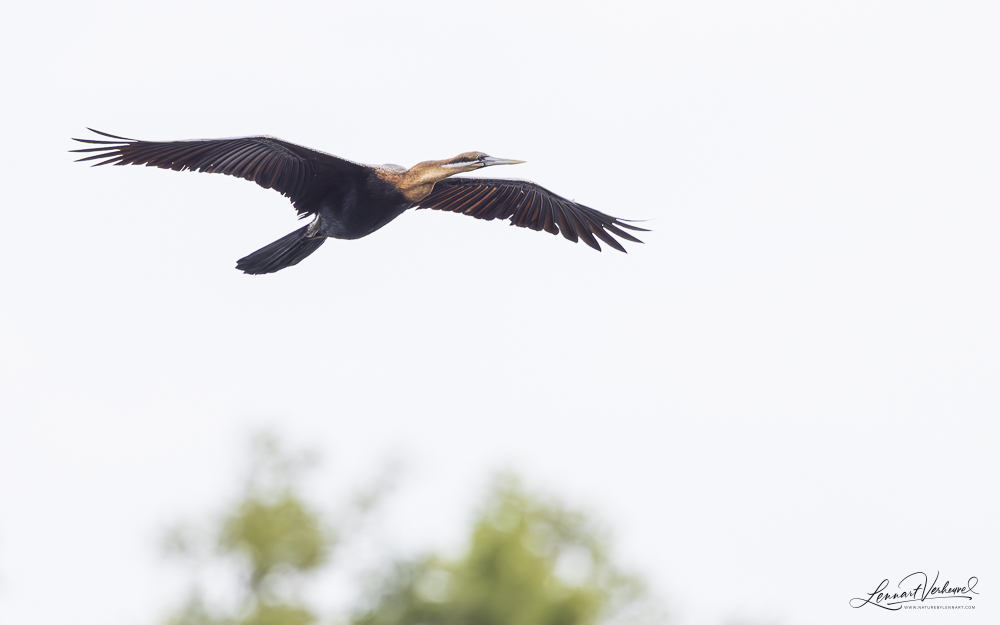
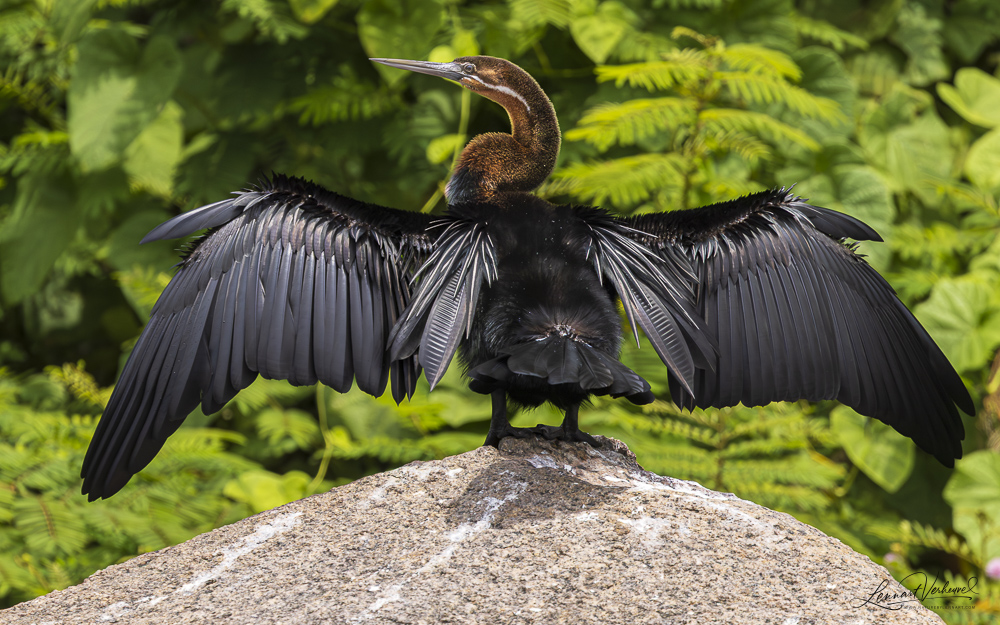
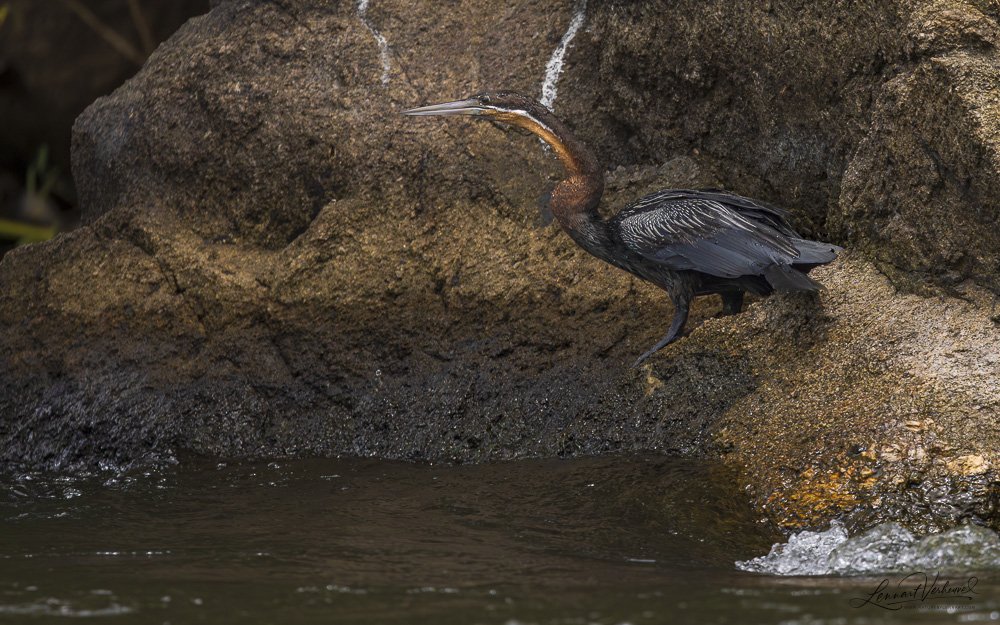
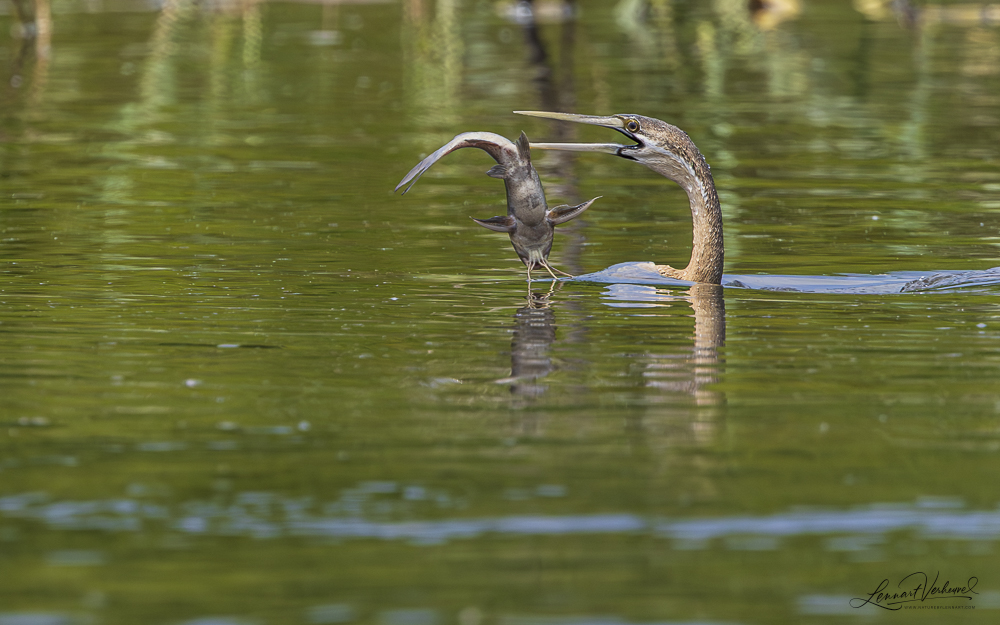
African Darter
We also had a beautiful sighting of the Red-throated Bee-eater, which we had also seen from the boat in Queen.
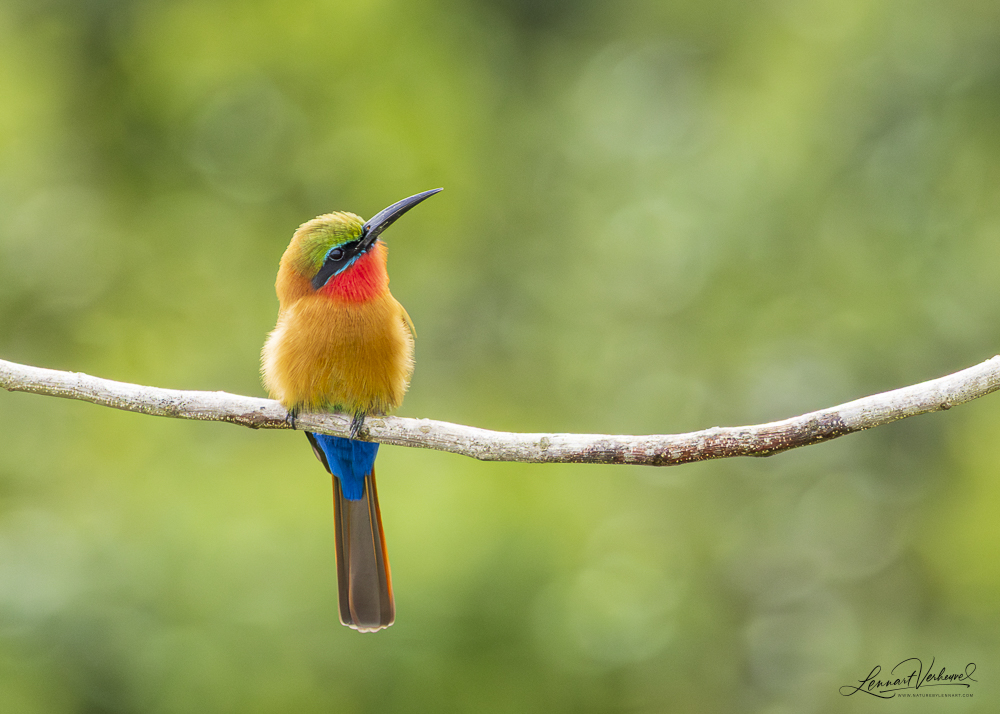
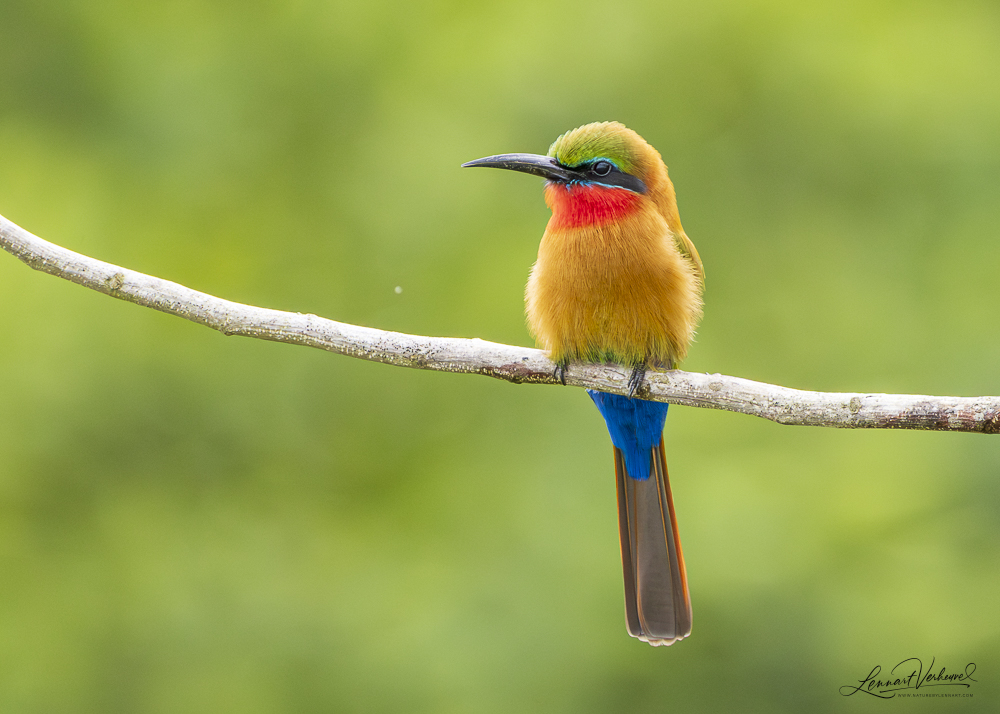
Red-throated Bee-eater
Furthermore we saw the bird that is on the cover of the Birds of East Africa guide: Double-toothed Barbet.
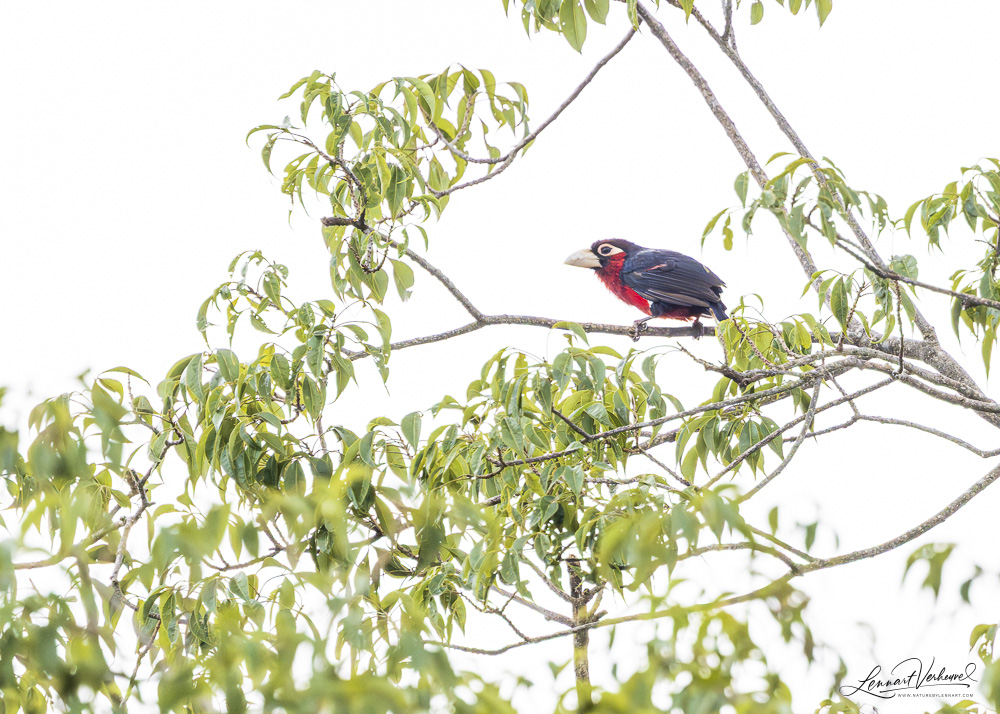
Double-toothed Barbet
The boat trip was another great opportunity to improve my photos of Hippos, and Nile Crocodiles were abundant as well.
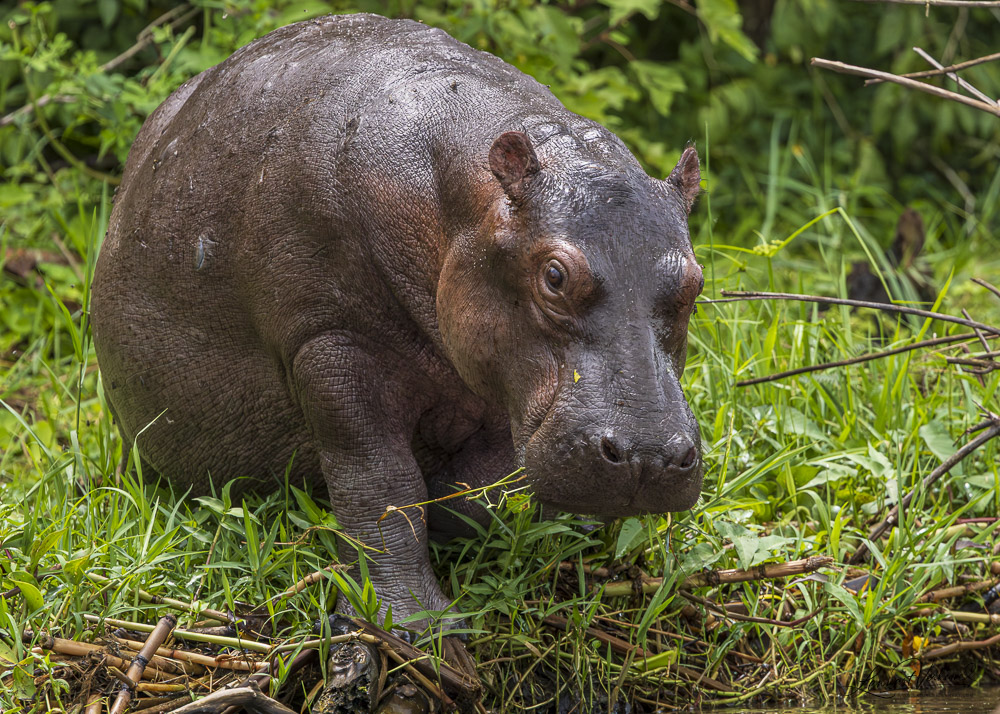
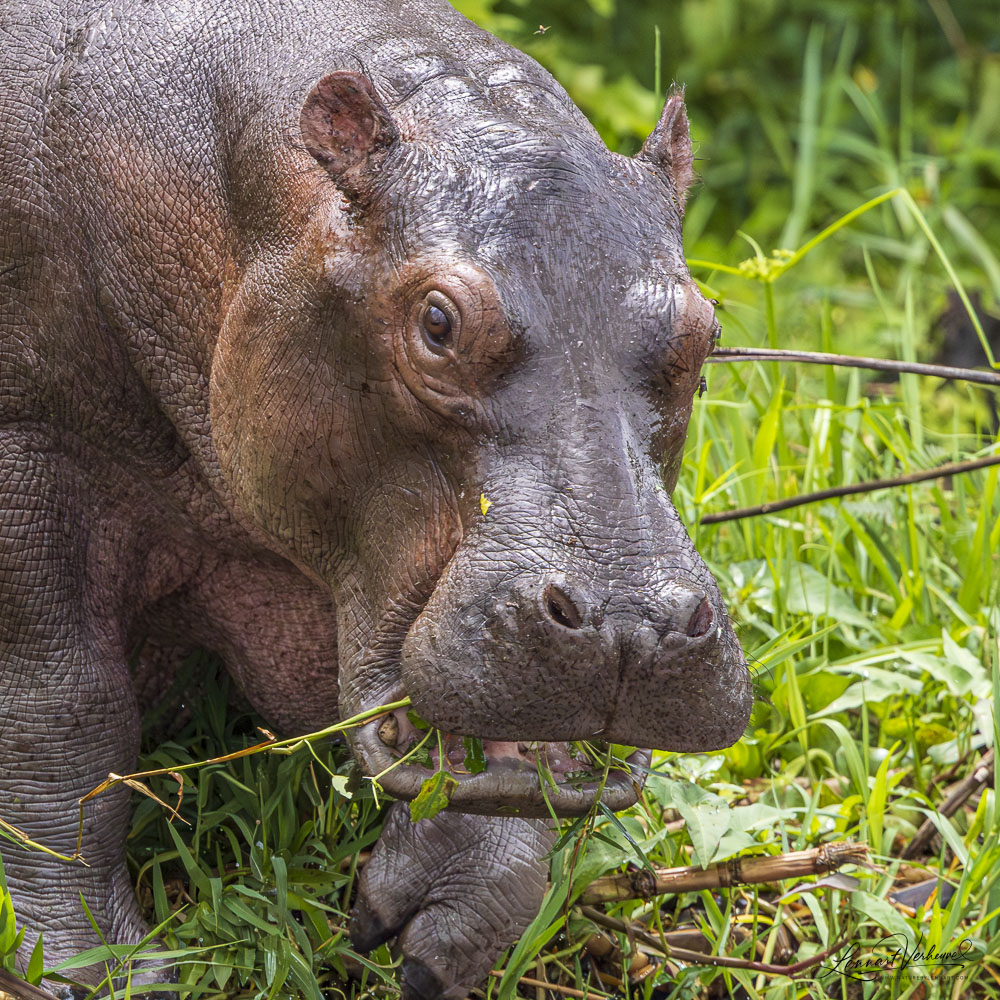
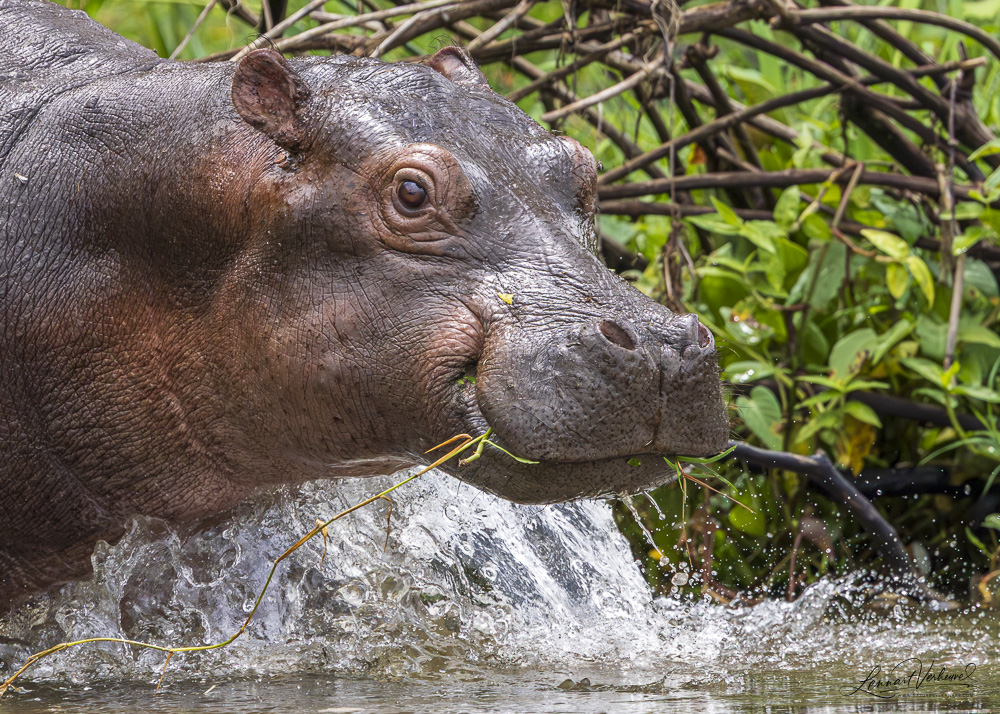
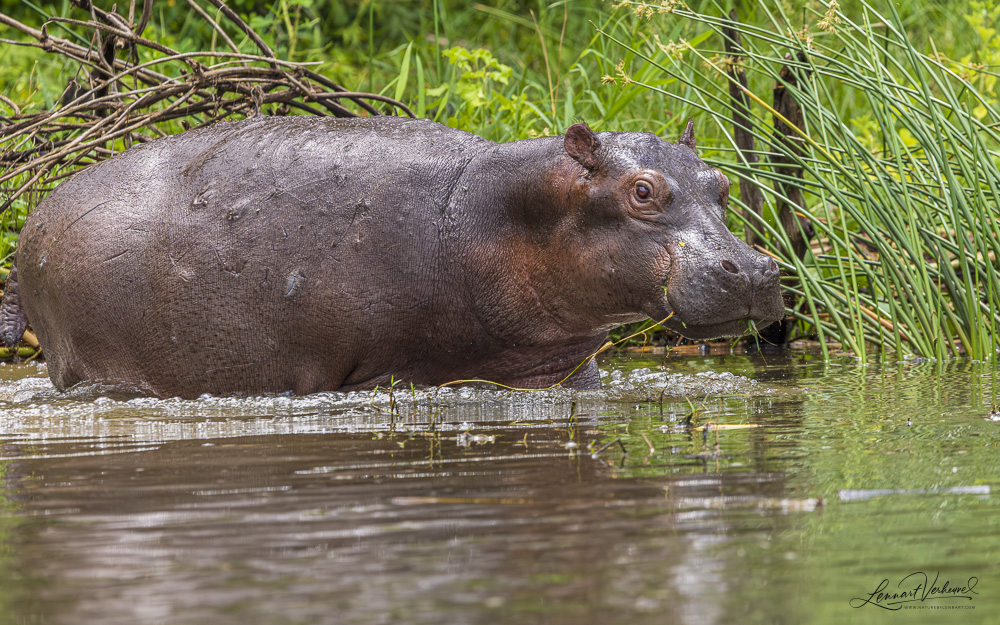
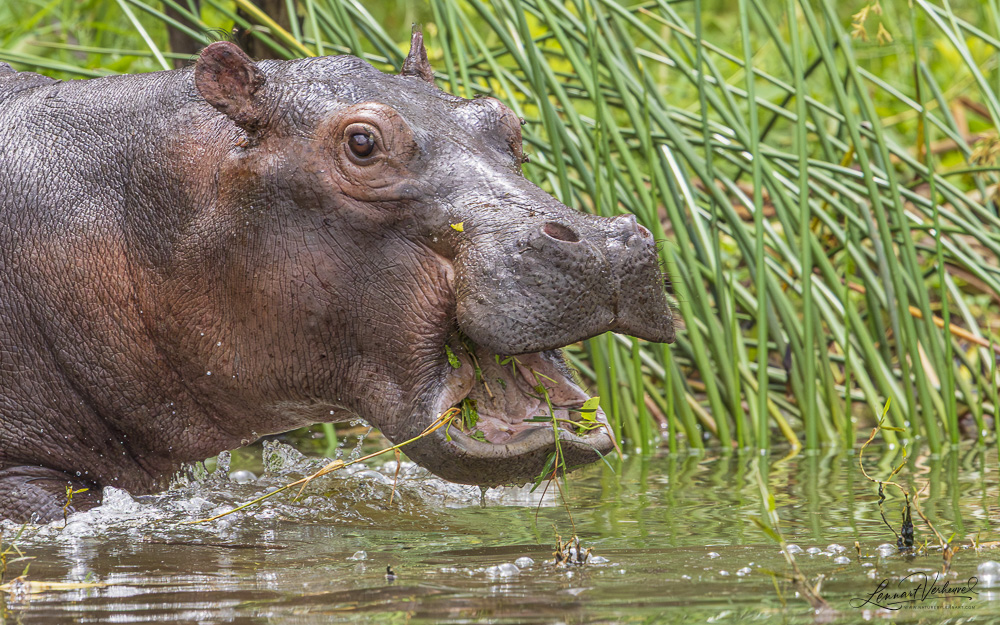
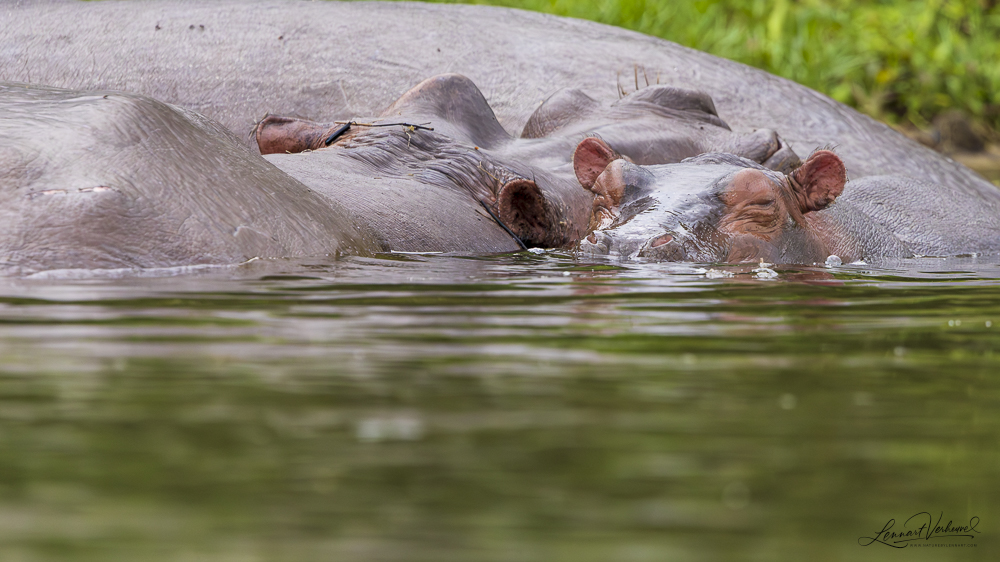
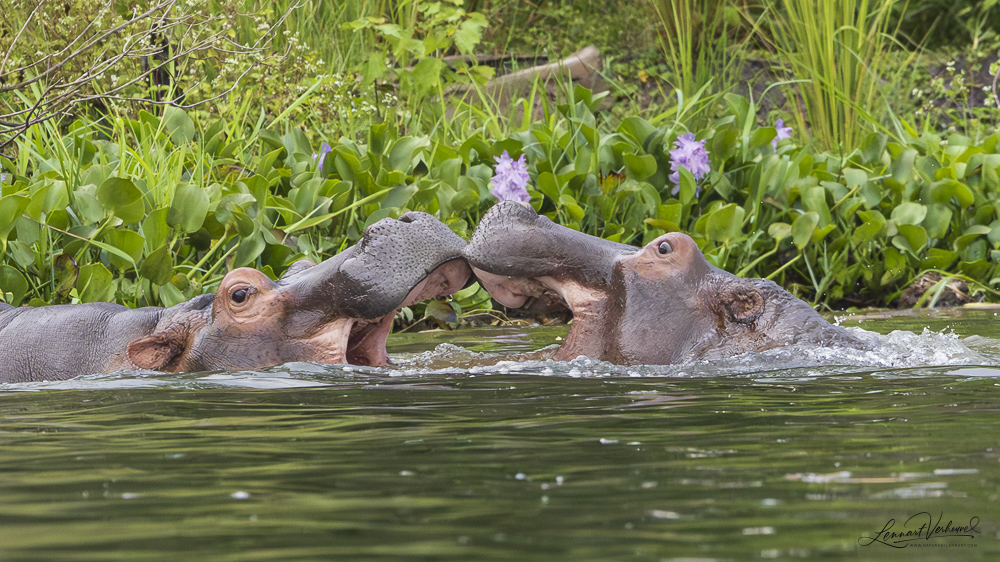
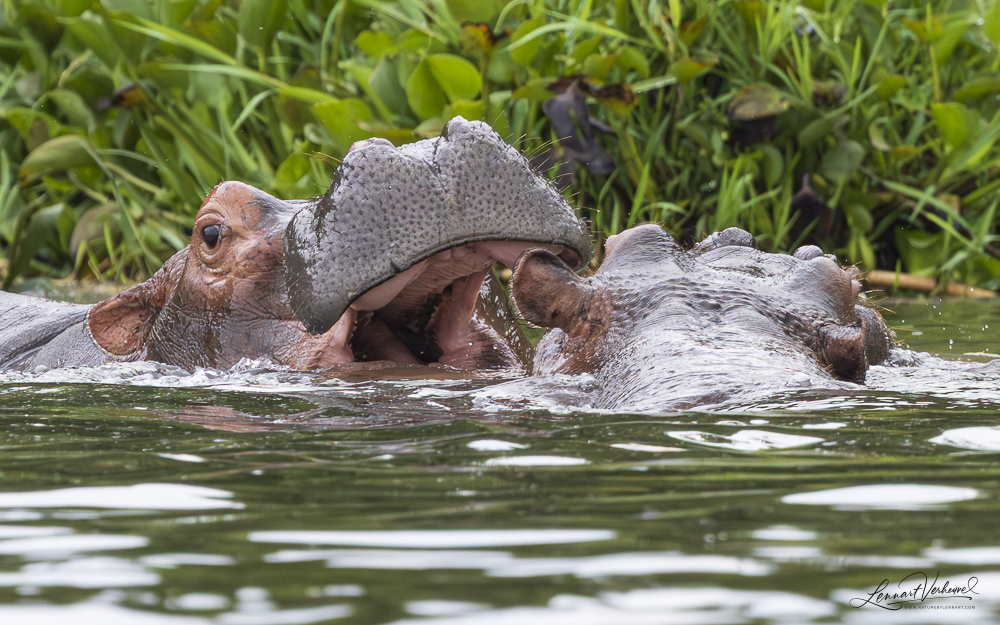
Hippopotamus
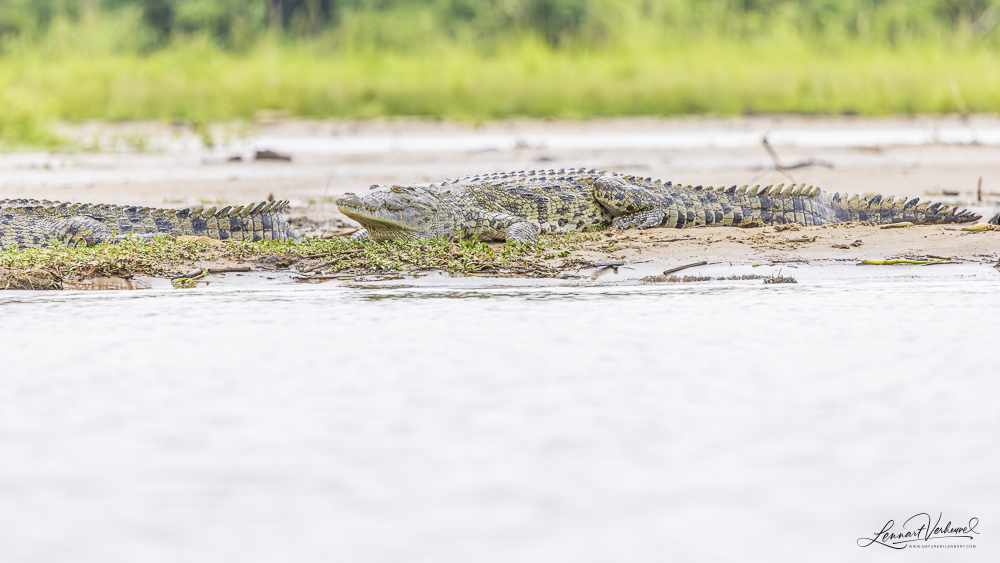
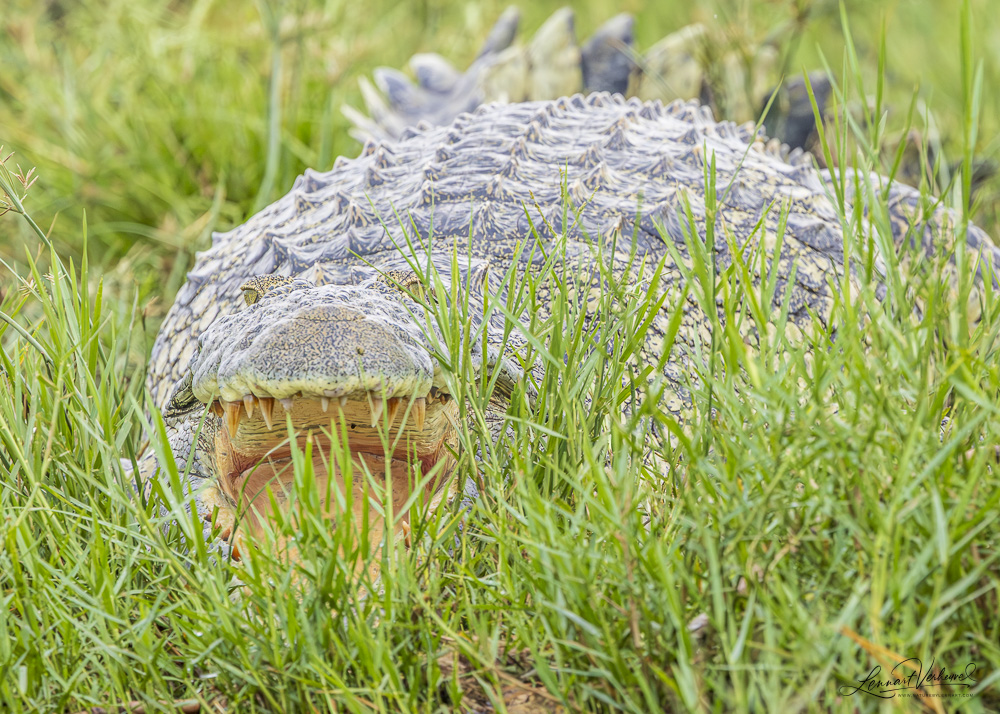
Nile Crocodile
We also saw a familiar species from the Netherlands: the Gull-billed Tern.
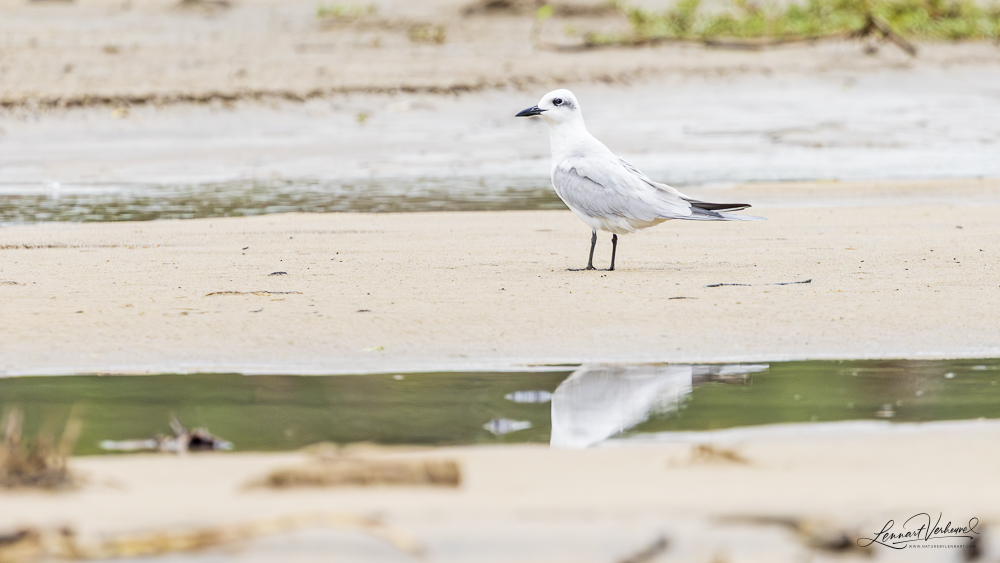
Gull-billed Tern
An iconic African species was the Saddle-billed Stork—a truly stunning stork.
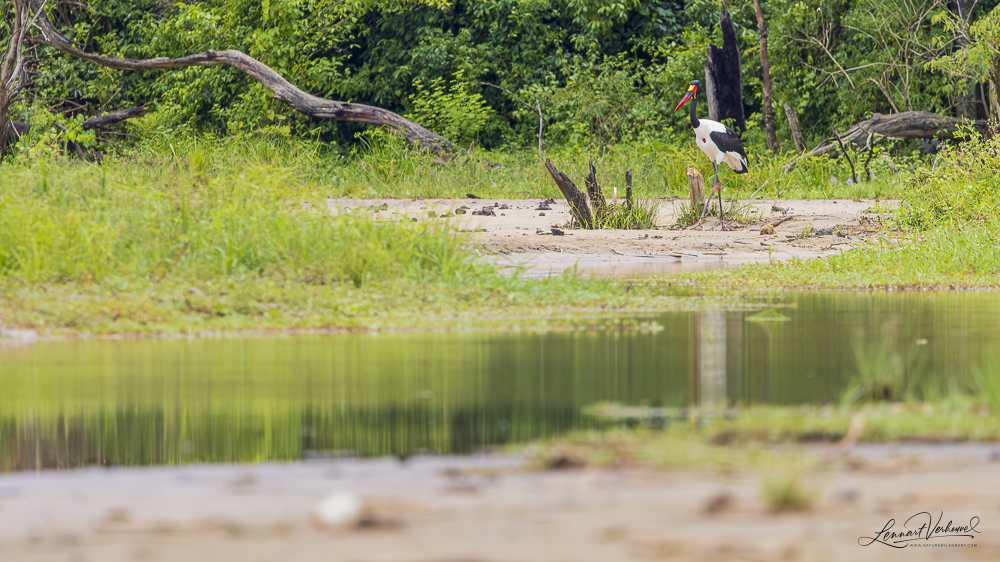
Saddle-billed Stork
Black Crake and Malachite Kingfisher were also present.
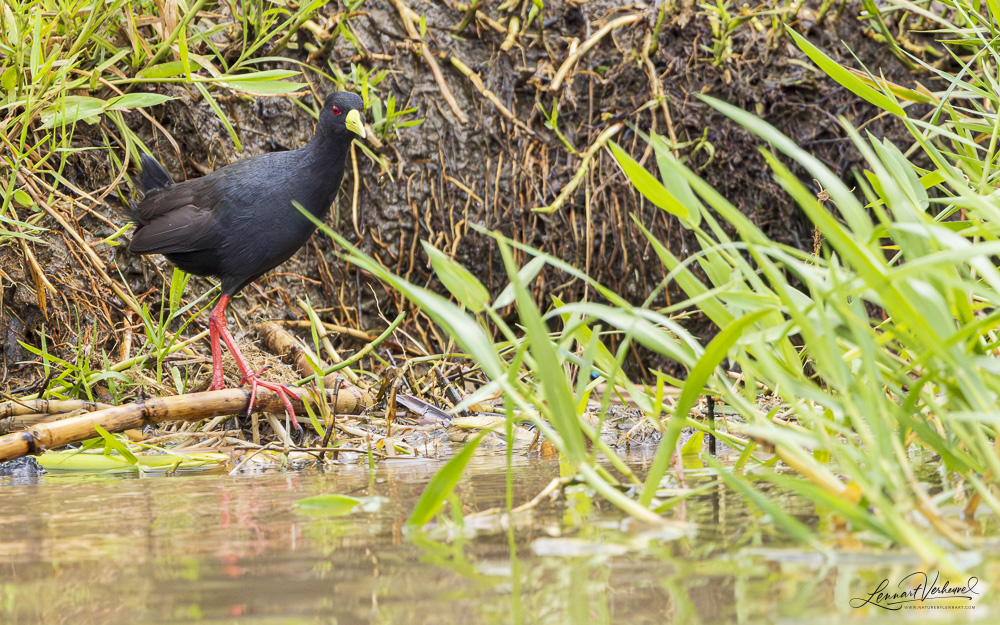
Black Crake
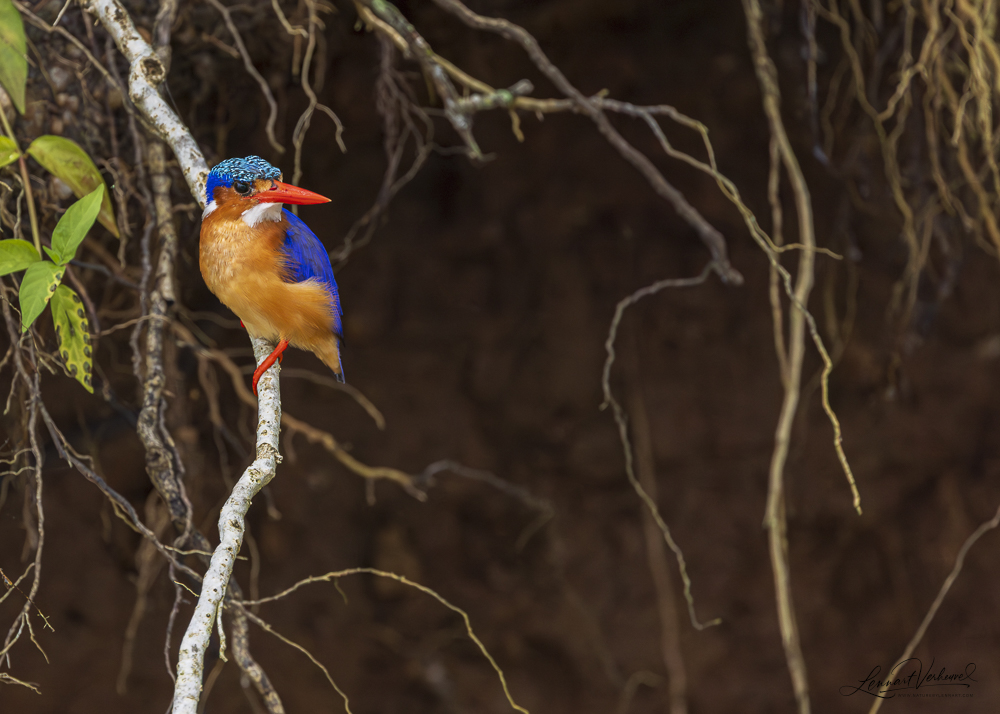
Malachite Kingfisher
The waterfalls themselves were well worth seeing too, and of course, I took some photos there.
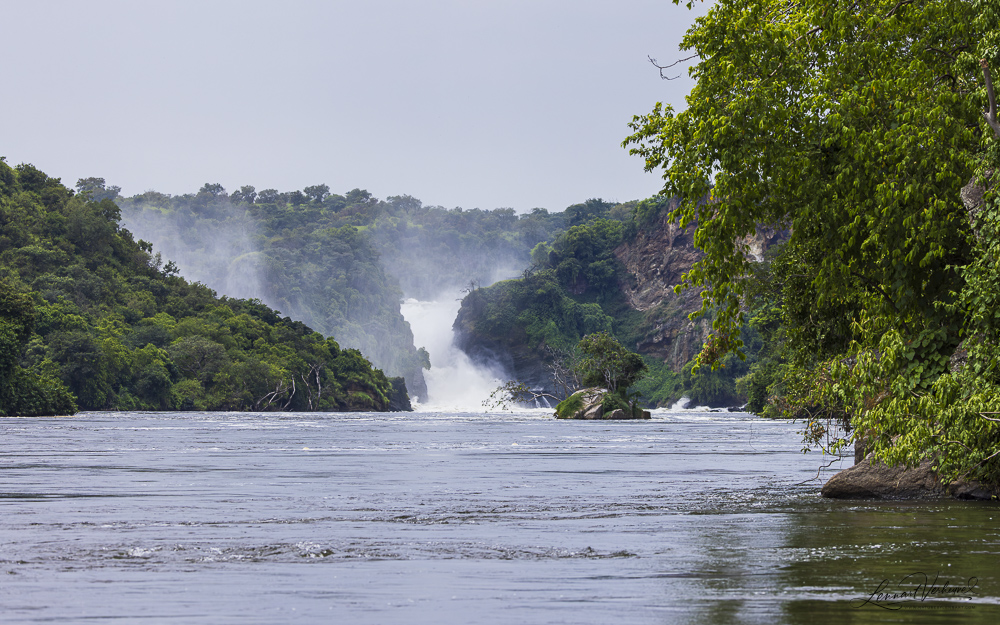
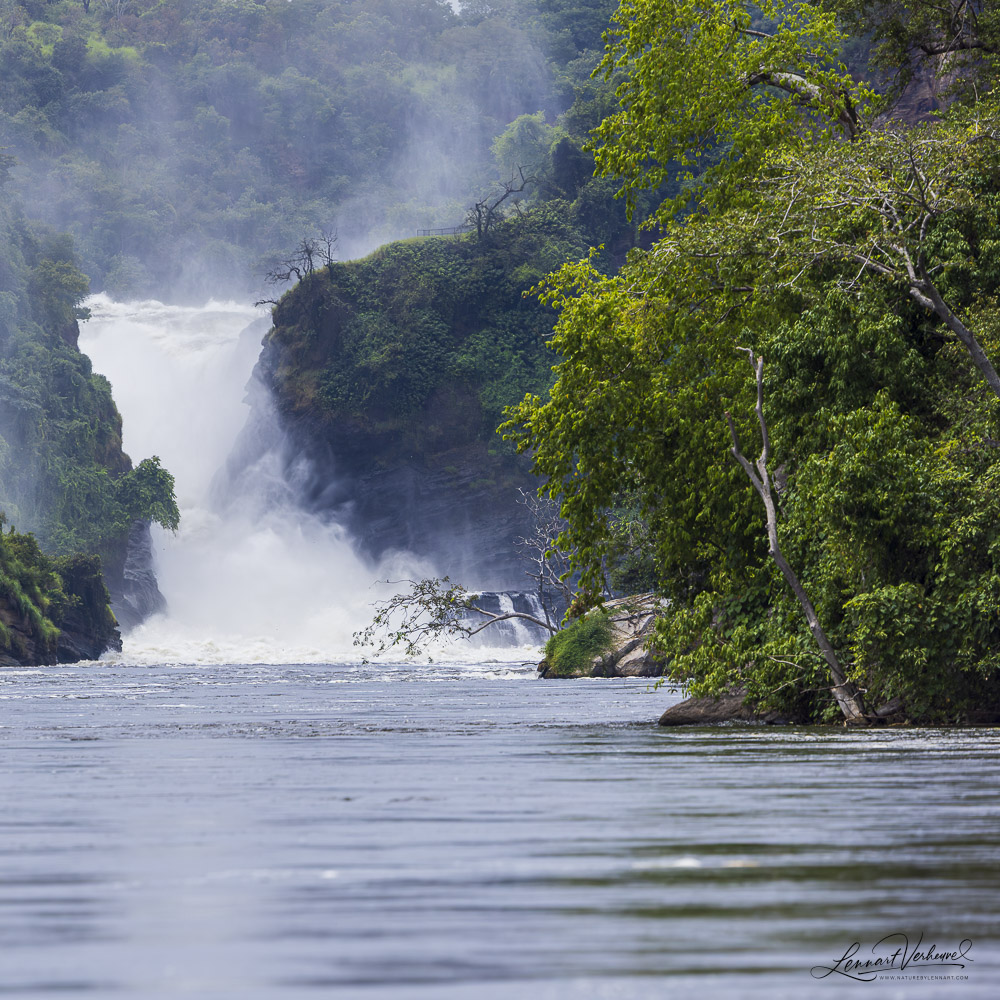
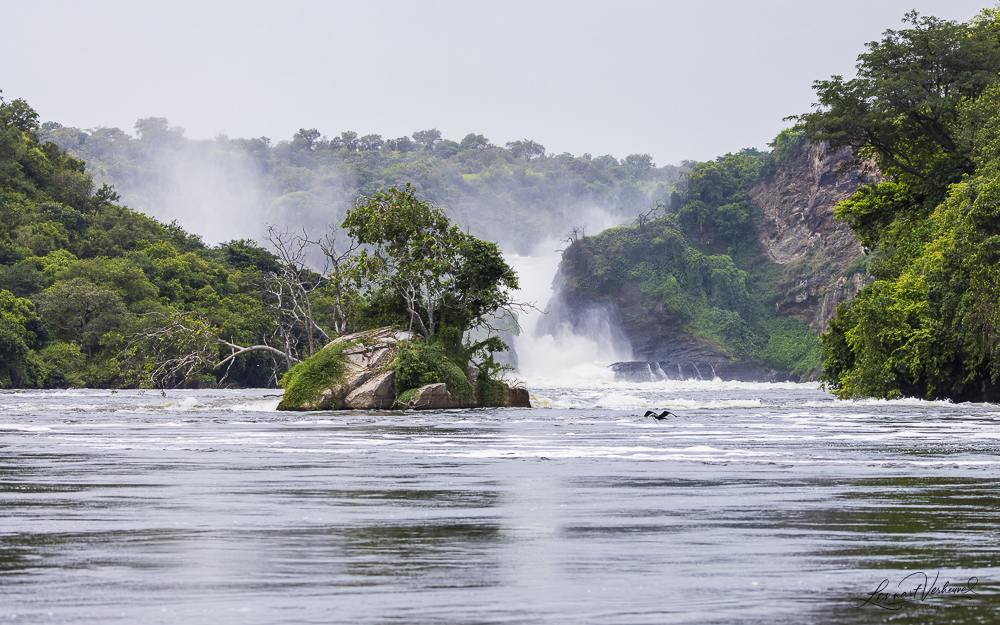
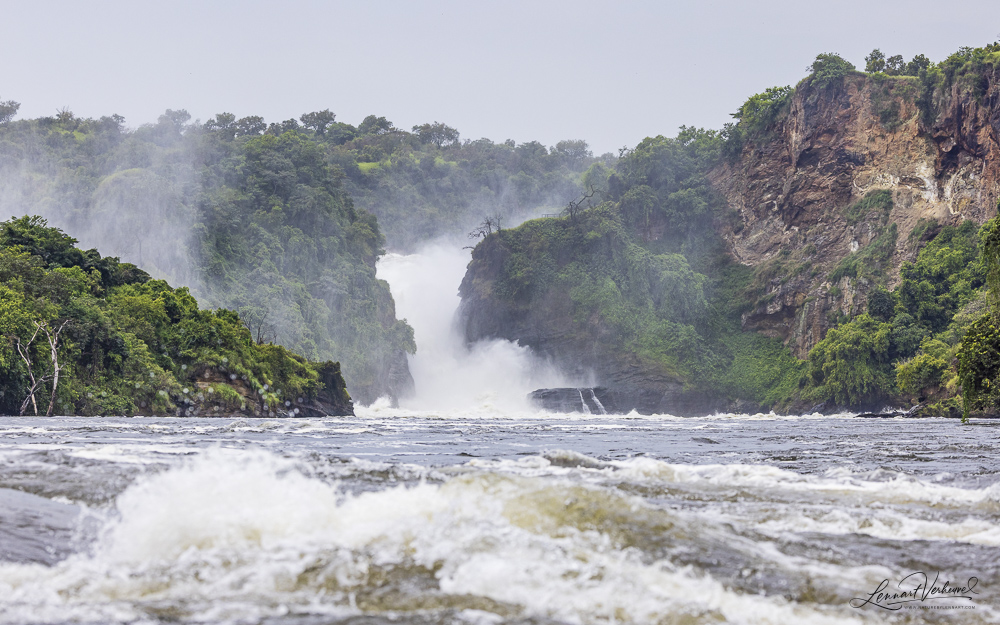
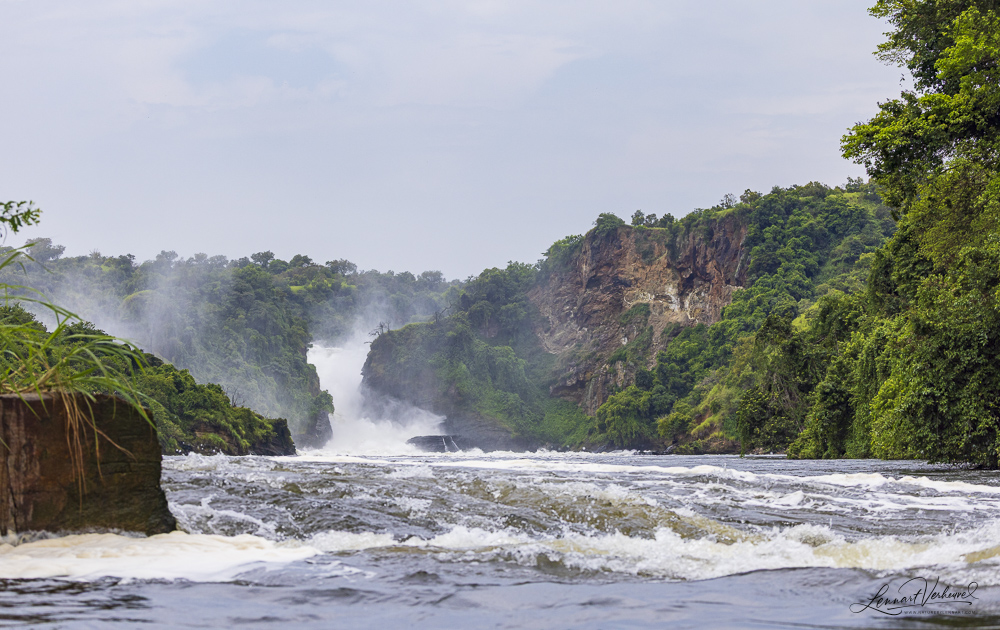
I was even happier, though, with the much-hoped-for Rock Pratincole. This was a new species of pratincole for me and quite different from those I’d seen before.
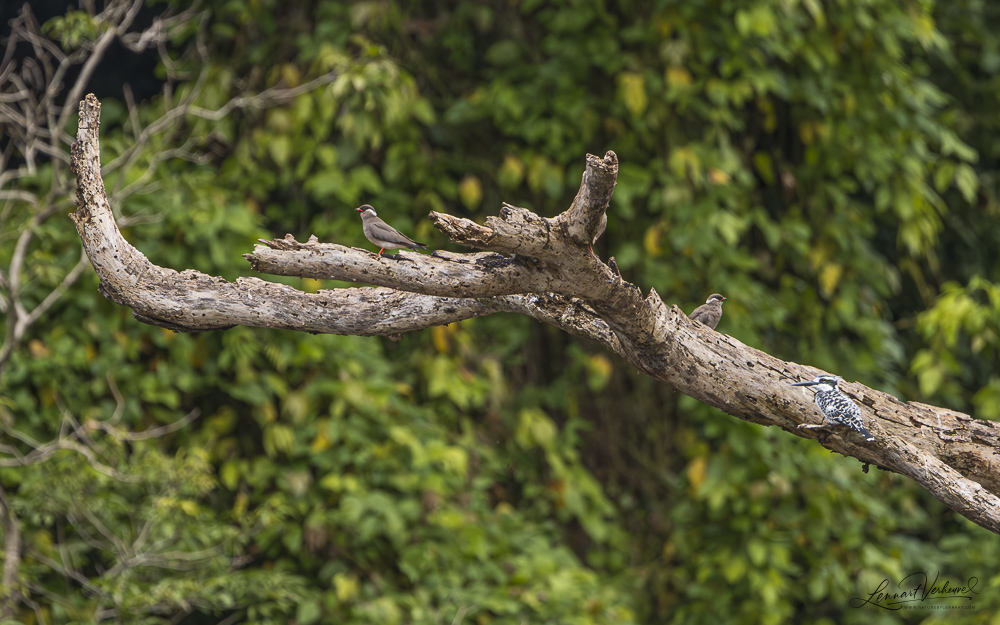
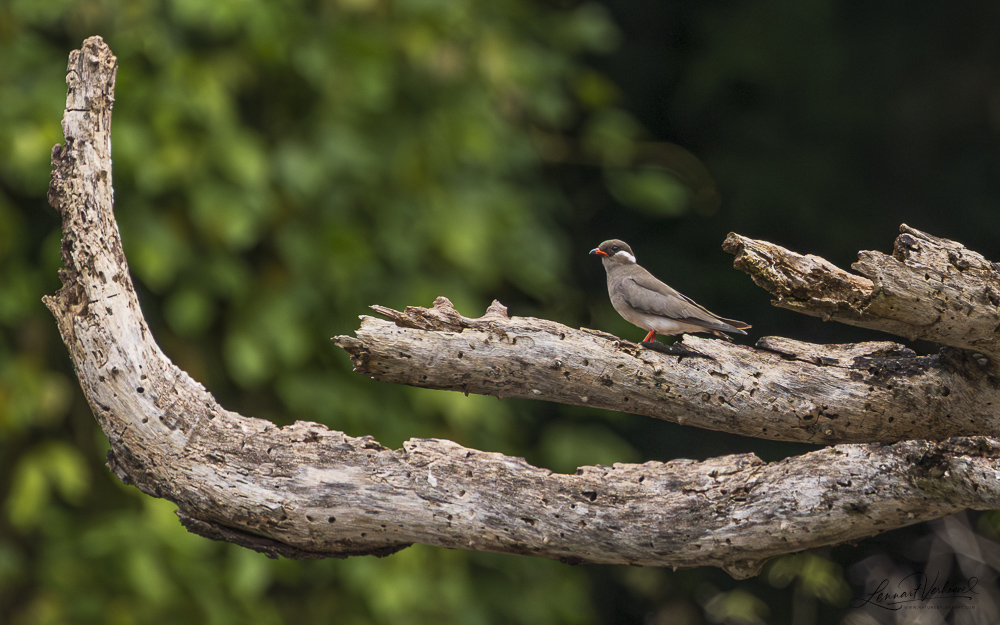
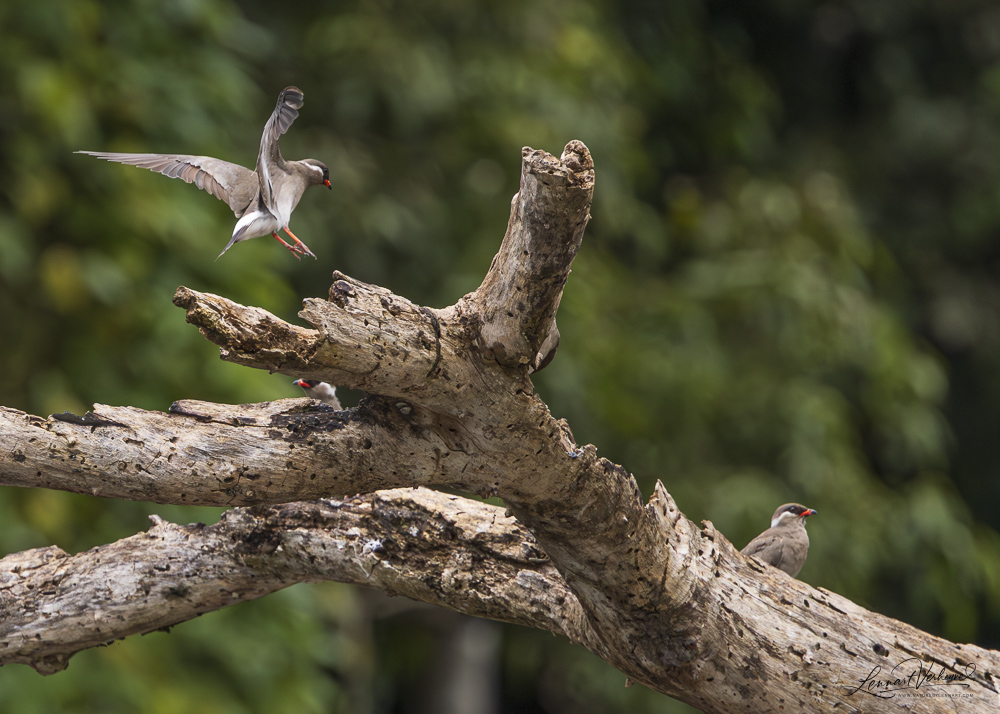
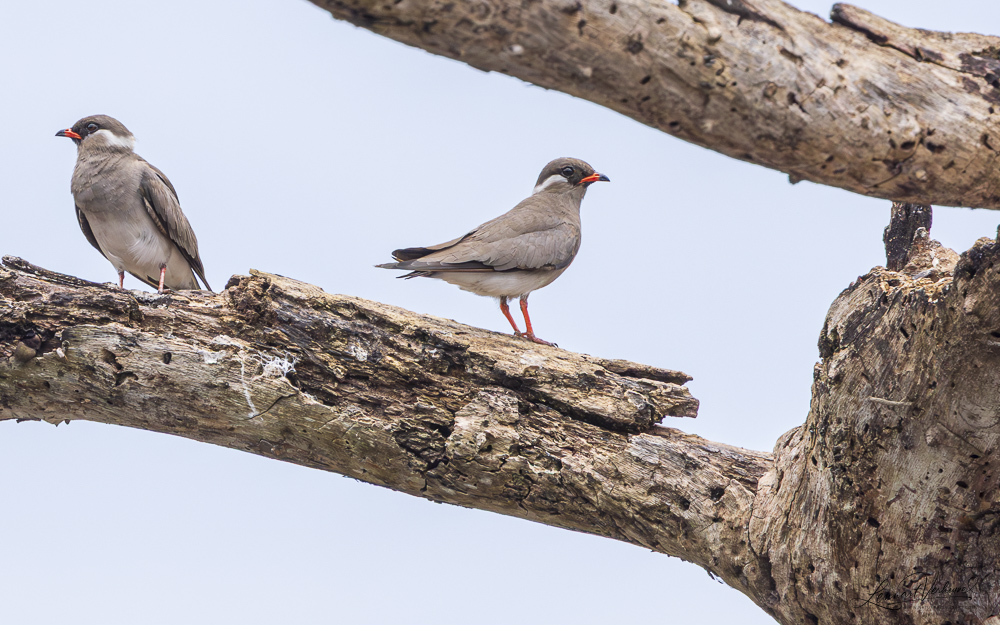
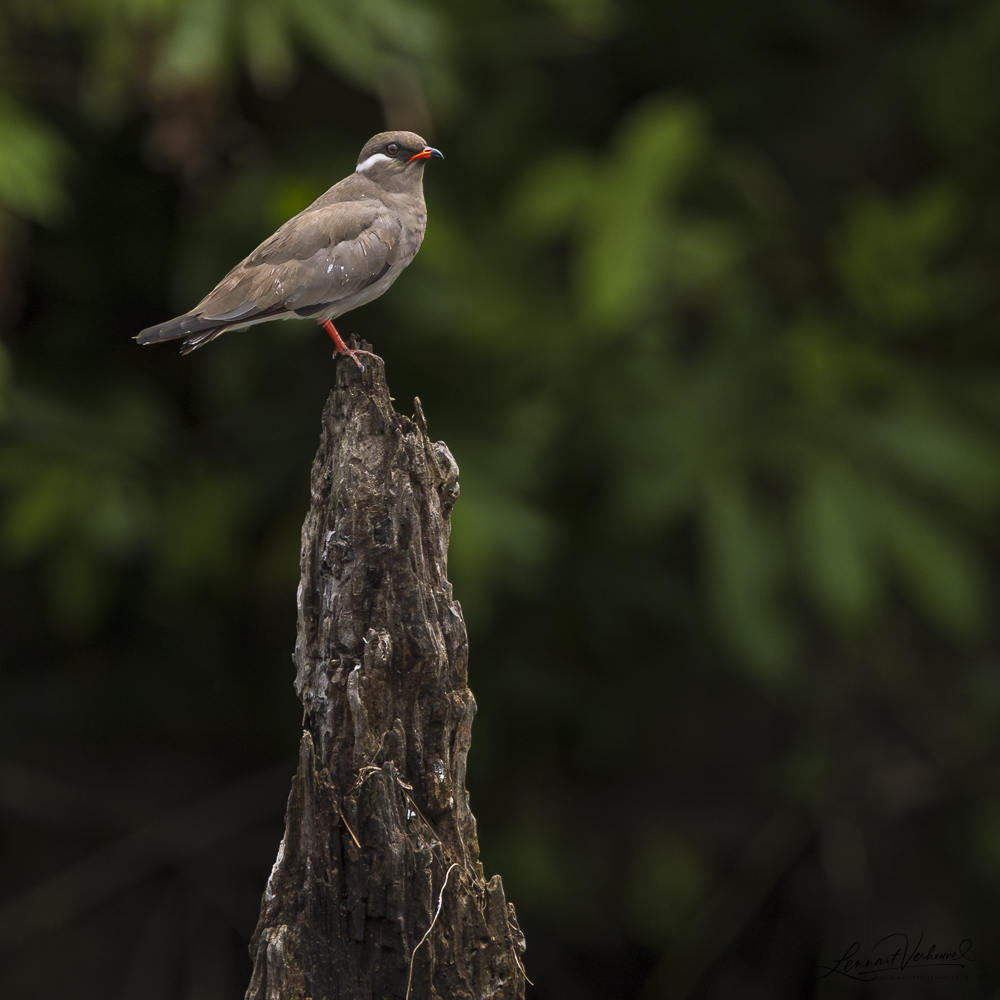
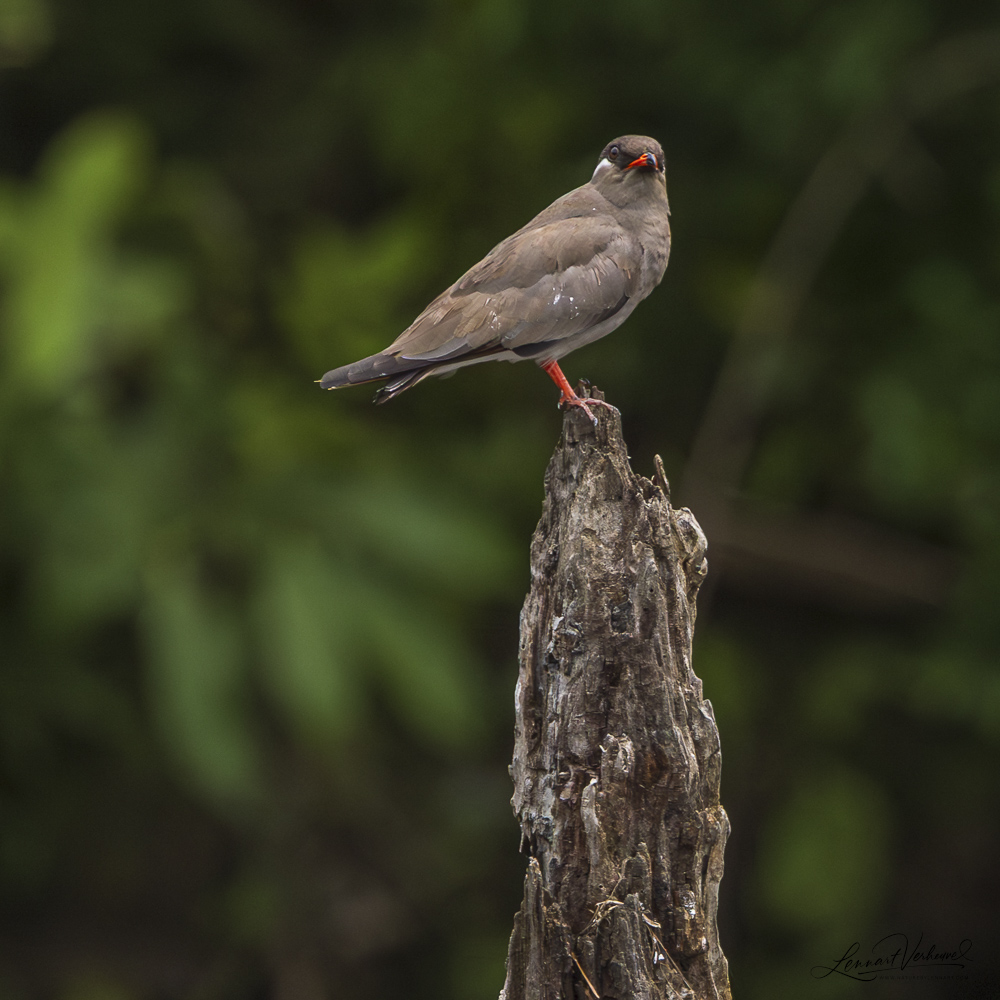
Rock Pratincole
This species somewhat resembles the Inca Tern I saw in Chile when it comes to its color combination: grey plumage, a red bill, and a white stripe on the side of its head.
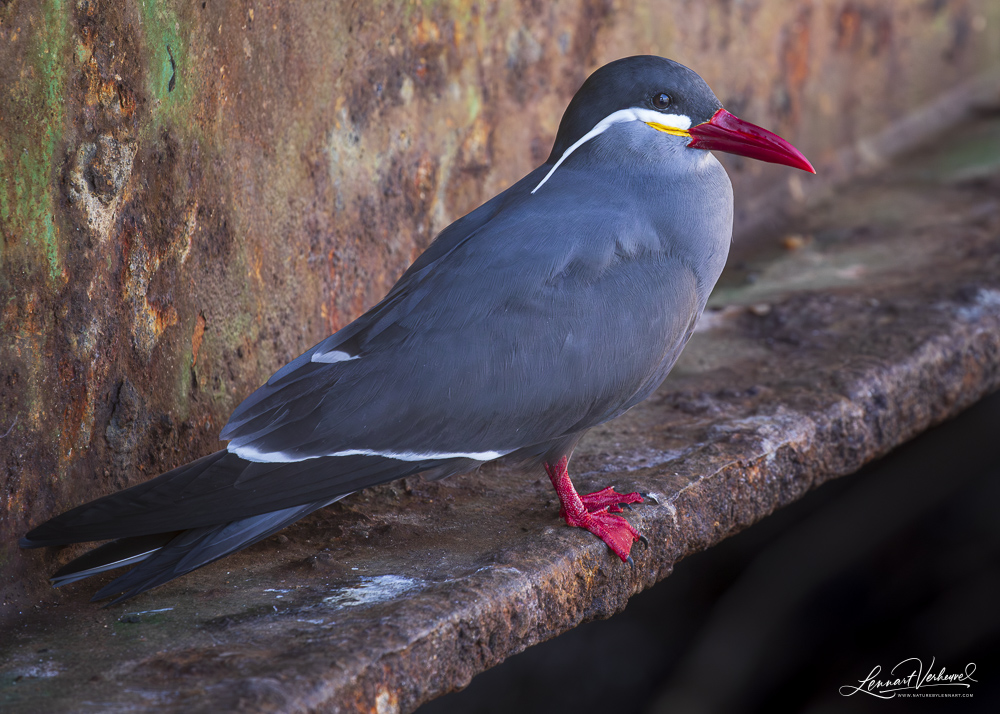
Inca Tern
Of course, the species aren’t related, but I find it fascinating that such specific color patterns occur in unrelated bird species around the world. For example, look up the Magpie Shrike and the Magpie Tanager and compare them to our own Eurasian Magpie. The resemblance is striking, but the birds are otherwise completely unrelated.
After the boat trip, we had lunch and continued on. The afternoon was fairly quiet, although it began with a beautiful new species: the White-crested Turaco.
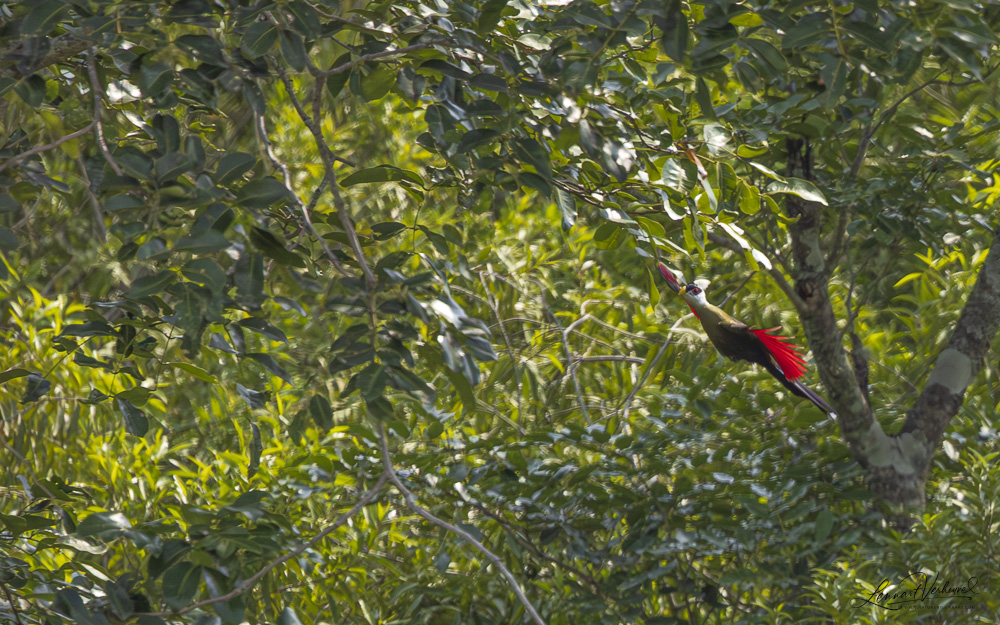
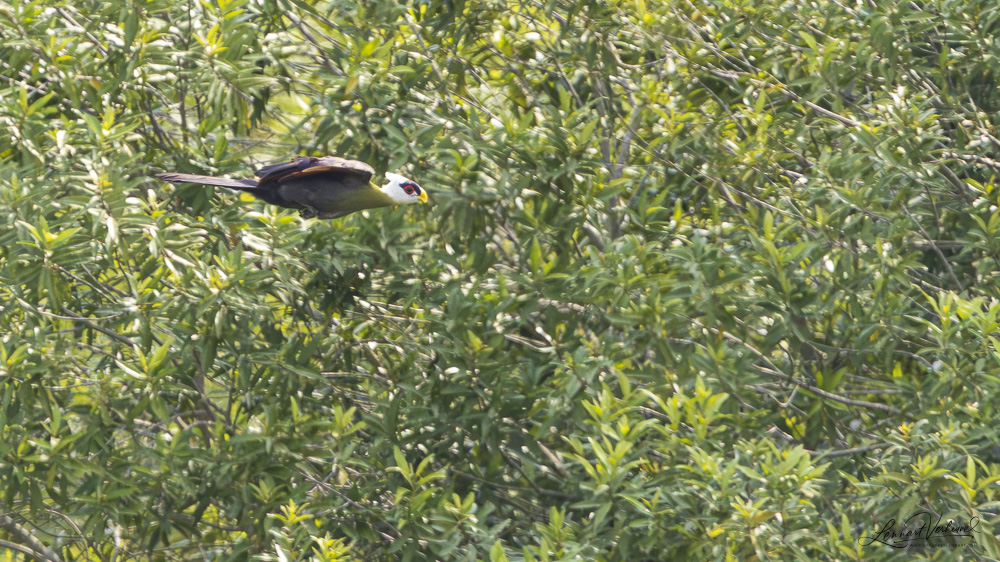
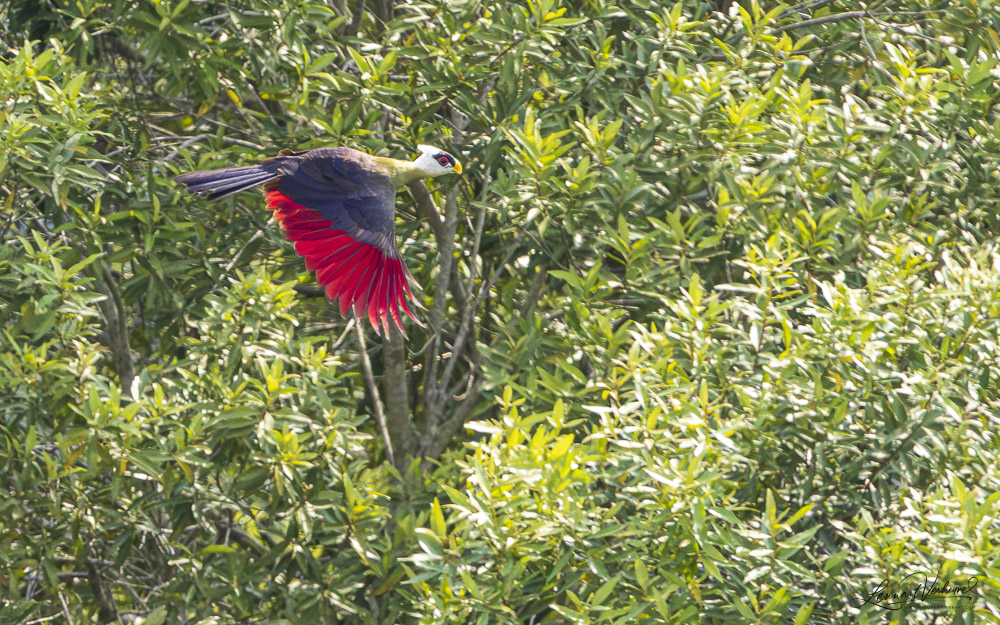
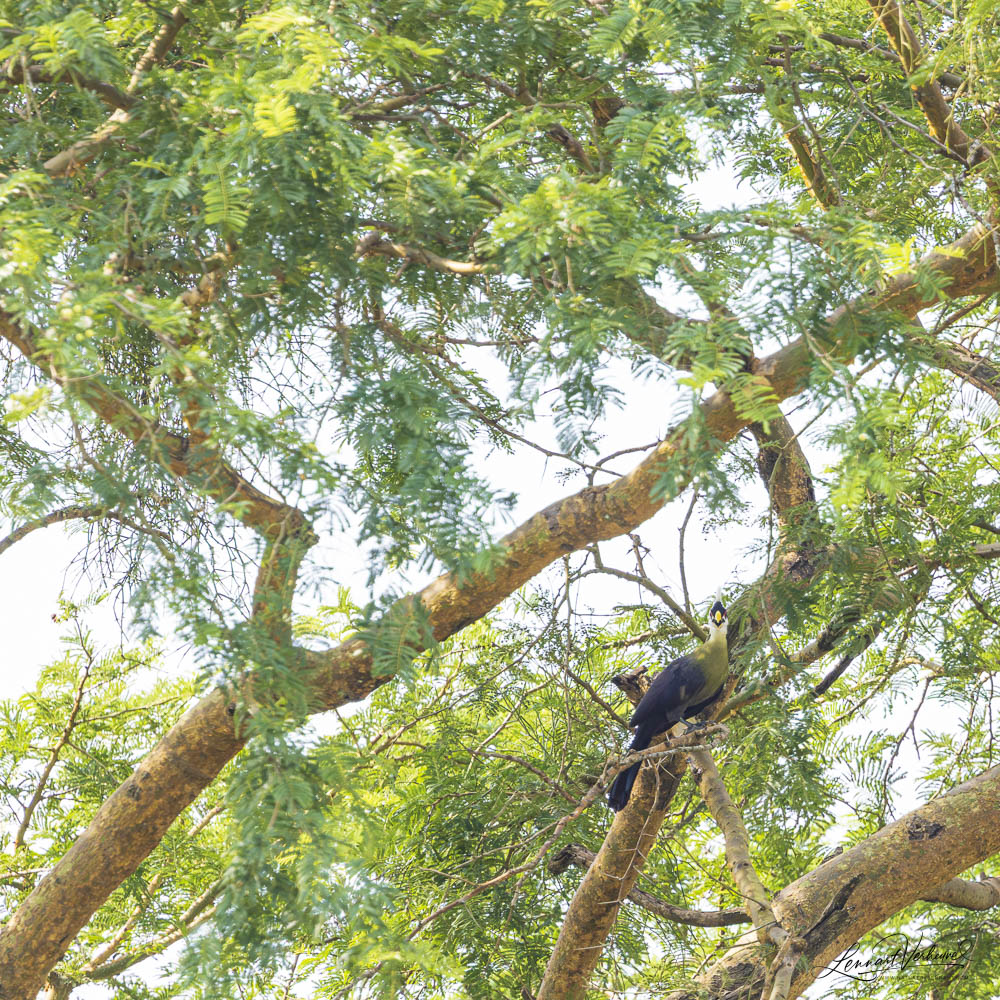
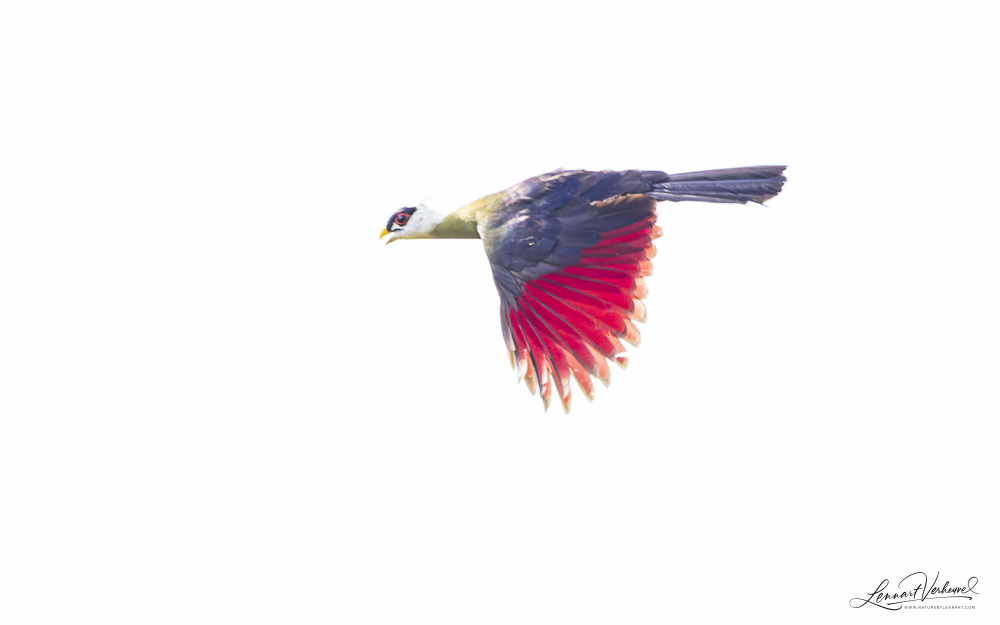
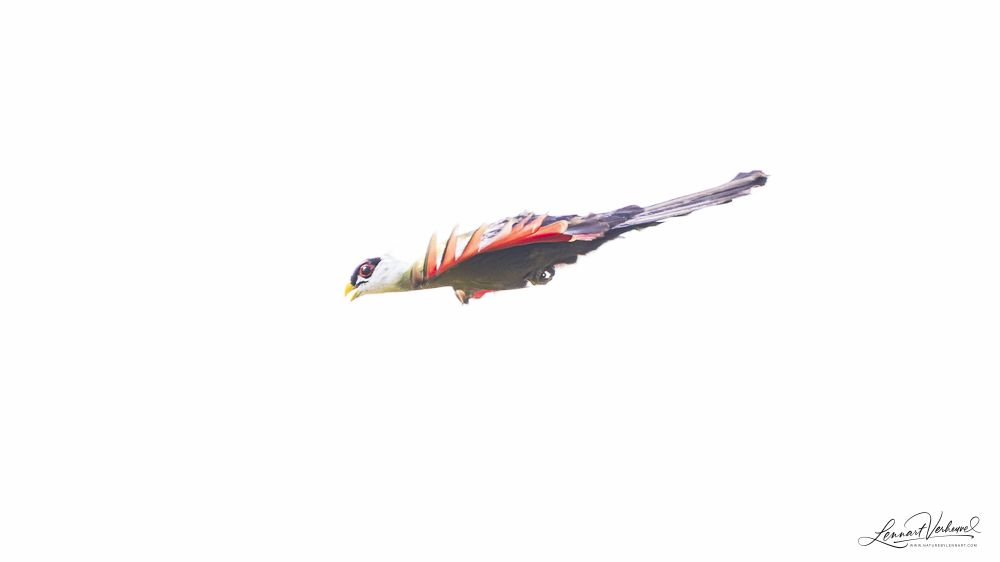
White-crested Turaco
Later we encountered a fairly large herd of elephants, accompanied by the now very familiar Piapiacs.
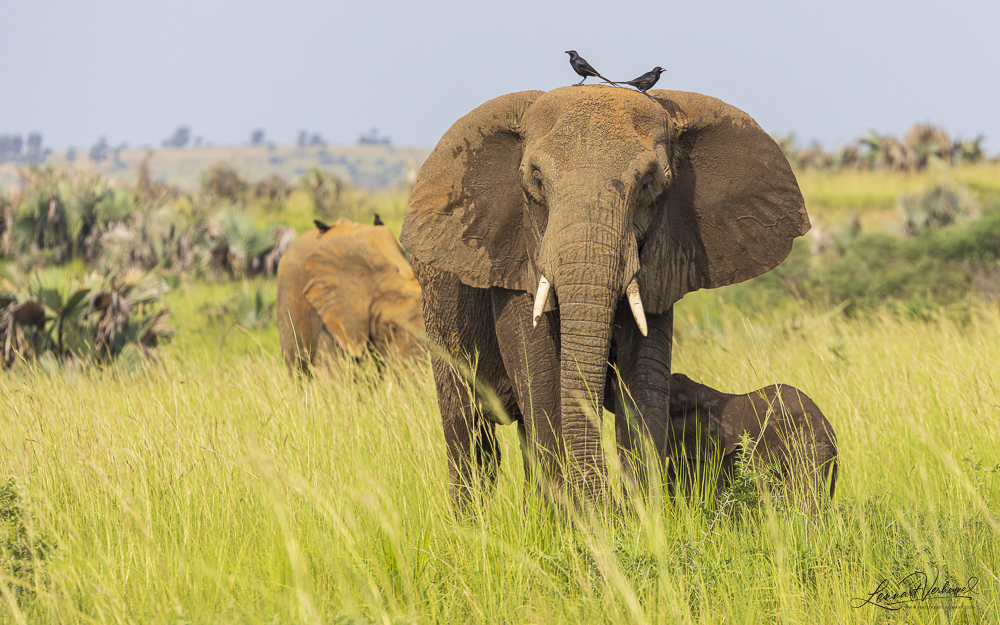
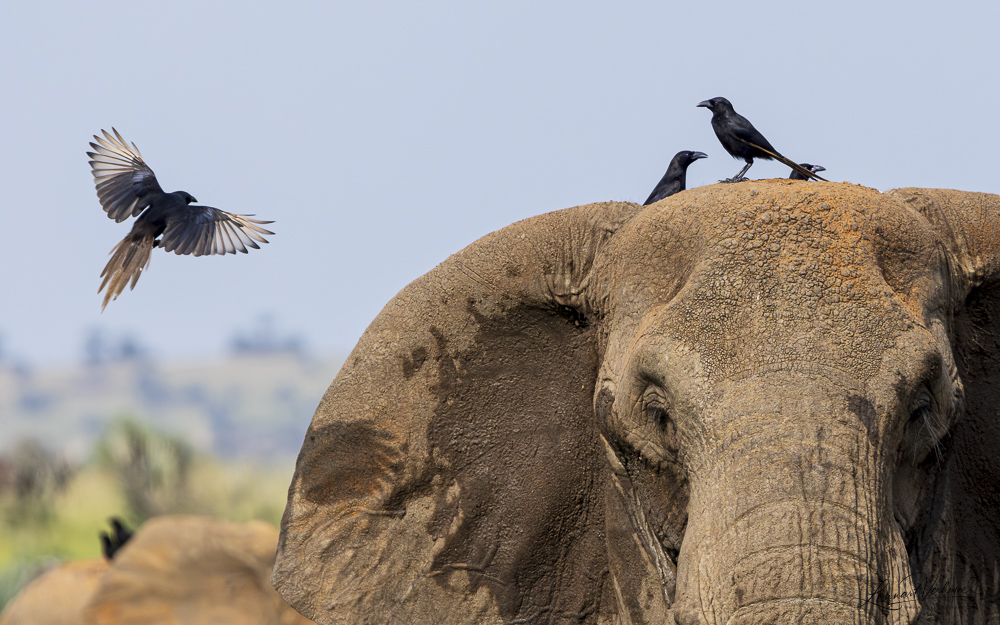
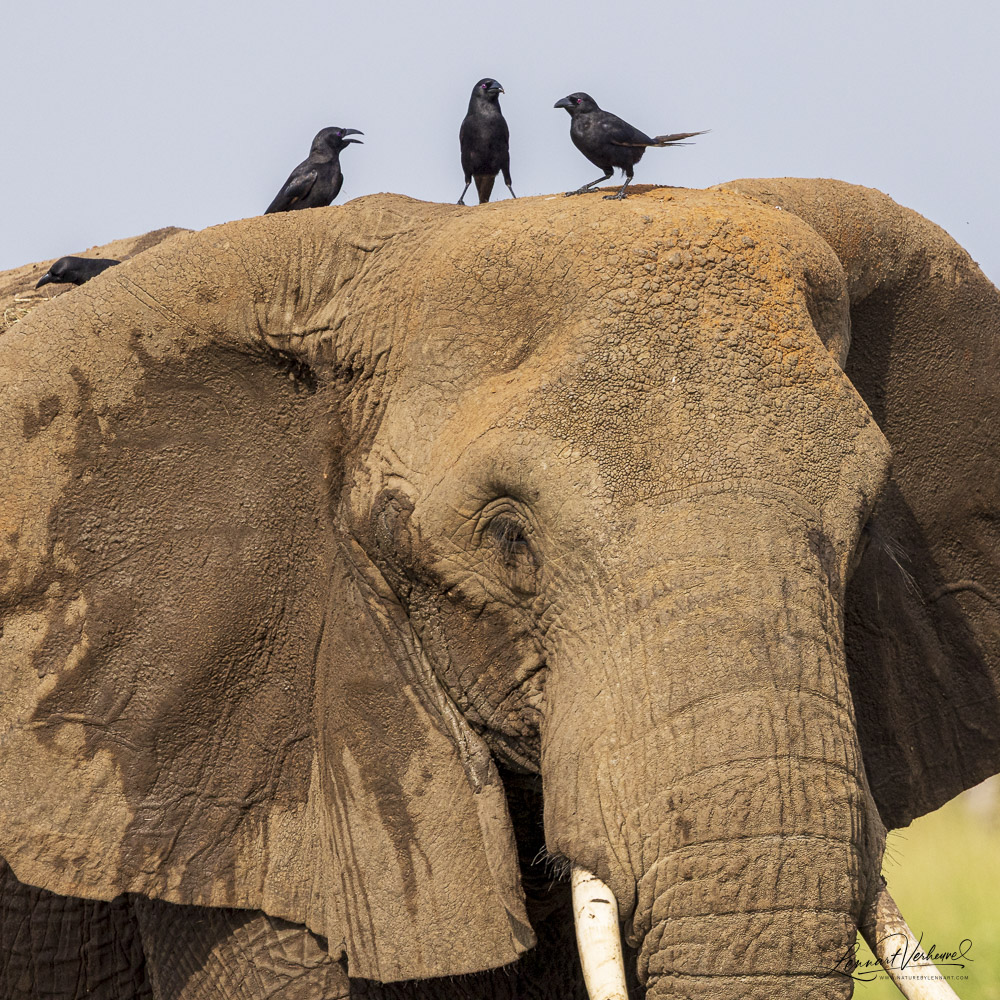
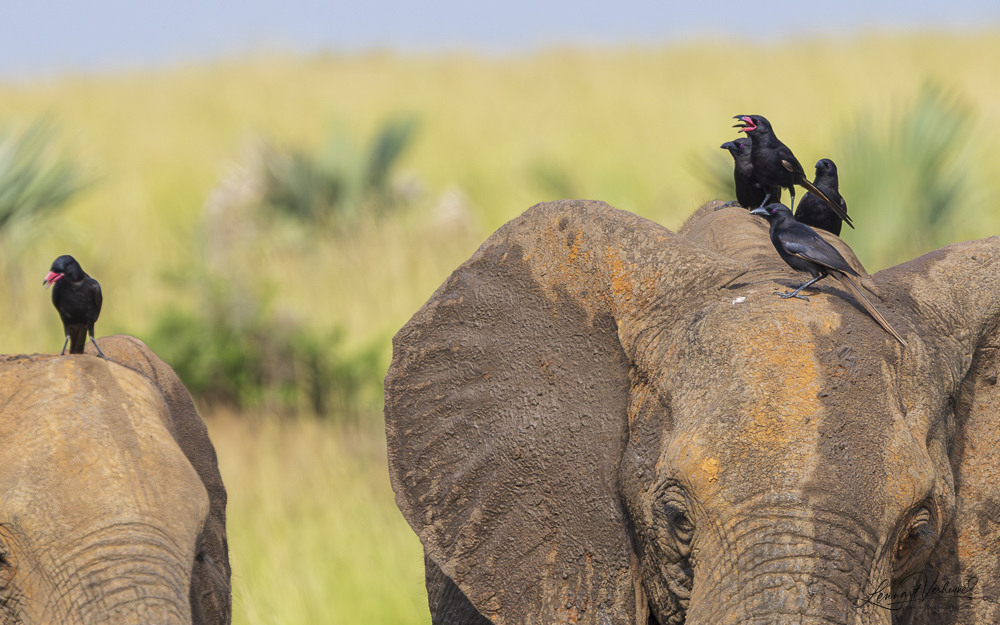
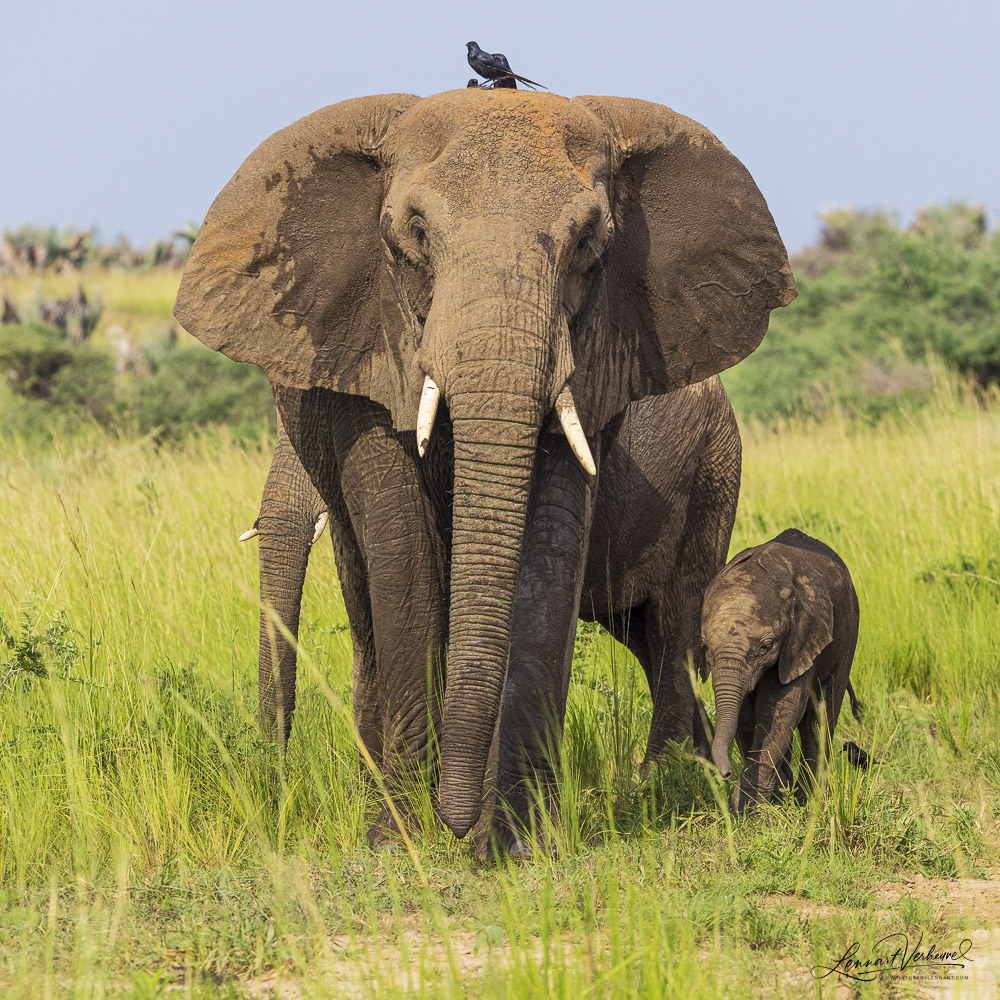
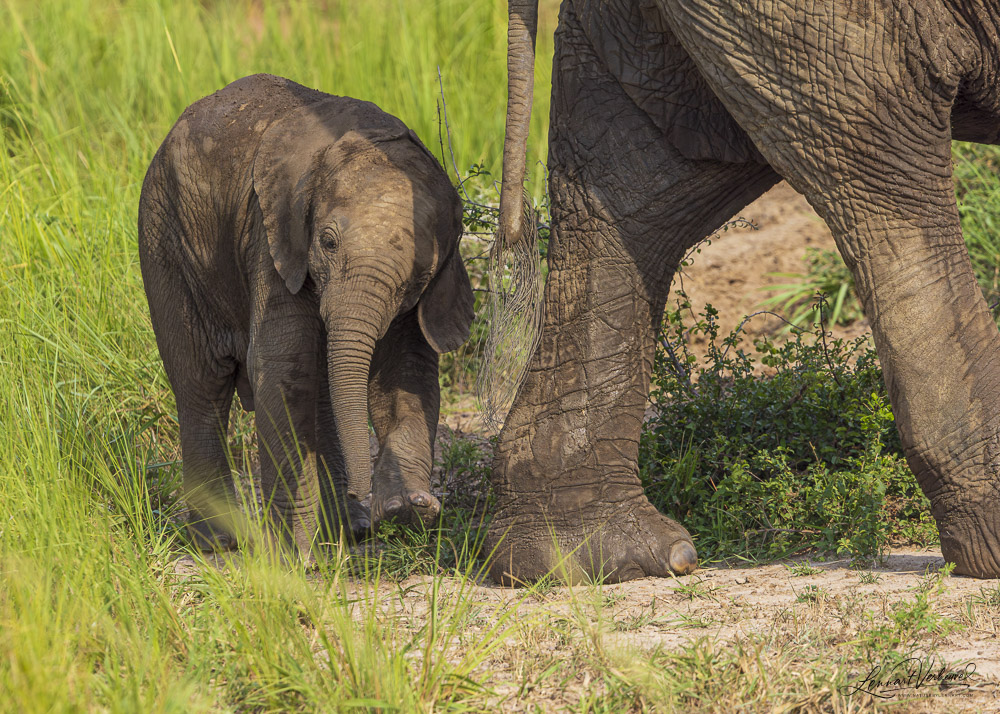
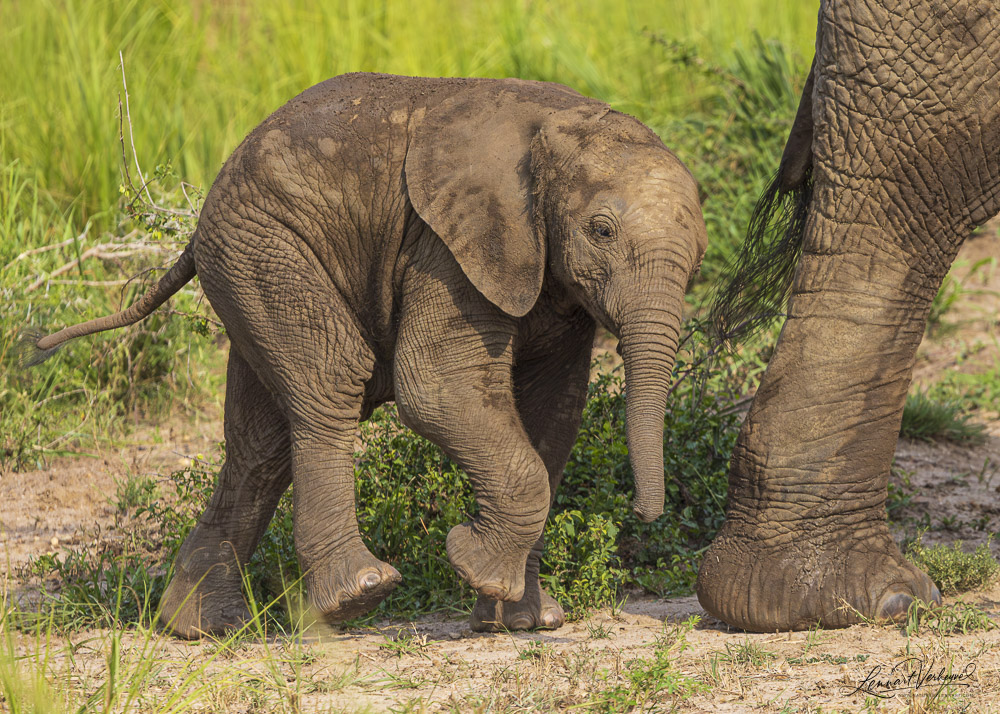
African Savanna Elephant
I tried to find a Bohor Reedbuck among the Uganda Kobs, but unfortunately without success. Luckily, we would later see them in Kidepo. While the Uganda Kob looks warmly brown in good light and the Bohor Reedbuck much paler, the difference isn’t always easy to spot.
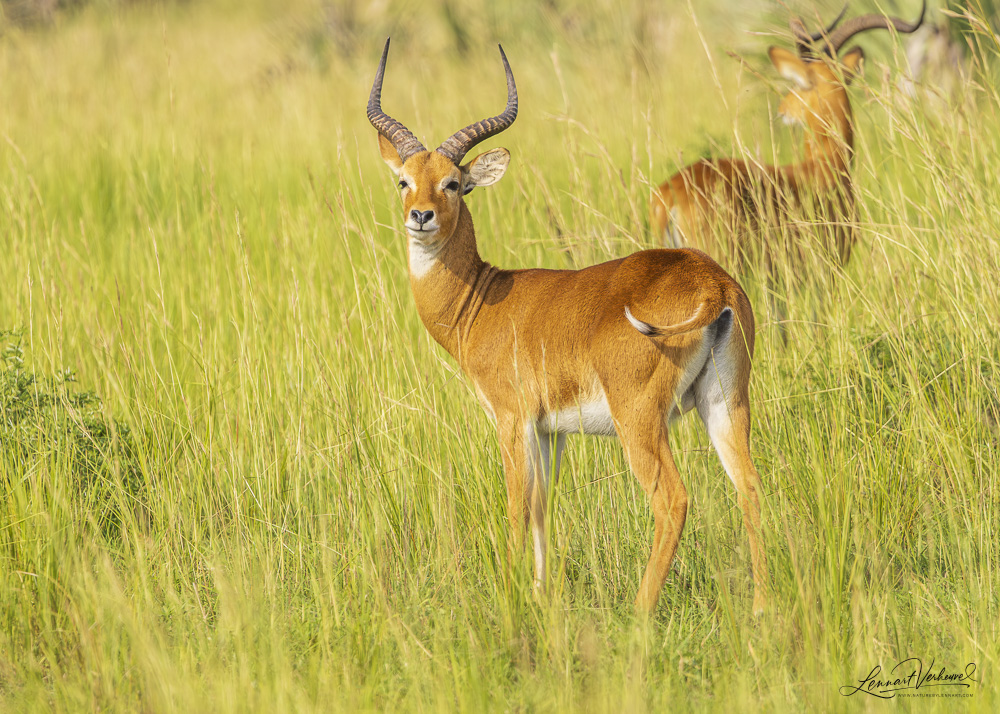
Uganda Kob
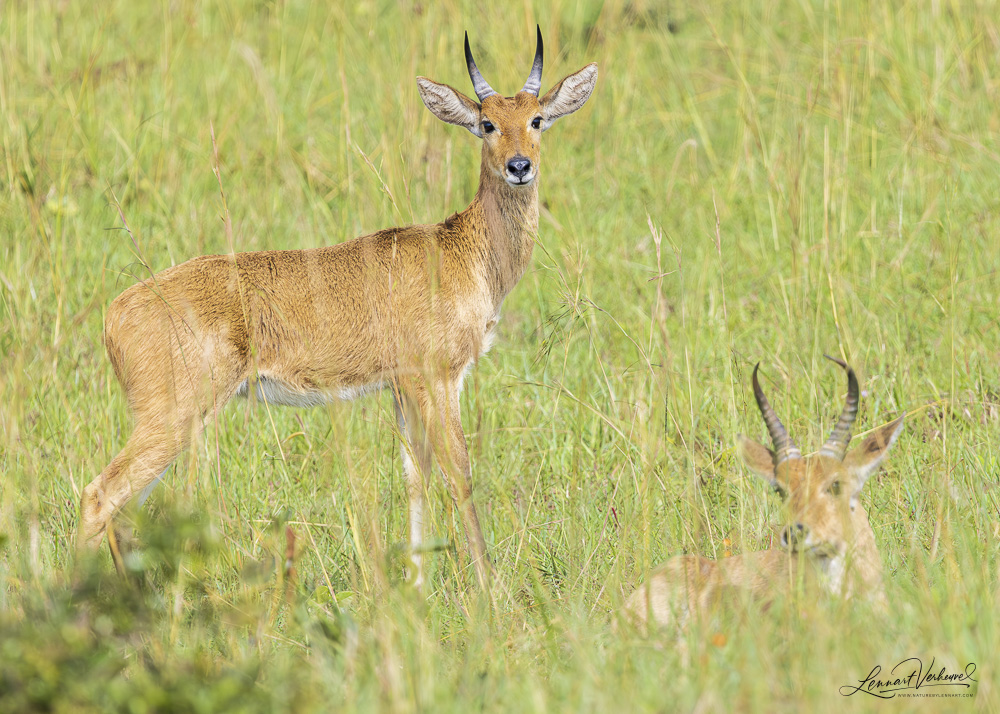
Bohor Reedbuck
We had another encounter with Patas Monkeys, this time a bit closer.
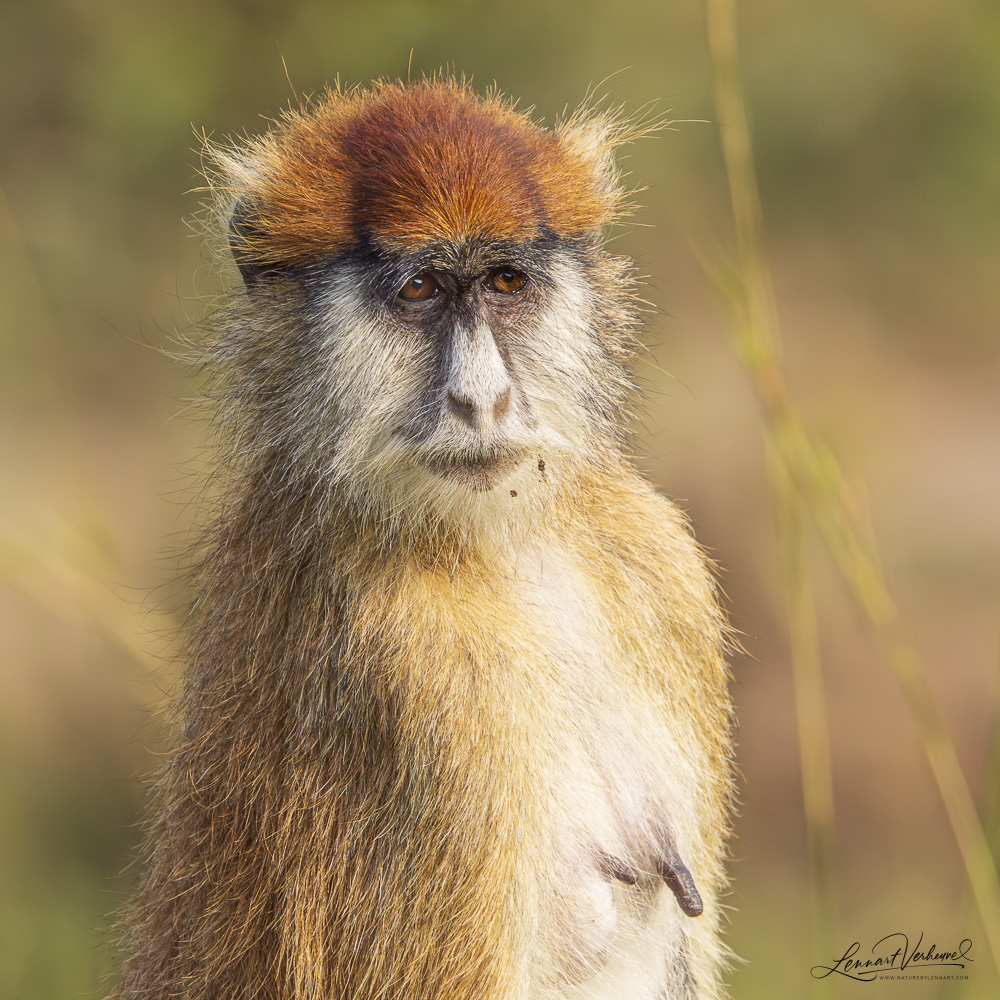
Patas Monkey
My best portrait shots of them, however, I would take later in Kidepo National Park. The rain there limited what we could do, but it díd add some nice atmosphere to the photos of the Patas Monkeys.
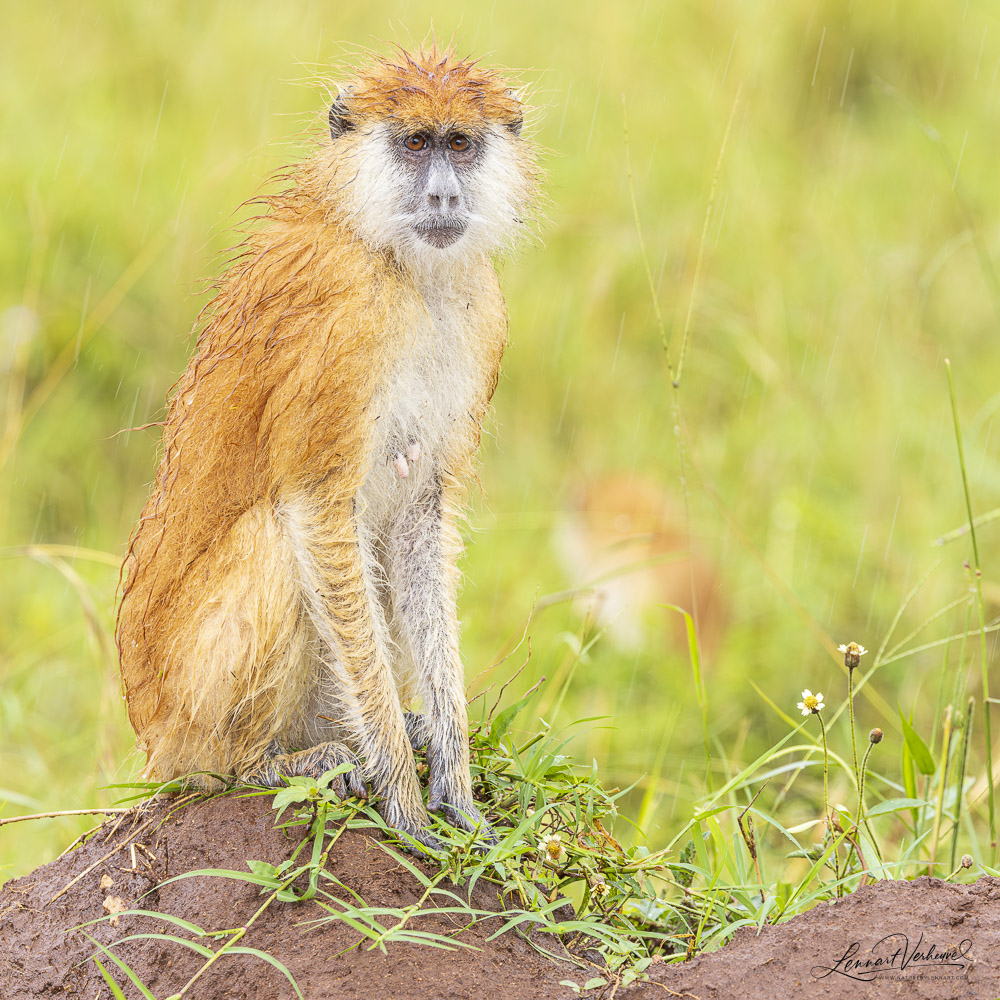
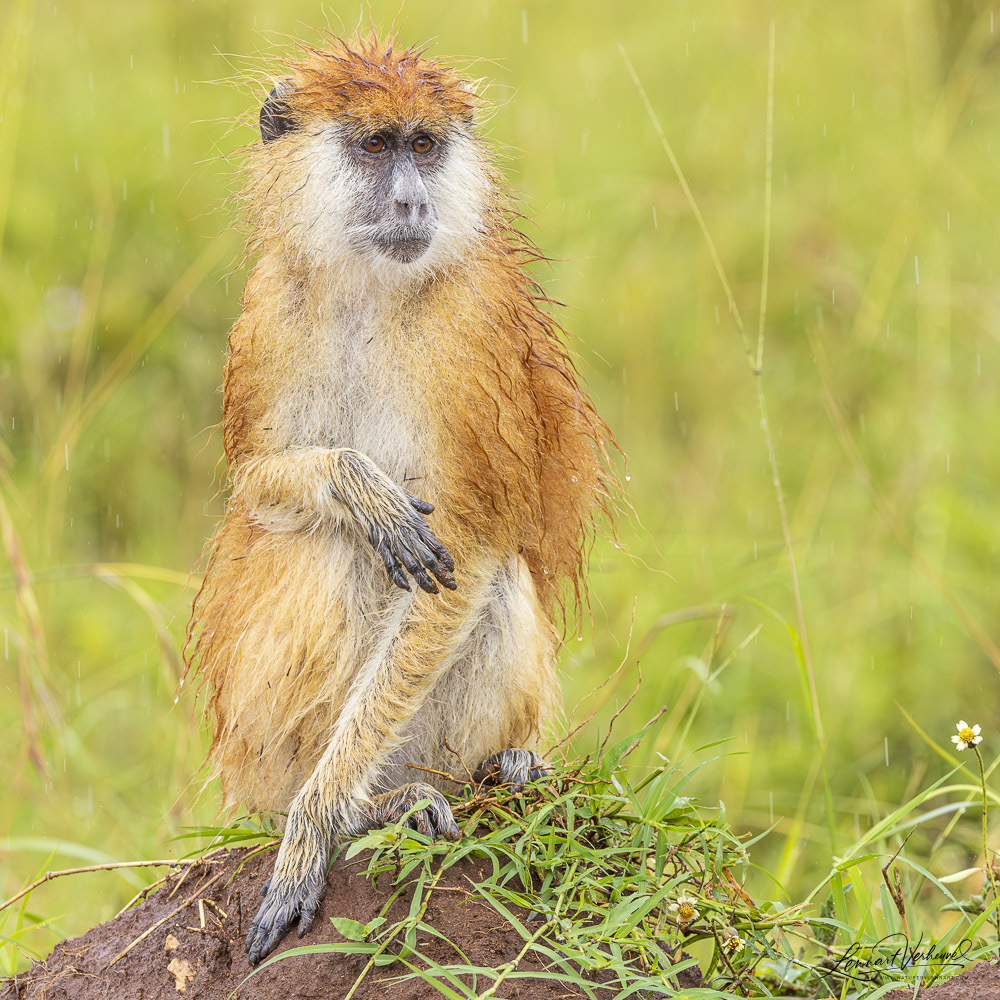
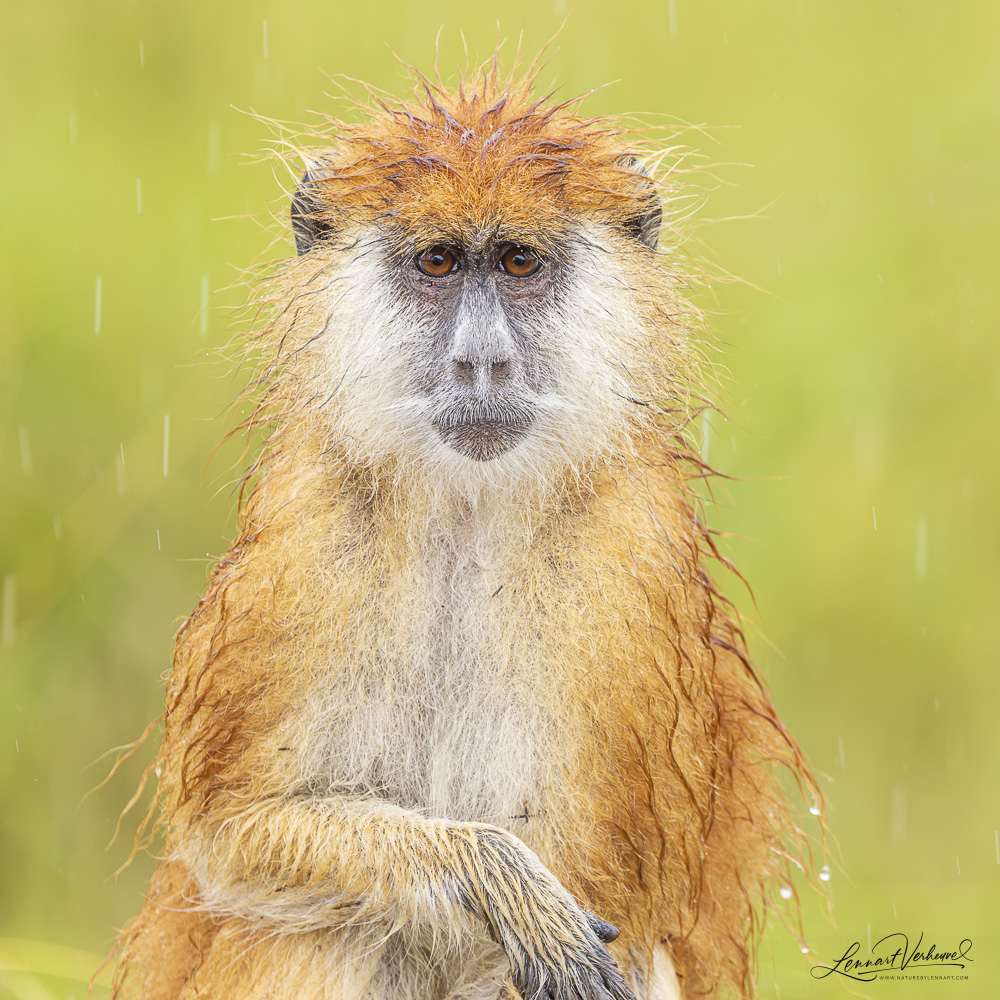
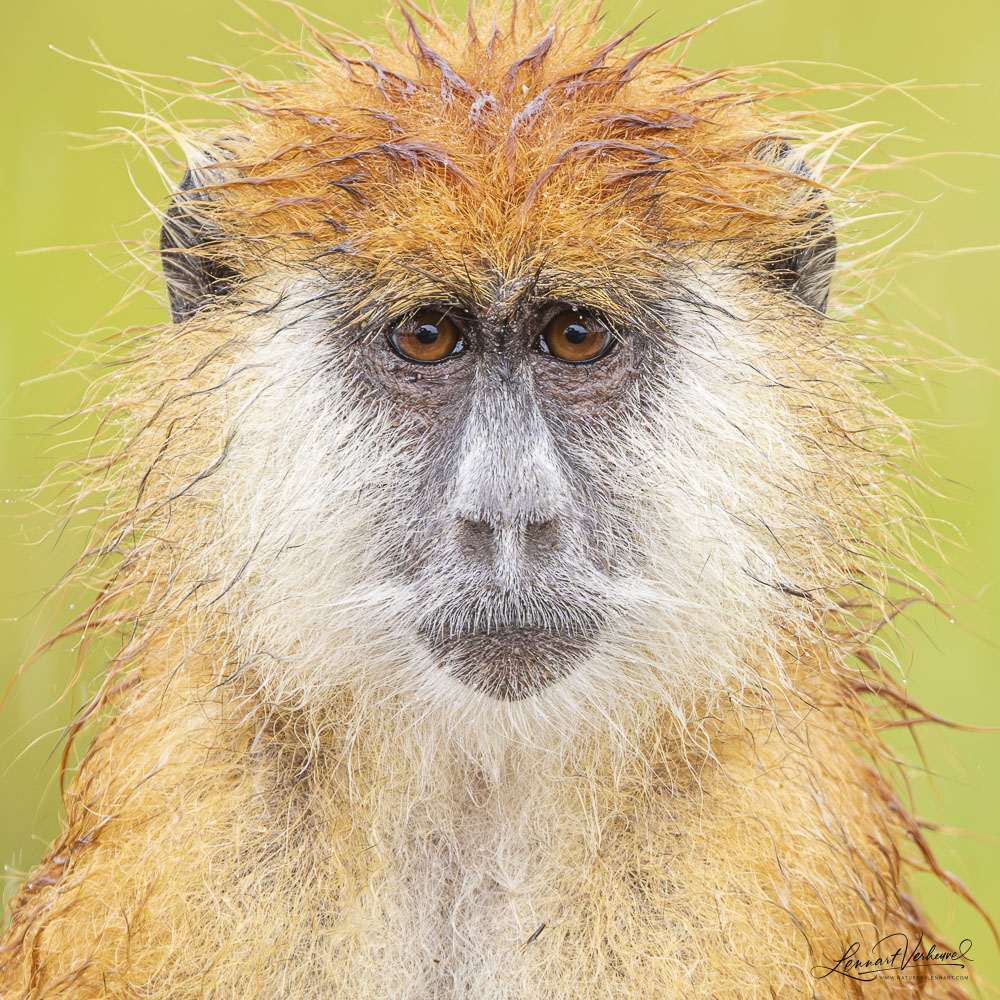
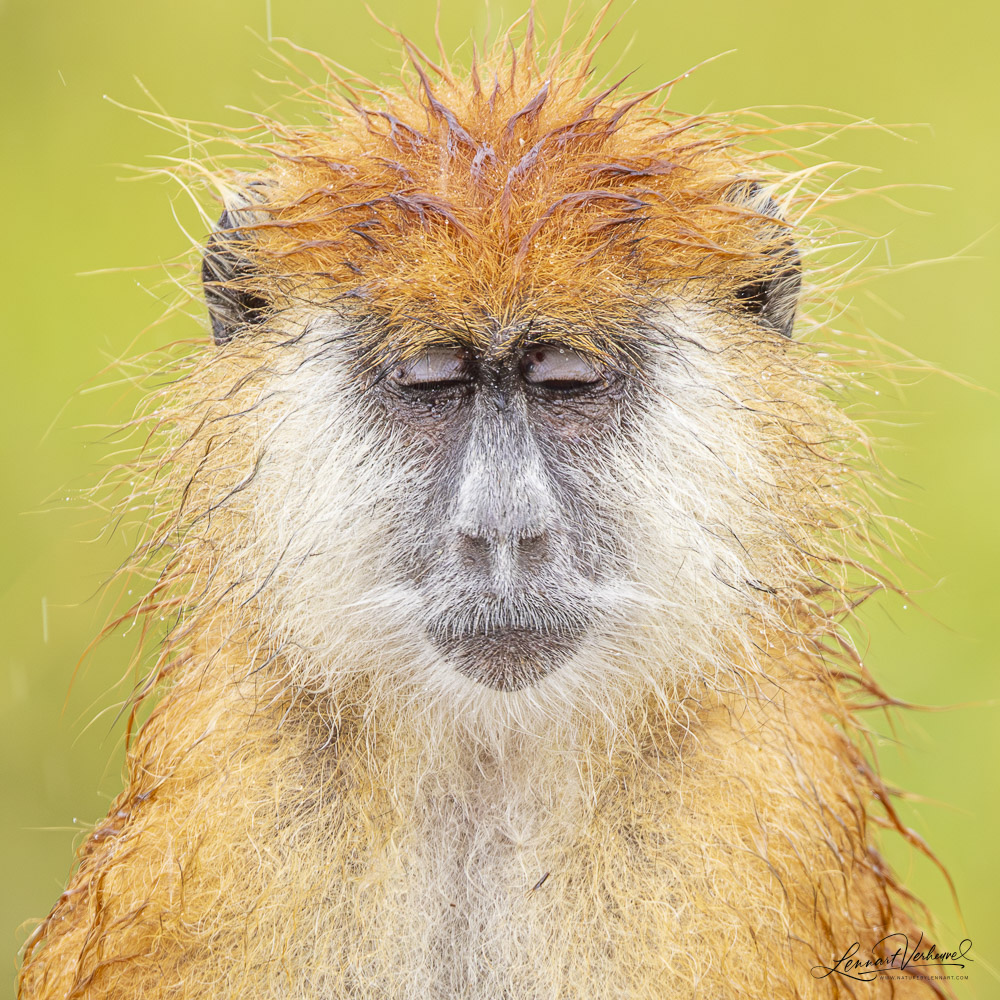
Patas Monkey
Although the afternoon was rather calm, we were mainly looking forward to the night—because that was when things were really supposed to happen! Toward the end of the afternoon, we picked up our local ranger and were ready to get started.
The first excitement came from a Spotted Hyena right next to the car.
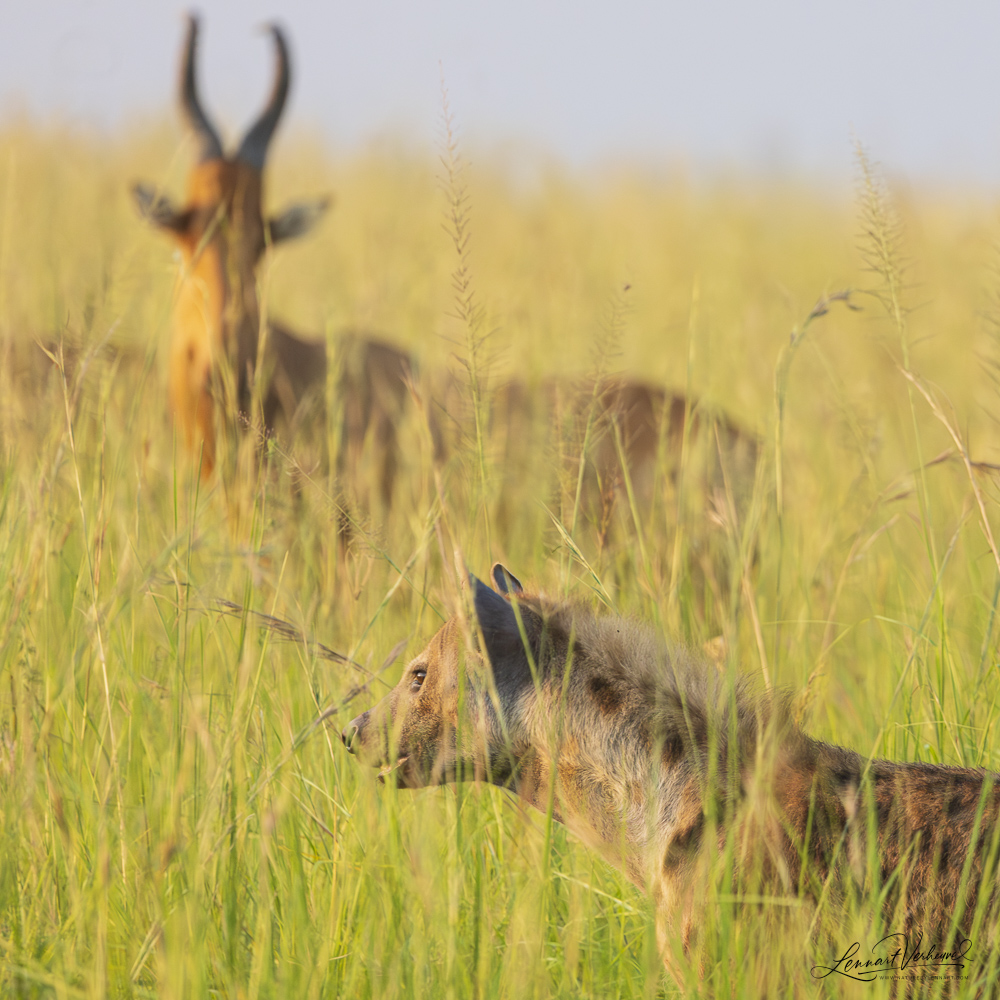
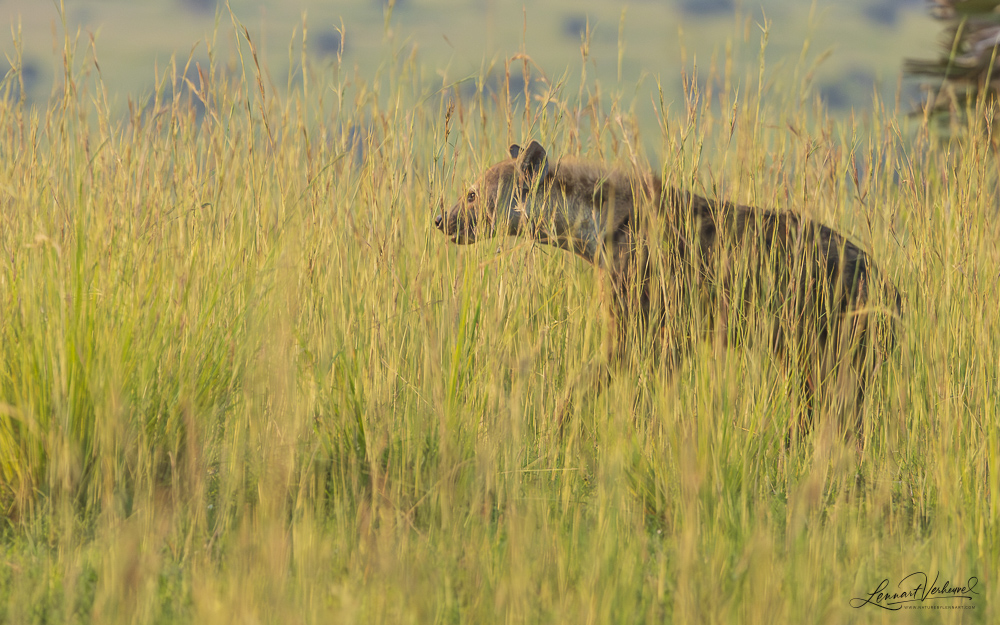
Spotted Hyena
We also had several nice sightings of Black-bellied Bustard.
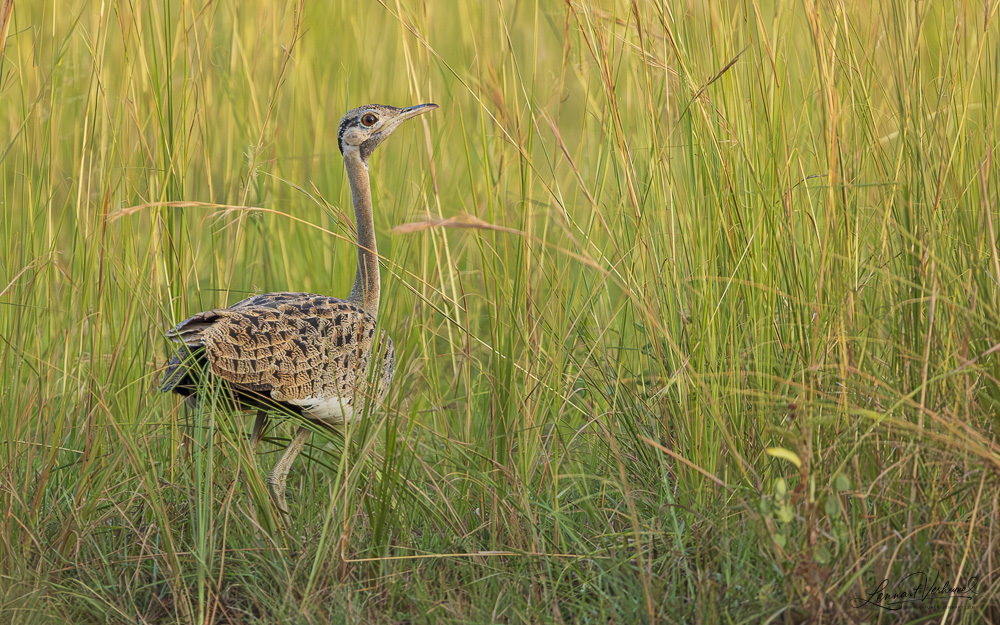
Black-bellied Bustard
We saw a Lion in a tree, but it didn’t do much besides sleep.
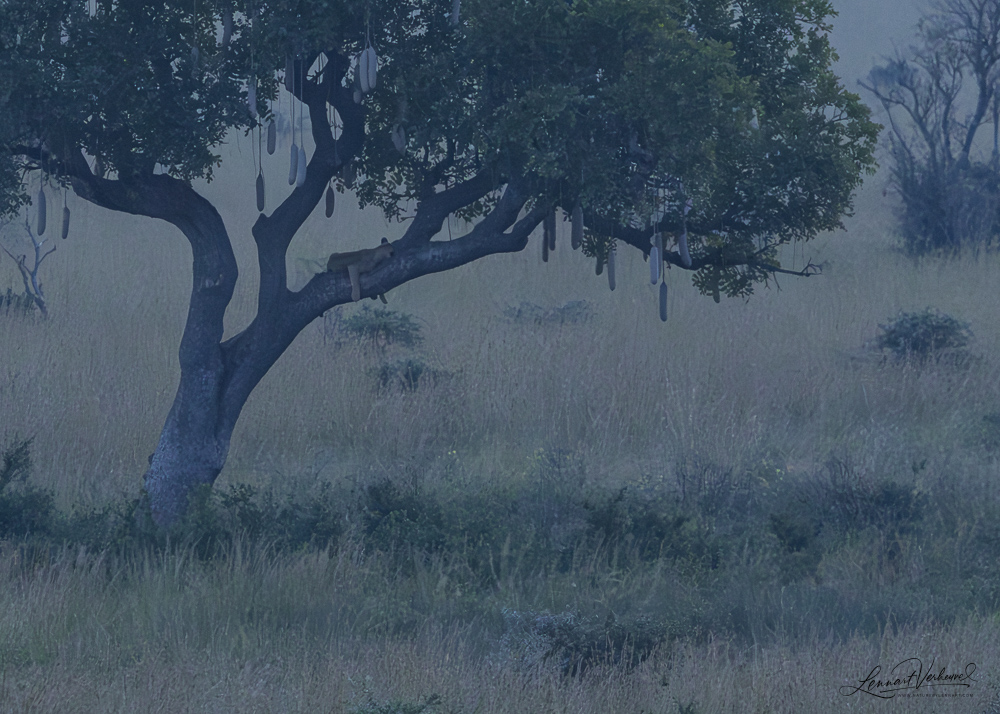
Lion
A real highlight came when we spotted a Verreaux’s Eagle Owl in a tree. I had wanted to see this magnificent owl for a long time, and I was very happy that it finally worked out. Despite the low light, I managed to get some nicely detailed photos—sometimes the camera sees more than the human eye!
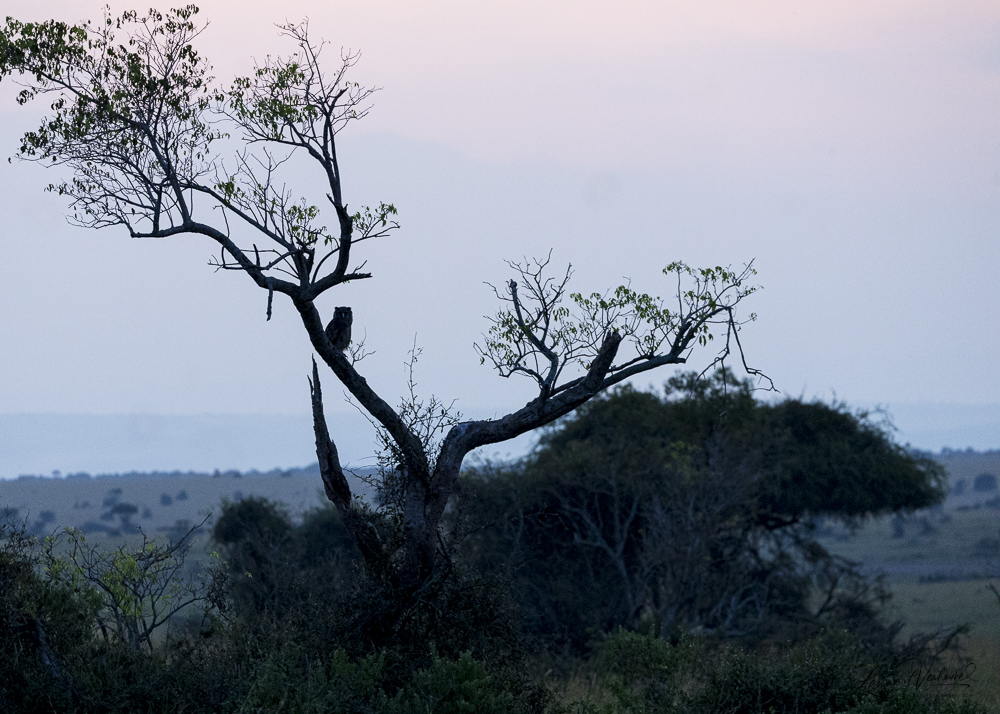
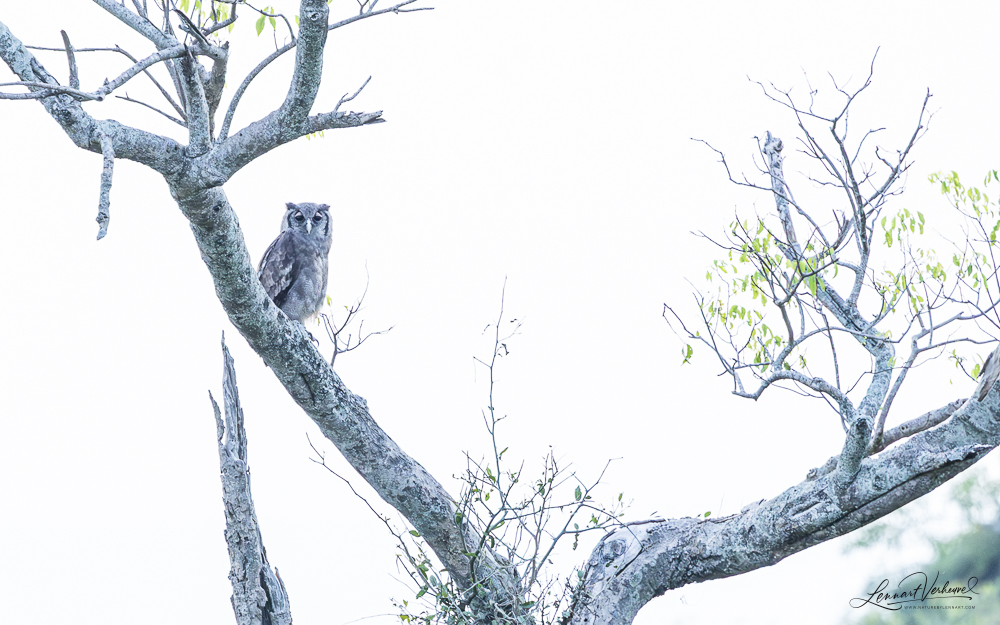
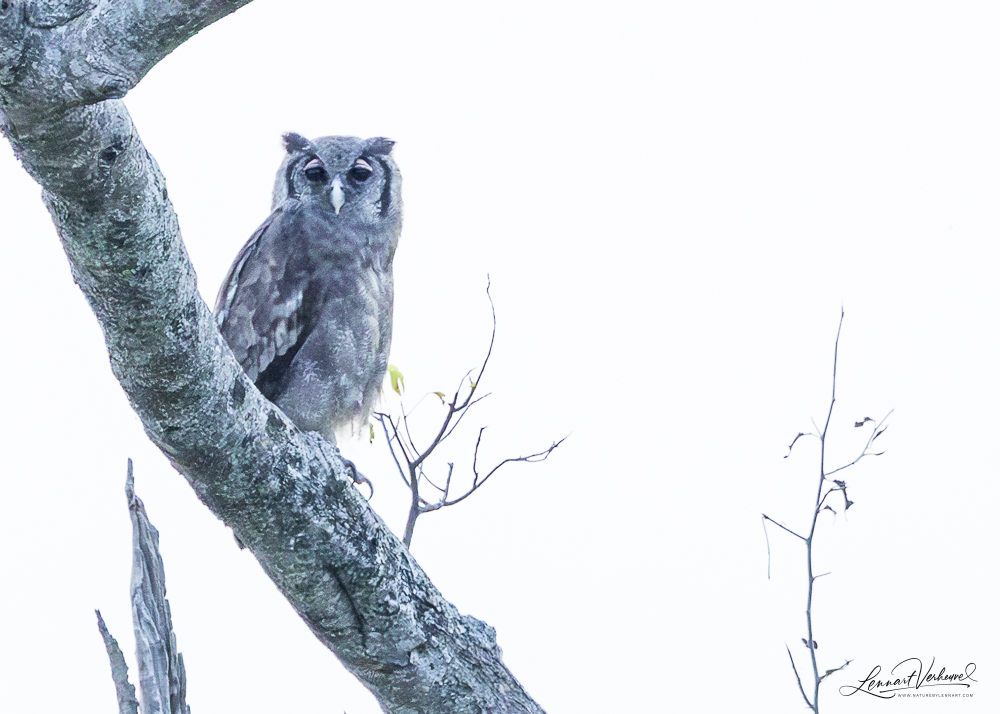
Verreaux’s Eagle Owl
It was also interesting to see all the Grey-crowned Cranes gathering together in a single tree to sleep.
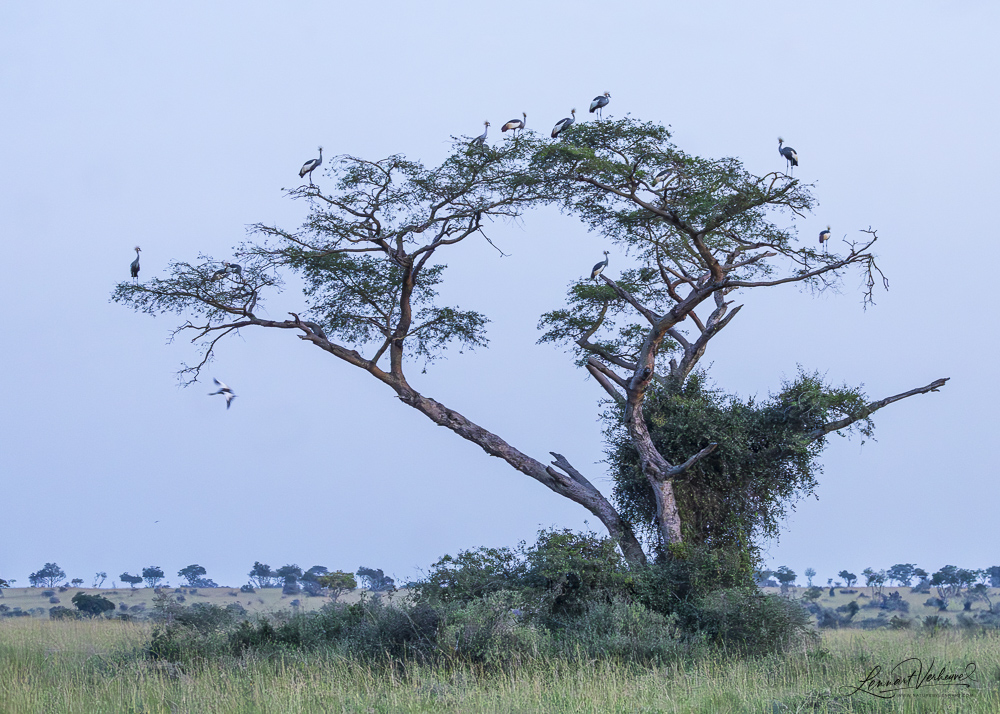
Grey-crowned Crane
When the sun had truly set, we began spotlighting. Previously we hadn’t had much luck with nightjars—we just didn’t see that many—but now we certainly couldn’t complain. It started off calmly, with the occasional nightjar on the road, which we identified as Long-tailed Nightjar.
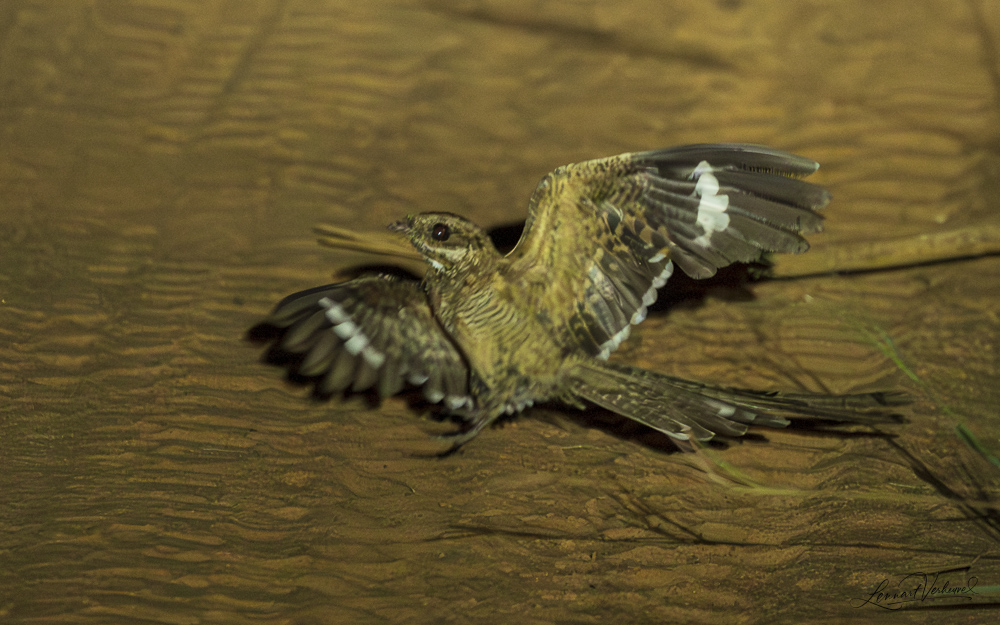
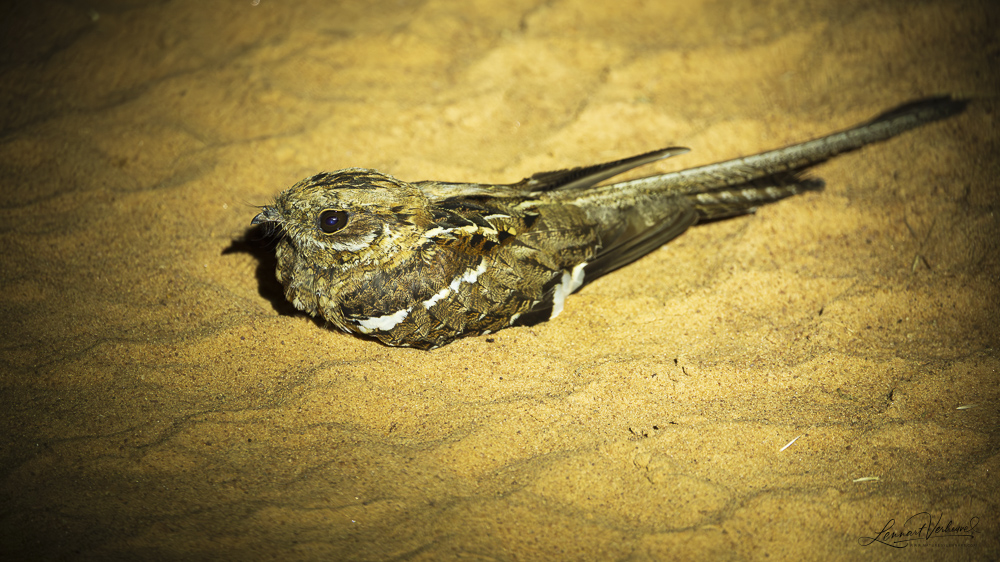
Long-tailed Nightjar
At one spot where we turned the car around, I finally found another species high on my wish list: the Bunyoro Rabbit. Or at least, I thought I had found this almost Ugandan endemic. However, when I studied the photos later, it turned out I had actually photographed an African Scrub Hare. After this day, I did see more animals in Murchison and Kidepo that I identified as Bunyoro Rabbits, but I didn’t take the time to check them properly. So unfortunately, that species had to come off the list. Still, the Scrub Hare sighting was excellent, so that counts for something.
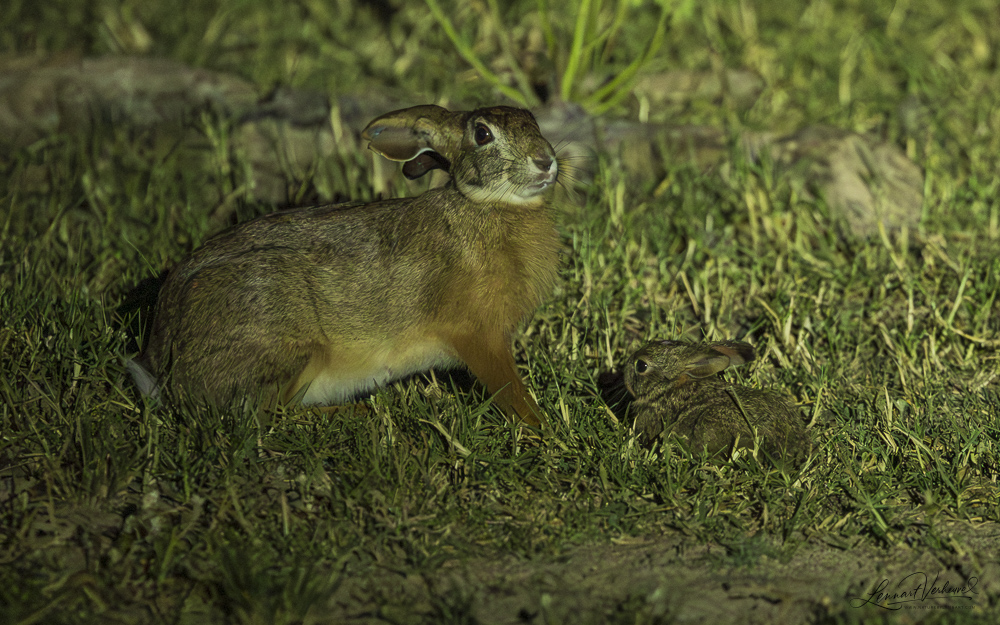
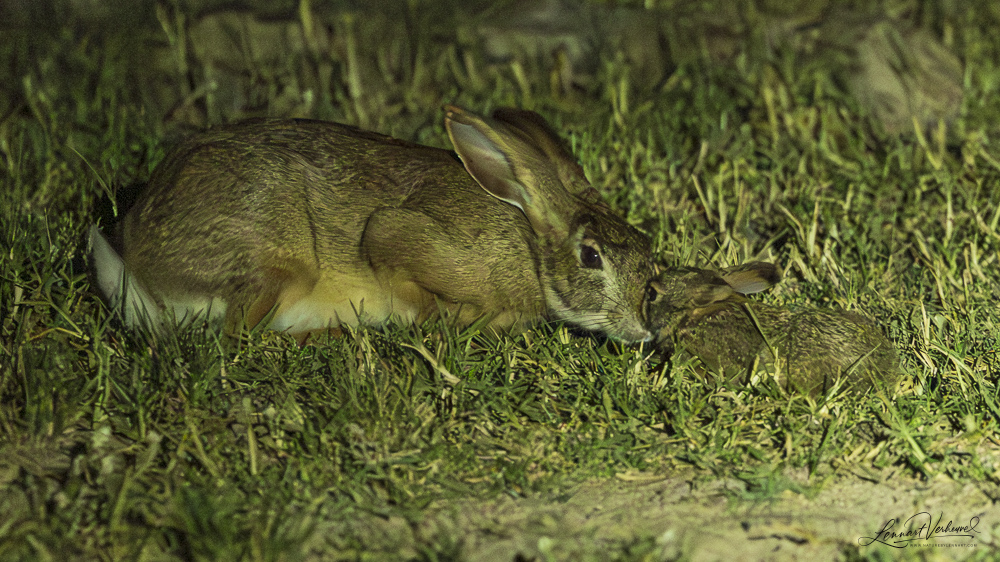
African Scrub Hare
On the way back, the nightjar show really took off: there were so many on the road that it almost became a problem. By photographing as many birds as possible, I hoped to collect enough material to identify several species later. For some, the ID is yet to be determined…
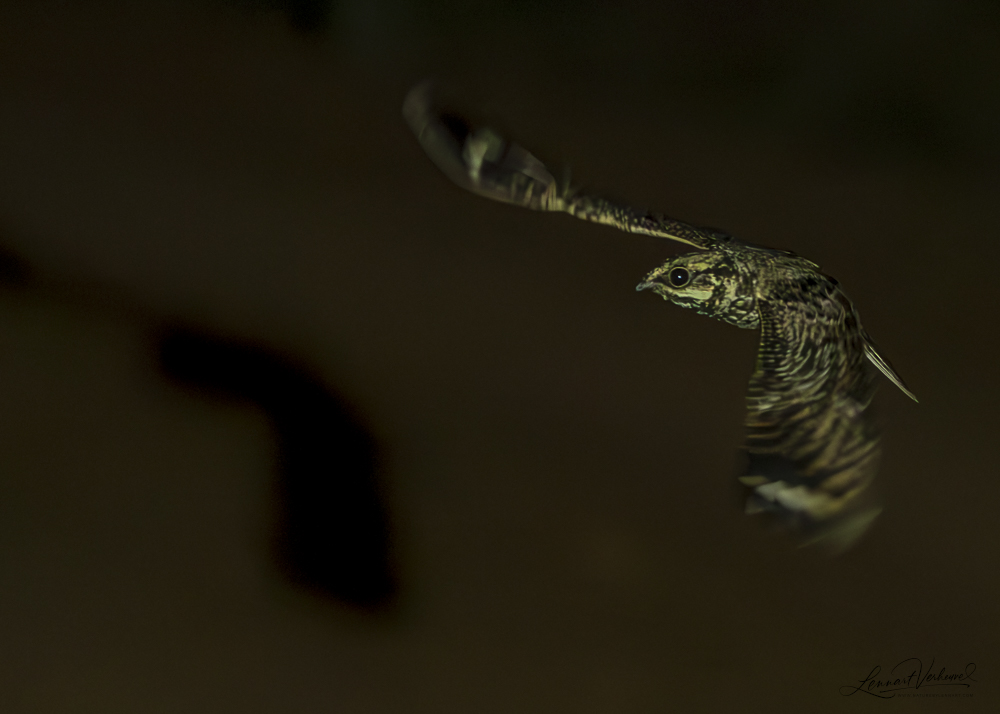
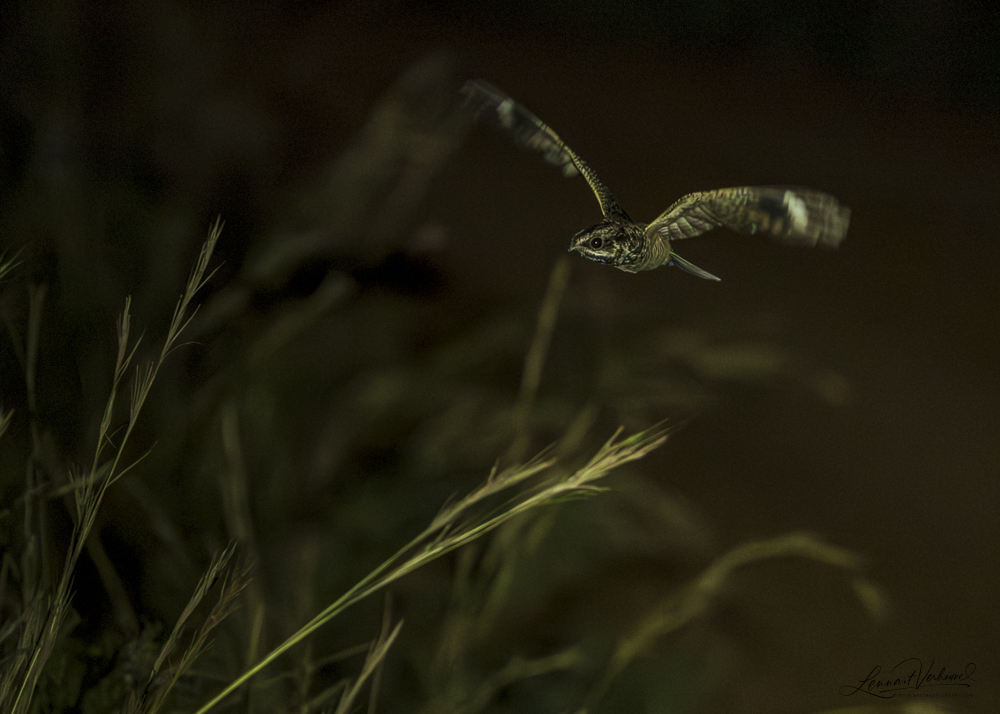
Swamp Nightjar?
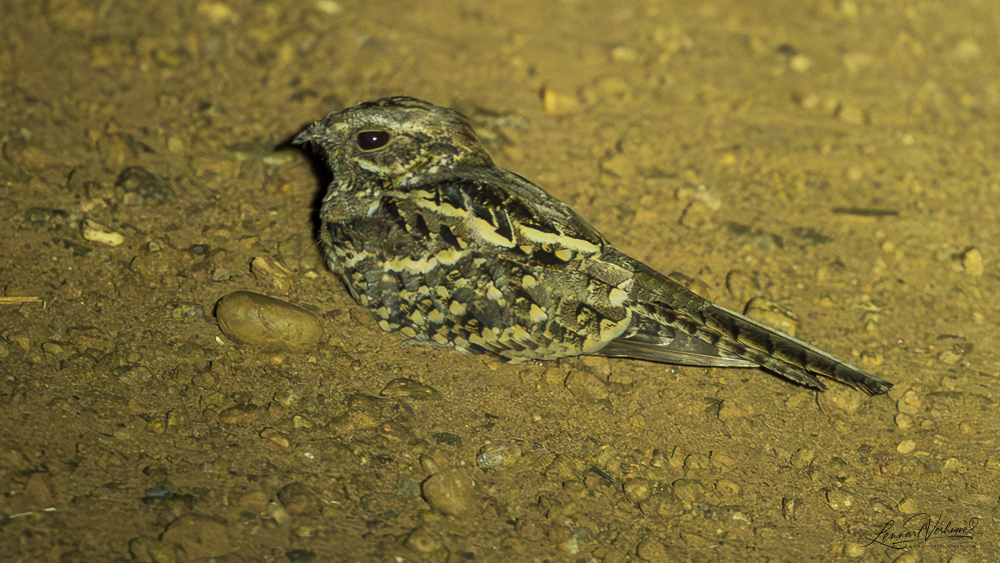
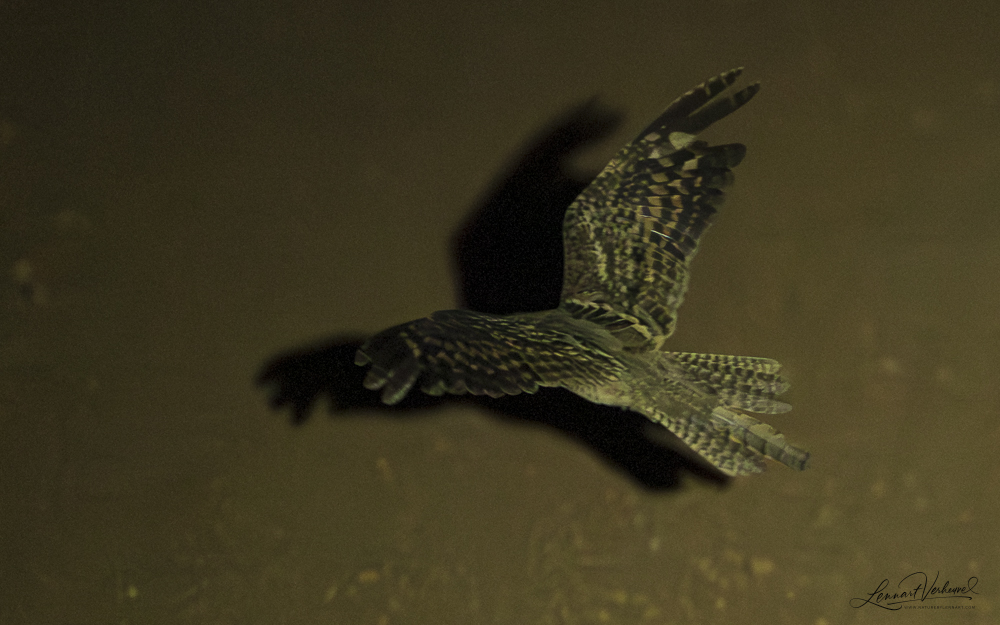
Plain Nightjar?
One species was easy to recognize: the Pennant-winged Nightjar. The male is obviously distinctive, but even the female is quite recognizable because of her size.
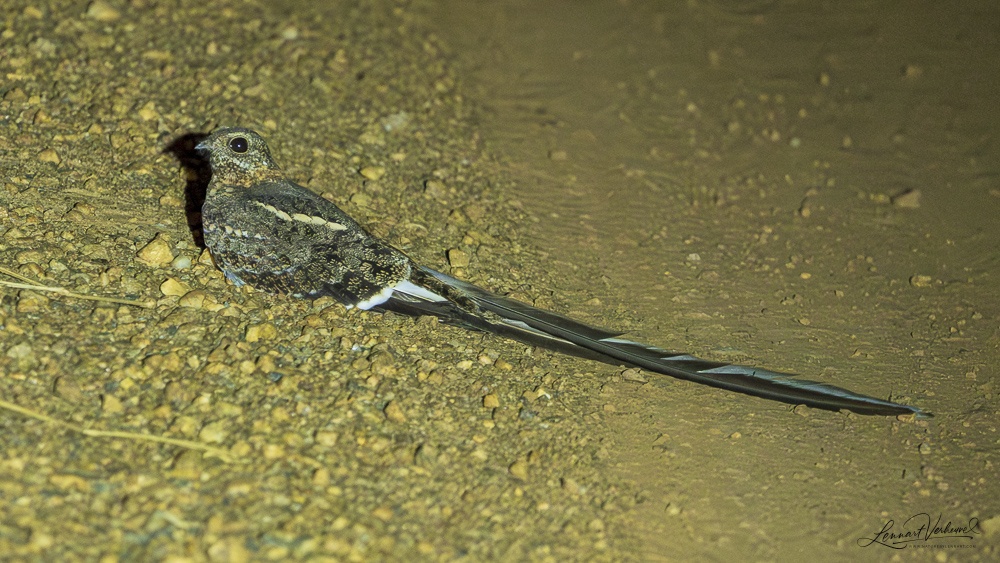
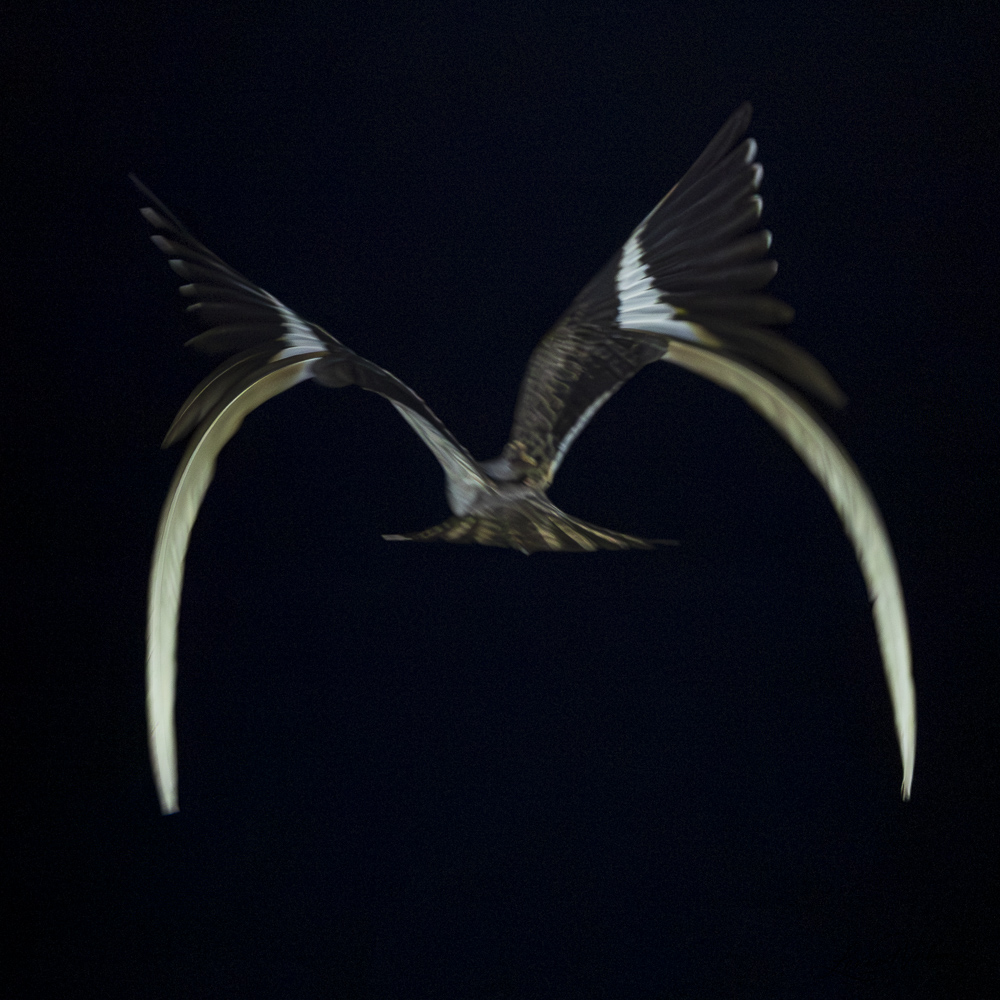
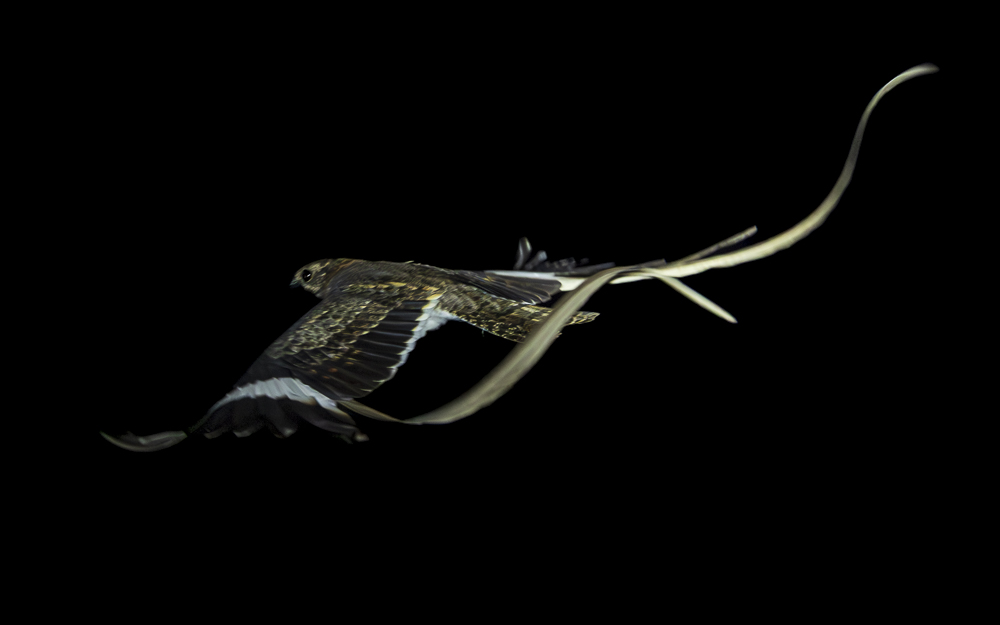
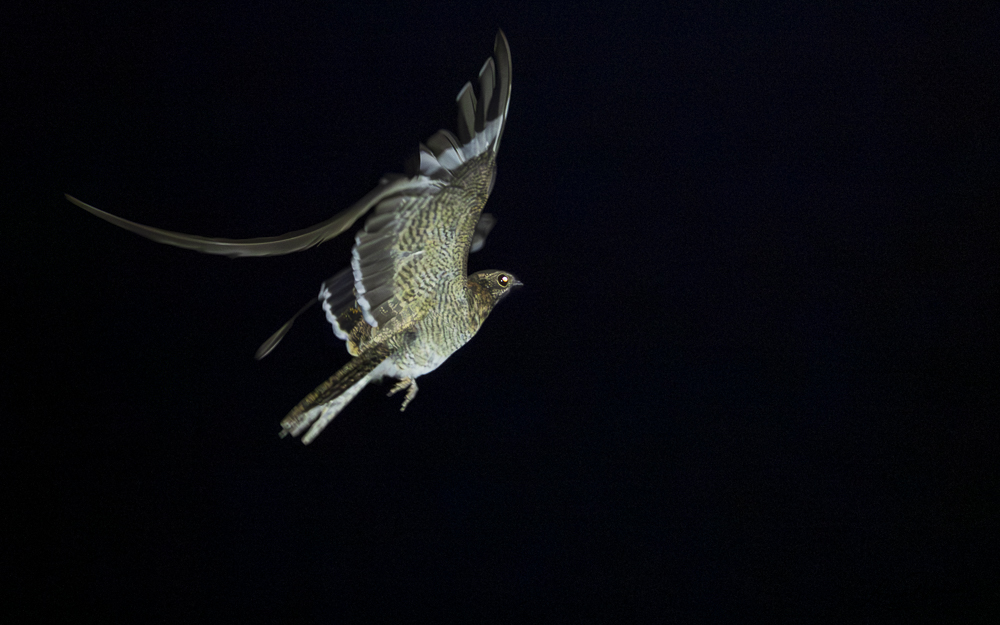
Pennant-winged Nightjar (male)
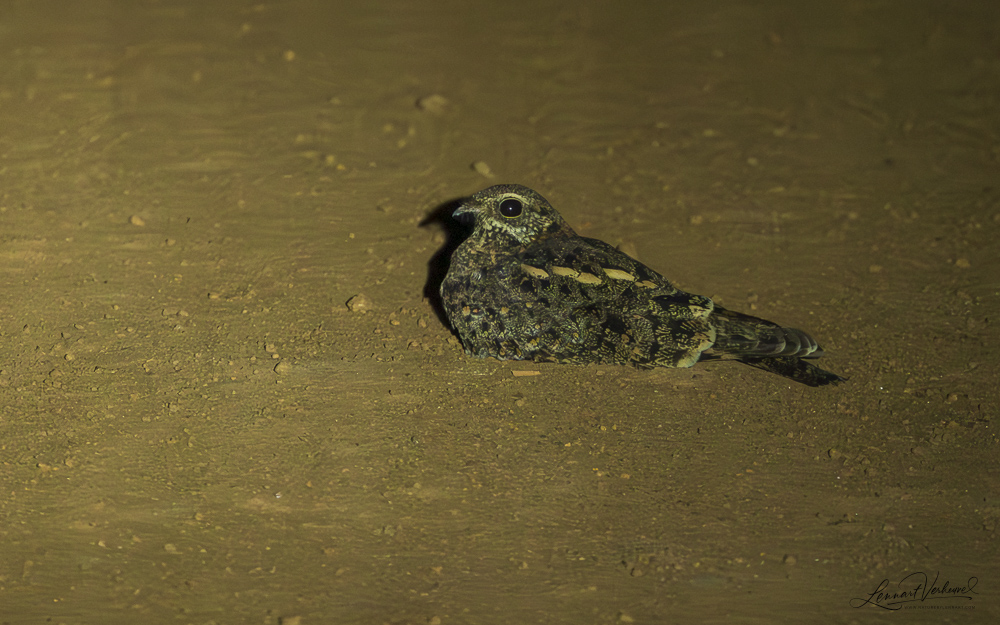
Pennant-winged Nightjar (female)
Among all the nightjars, we suddenly encountered another nocturnal bird—a new owl species! We hadn’t yet seen the Greyish Eagle-Owl, so we managed both eagle-owl species in one evening. I even succeeded in taking some decent flight shots!
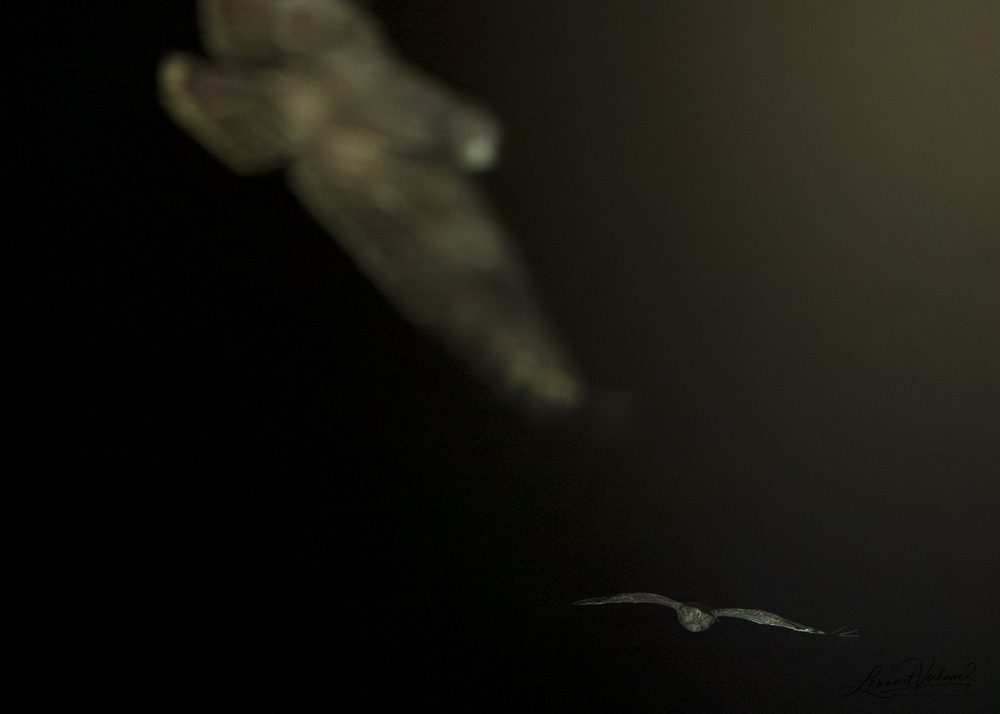
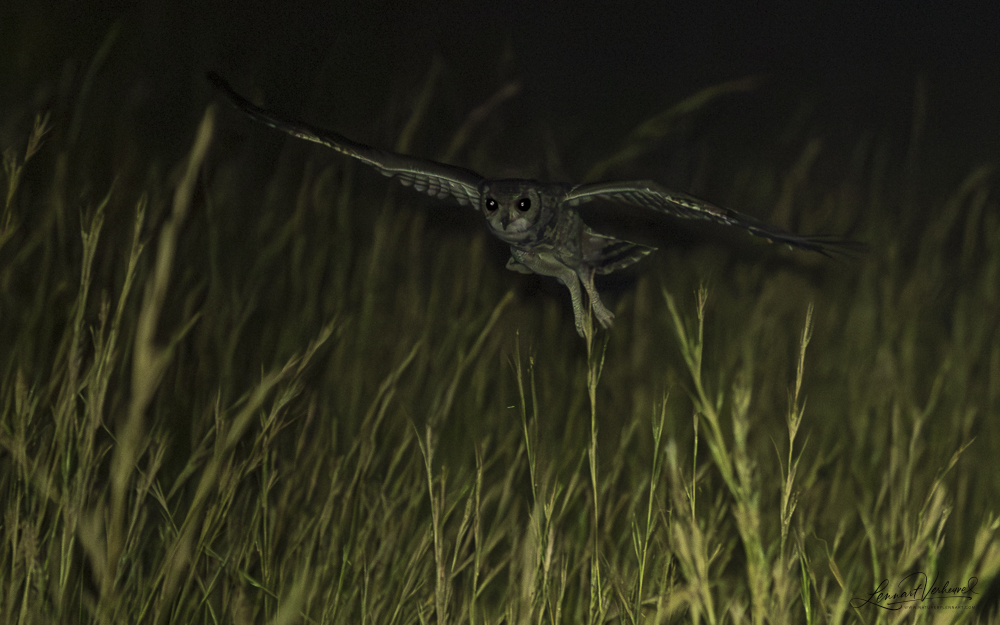
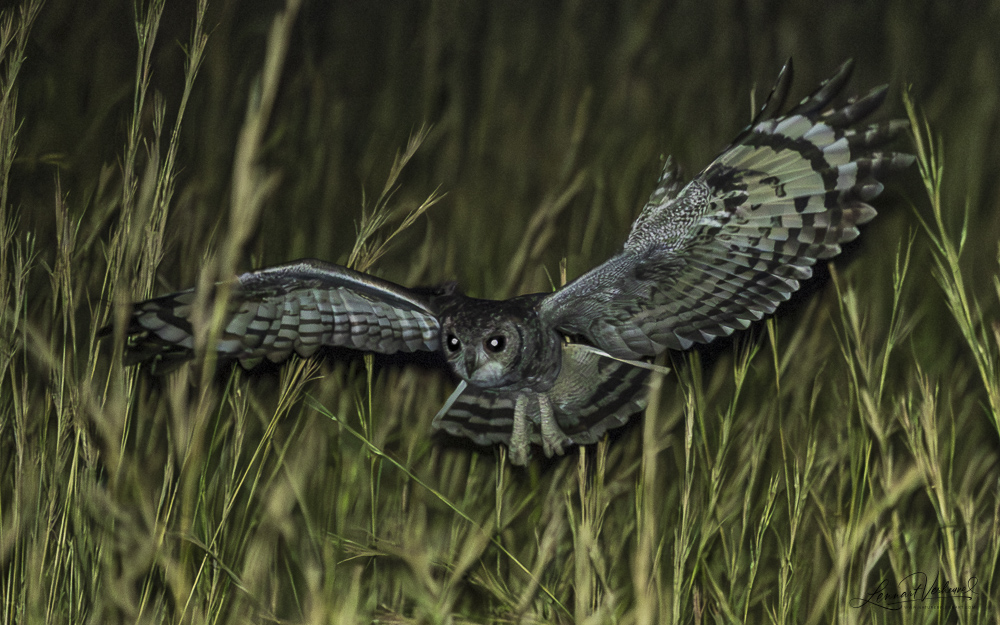
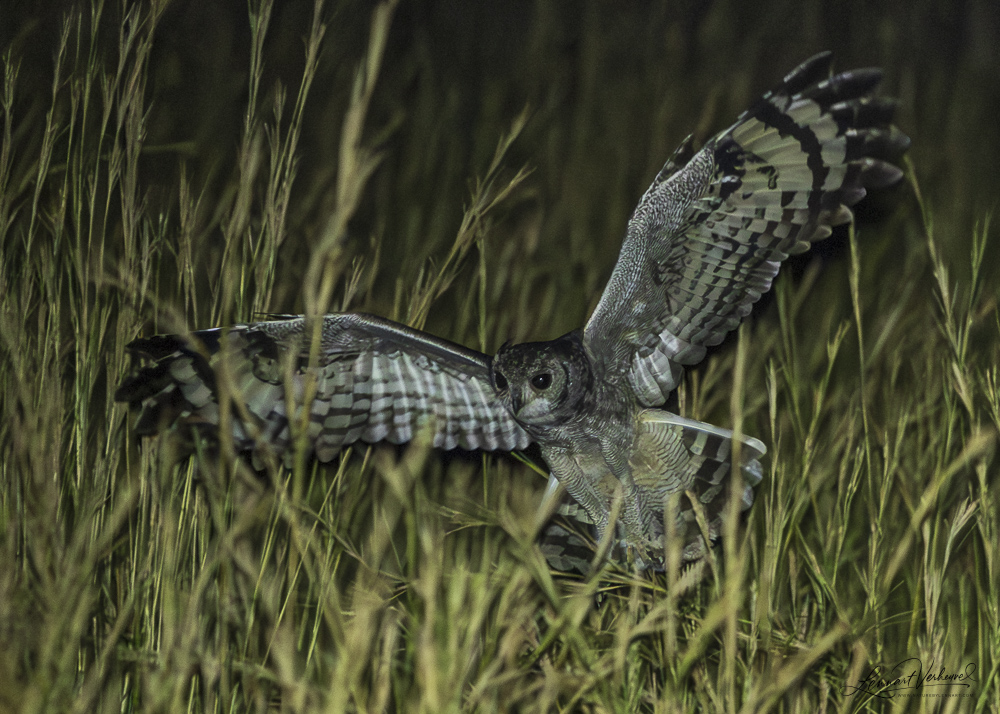
Greyish Eagle-Owl
Among the mammals, an encounter with two Spotted Hyenas was especially enjoyable. Just a few meters from the car, they gave us long, clear views.
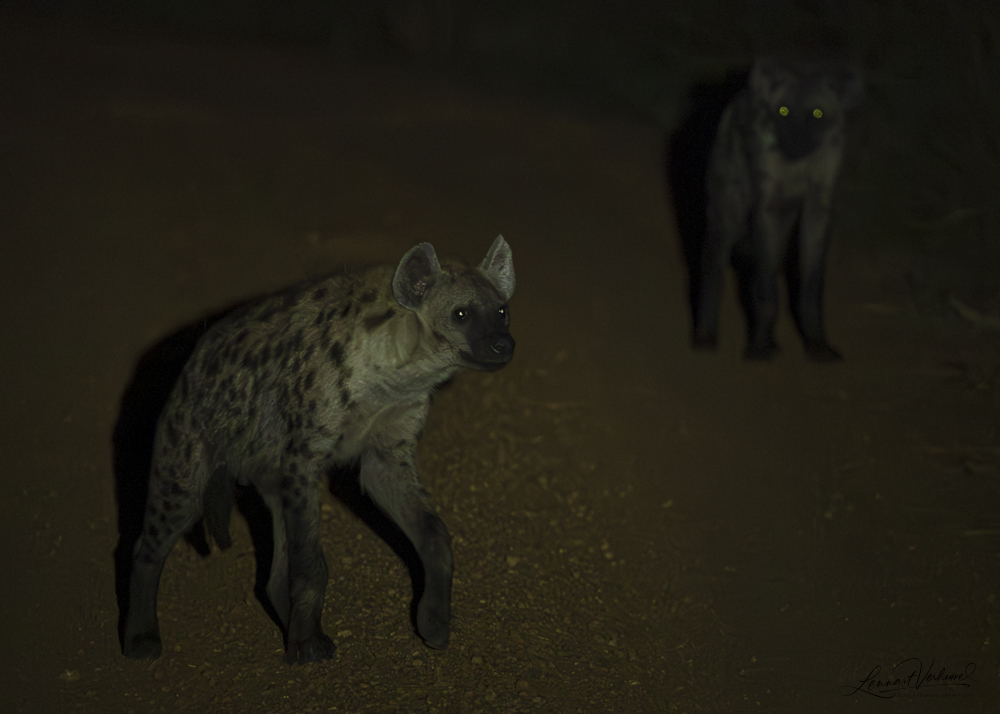
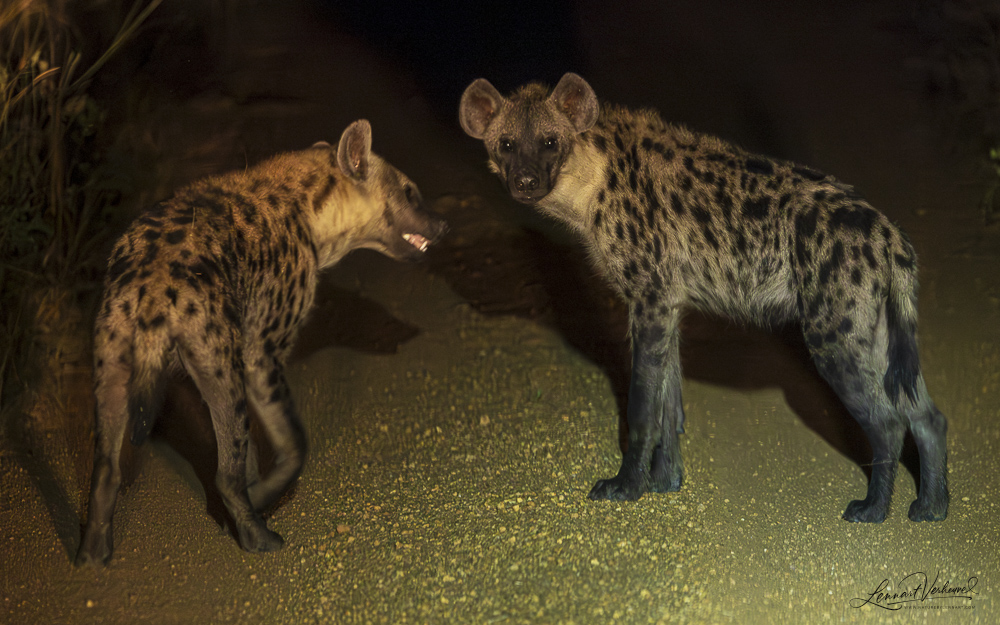
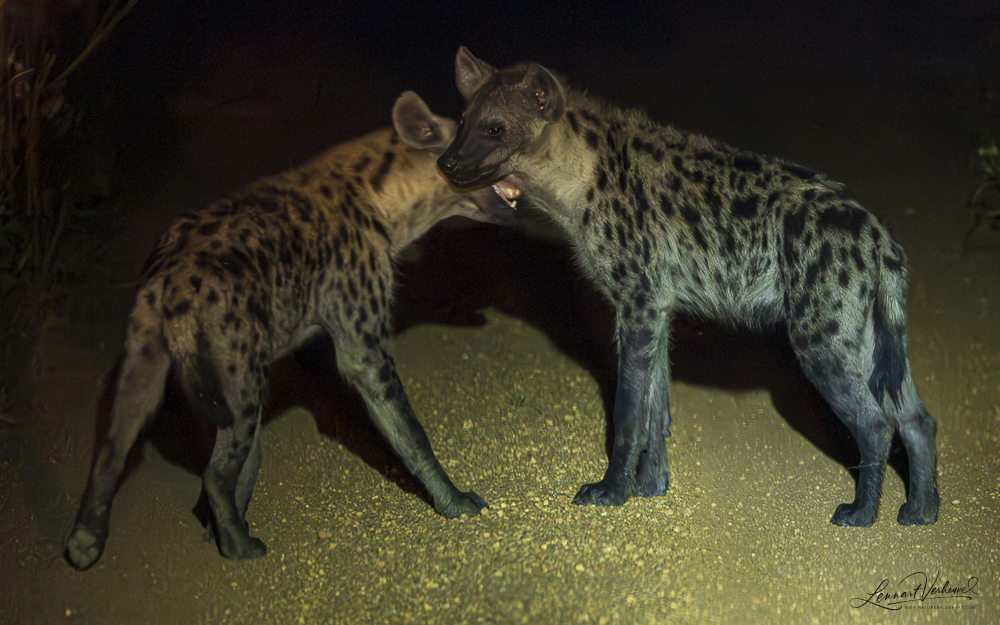
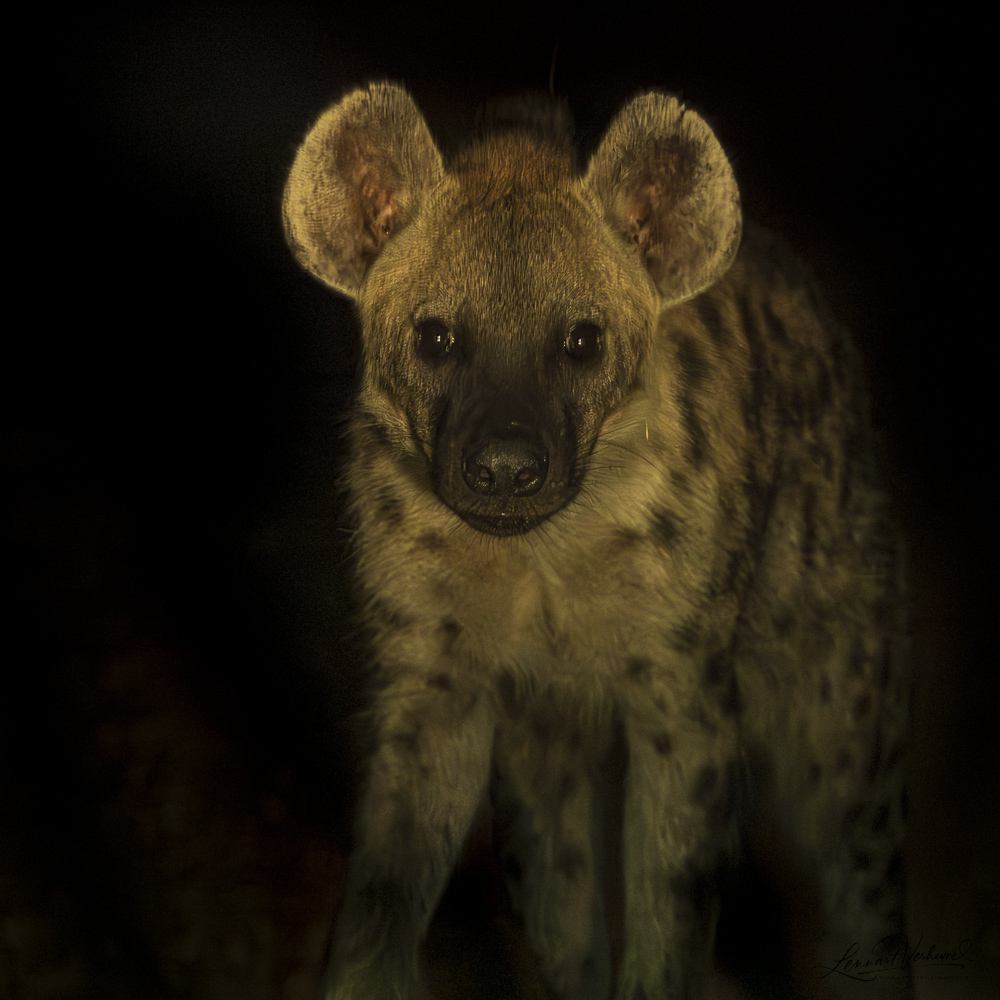
Spotted Hyena
The night, however, ended with an absolute highlight: a large male Leopard beside the car! This predator was lying in the grass by the roadside and allowed us to watch it for several minutes. It was a perfect ending to a fantastic day in Murchison Falls National Park.
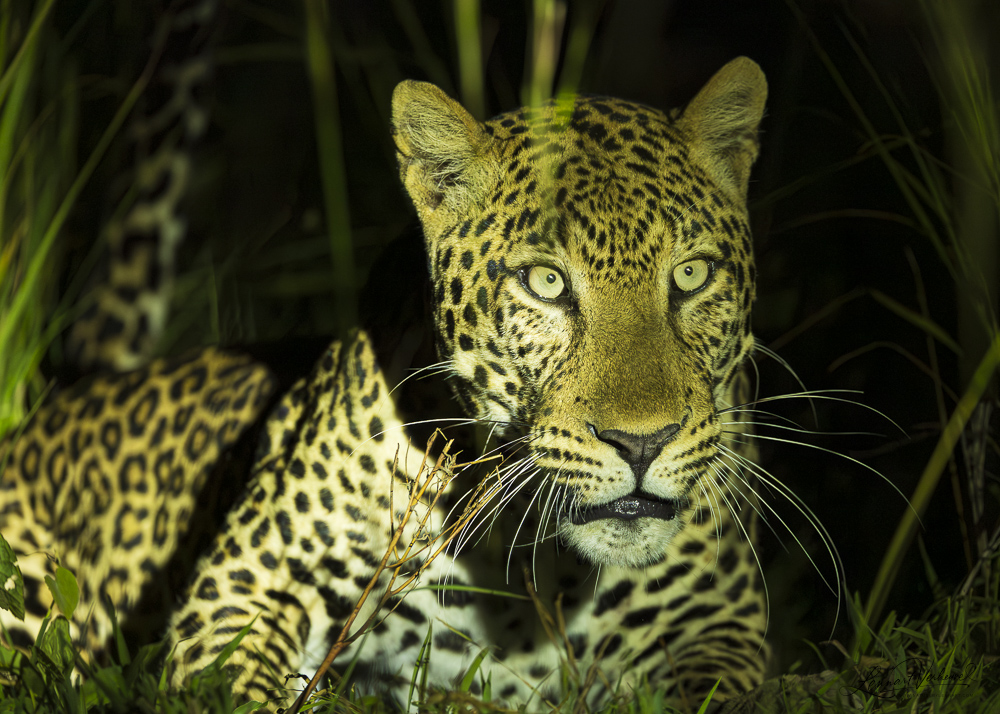
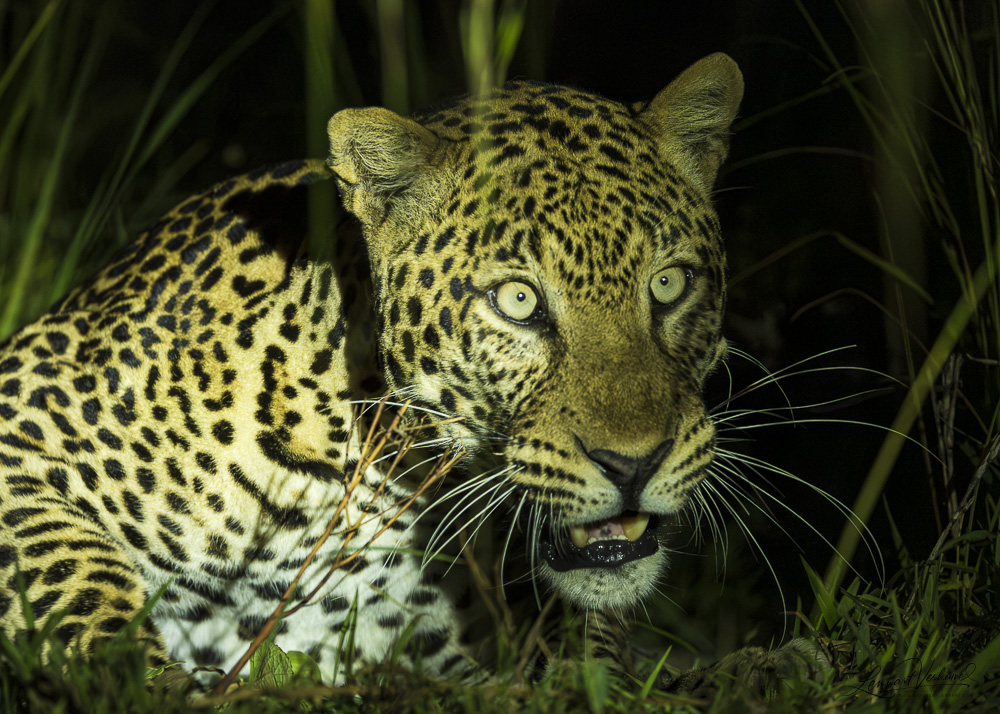
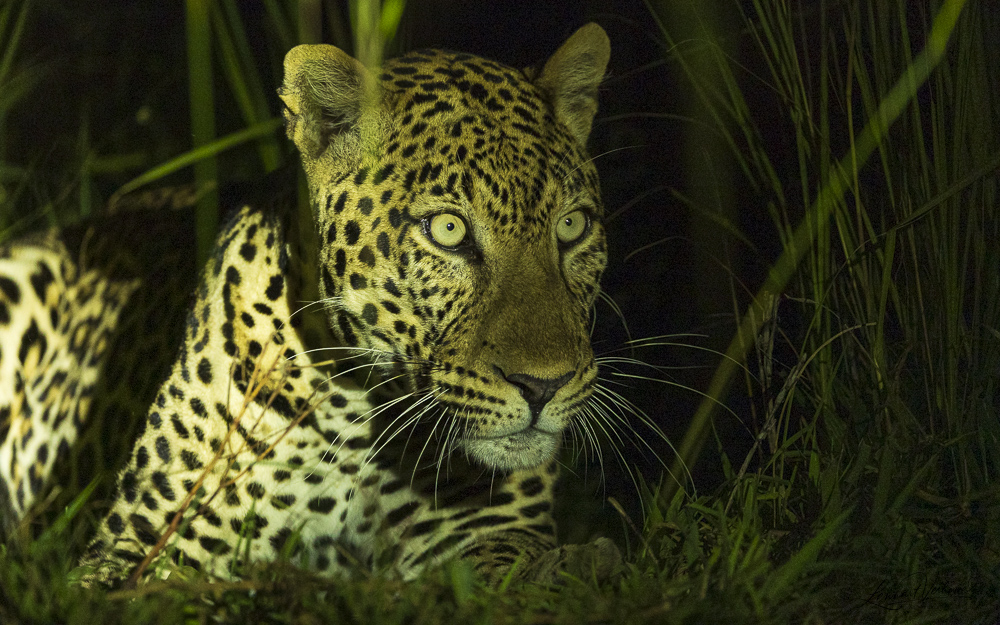
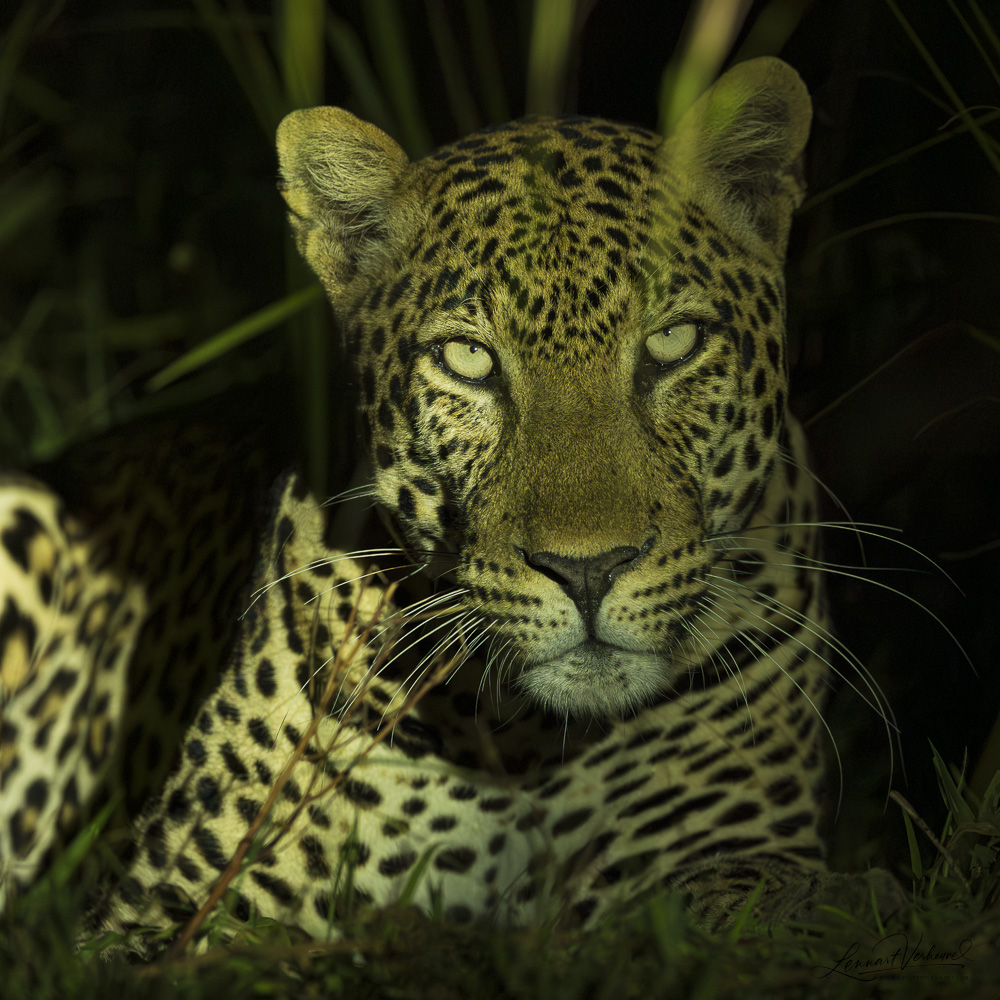
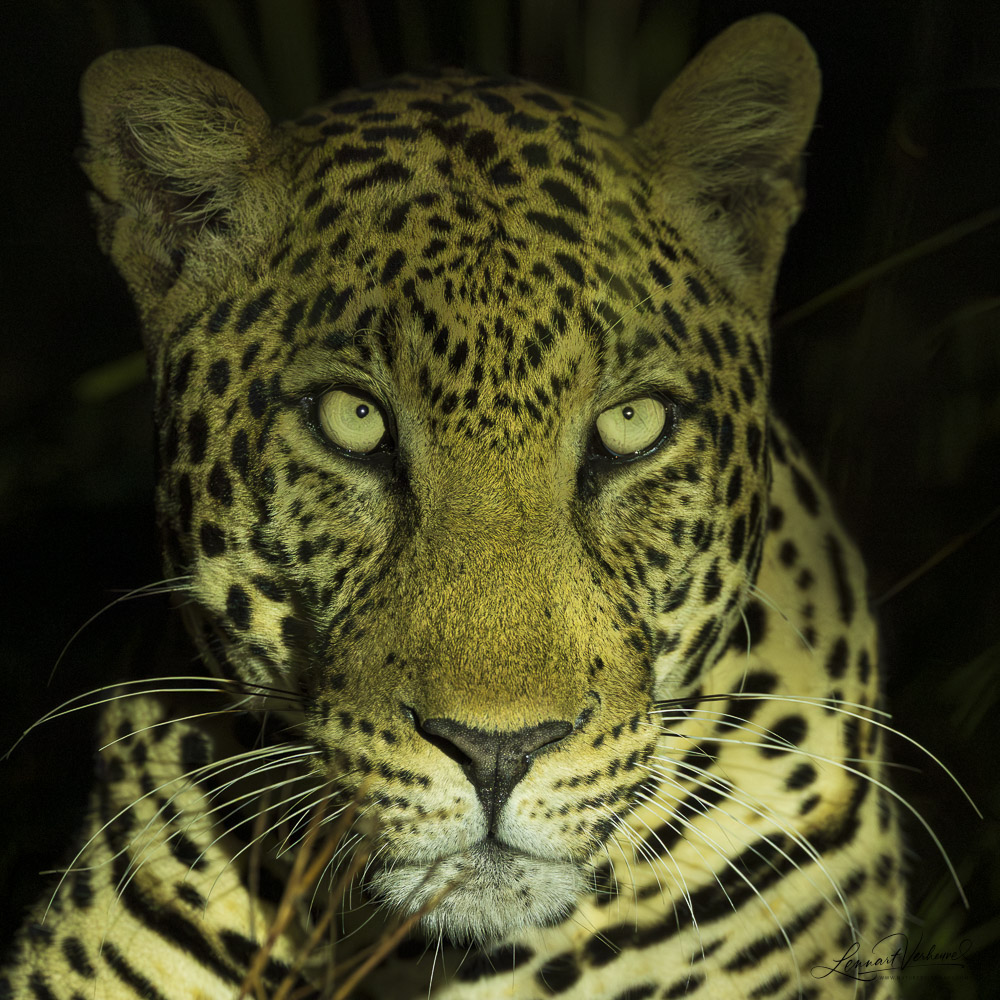
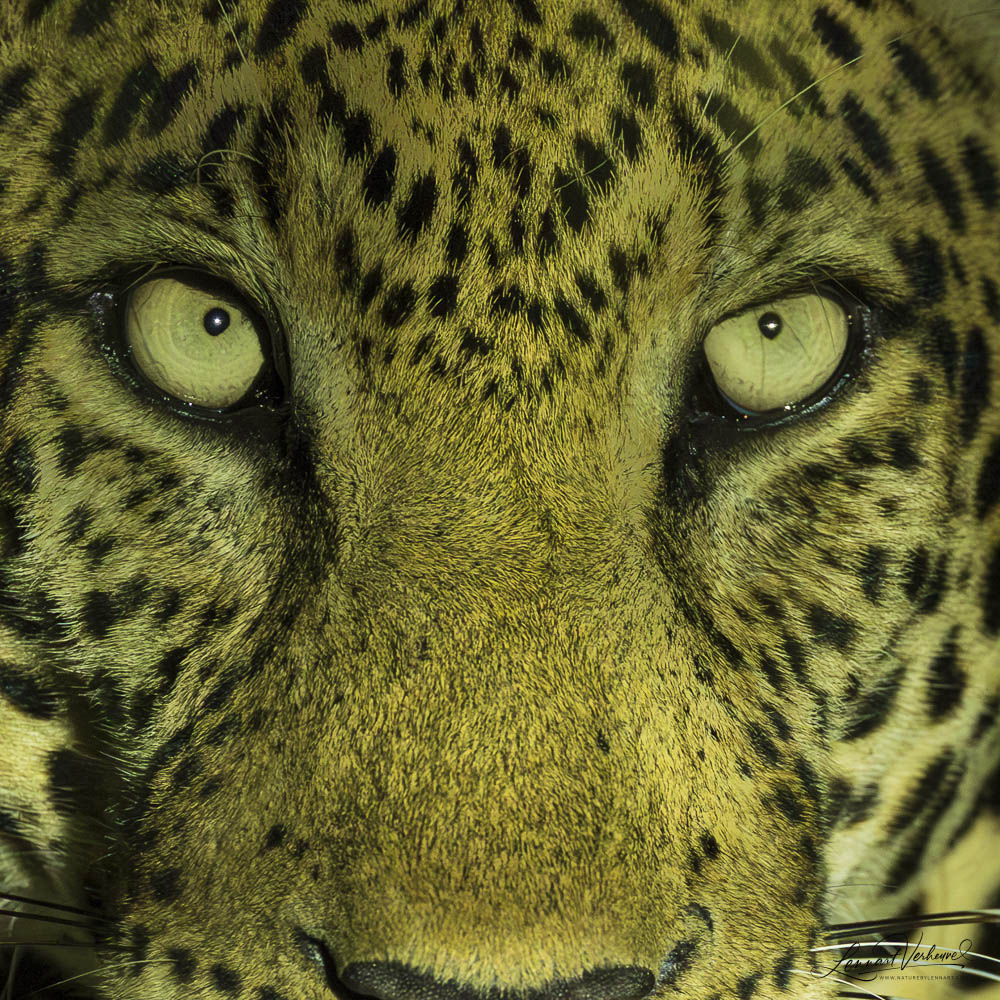
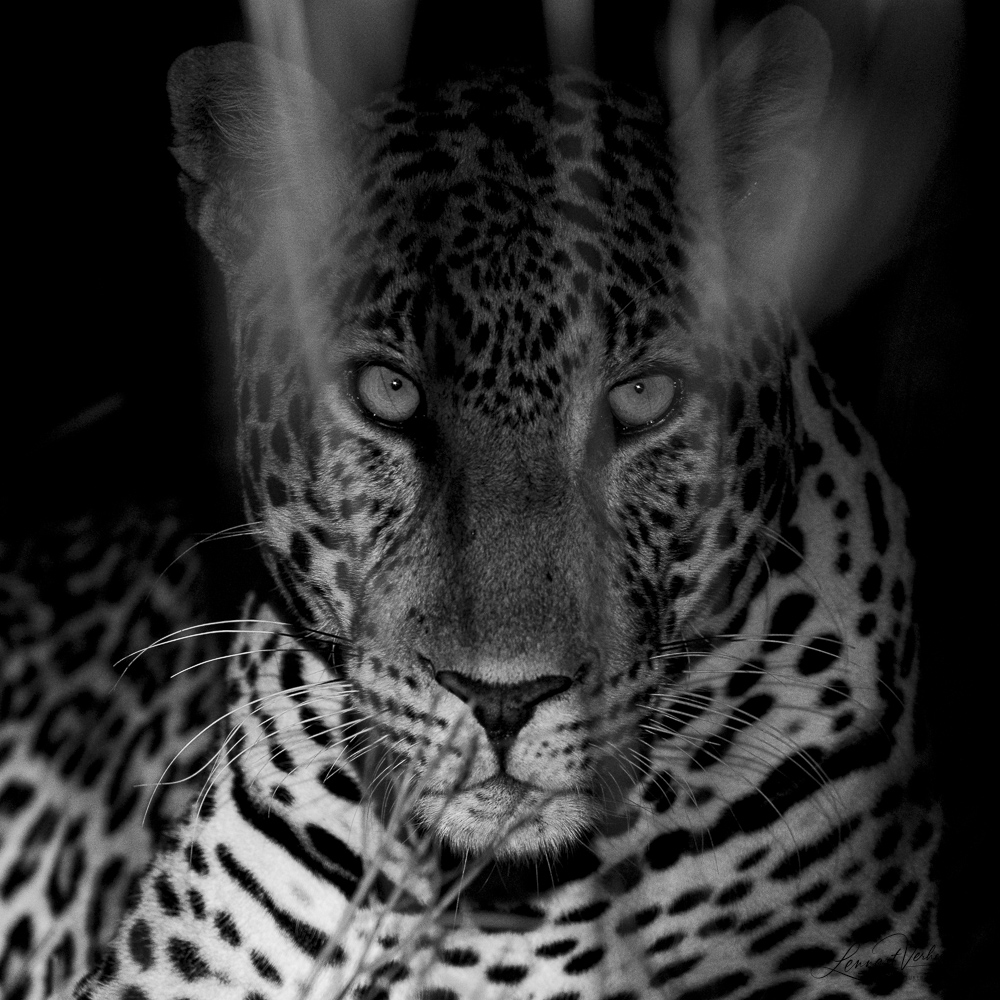

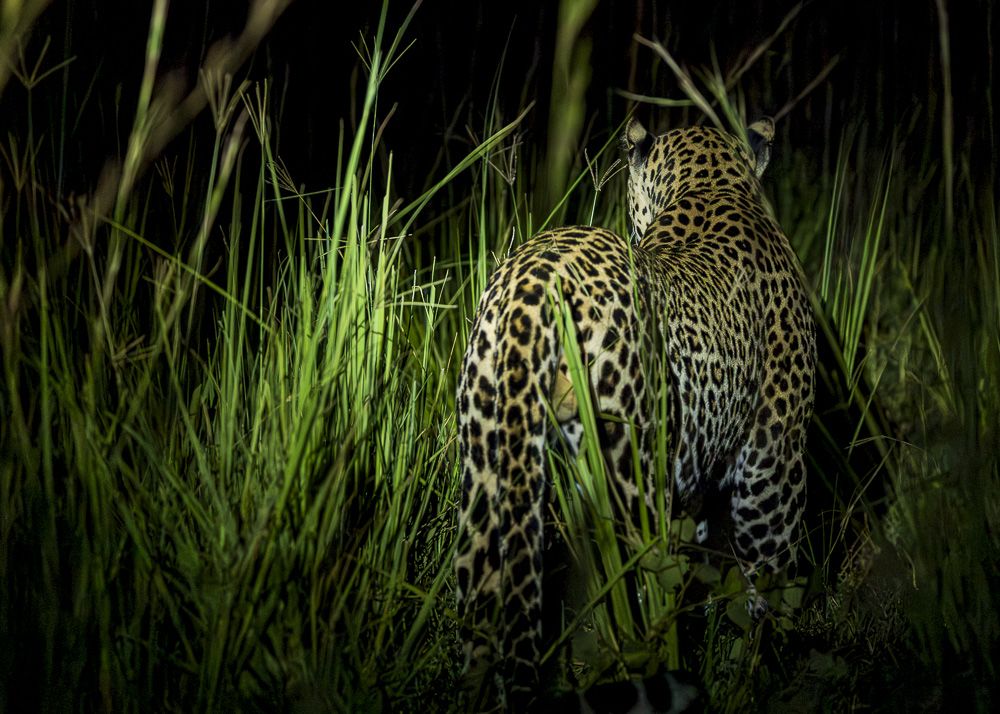
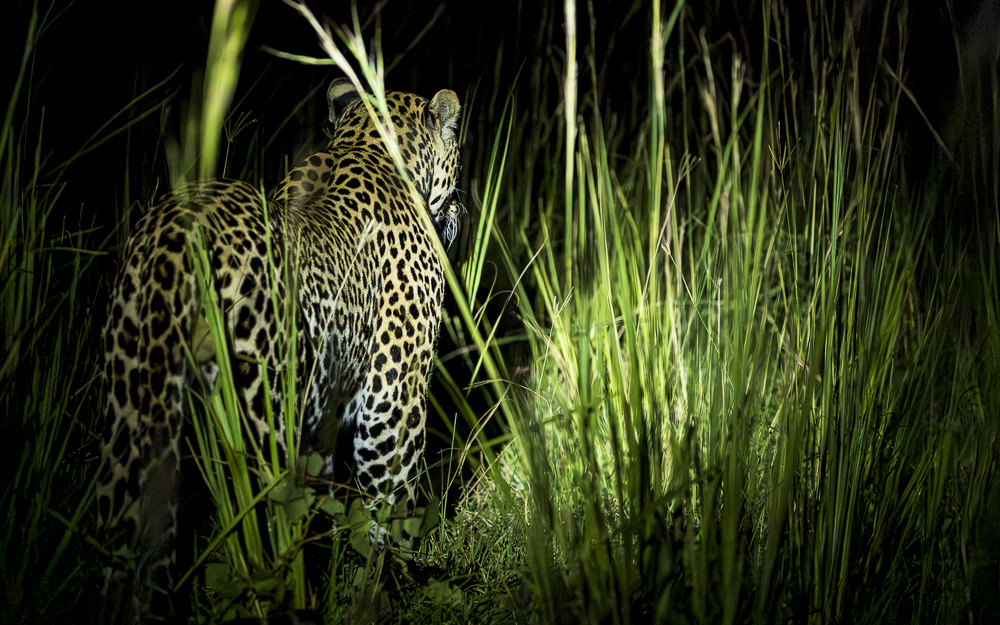
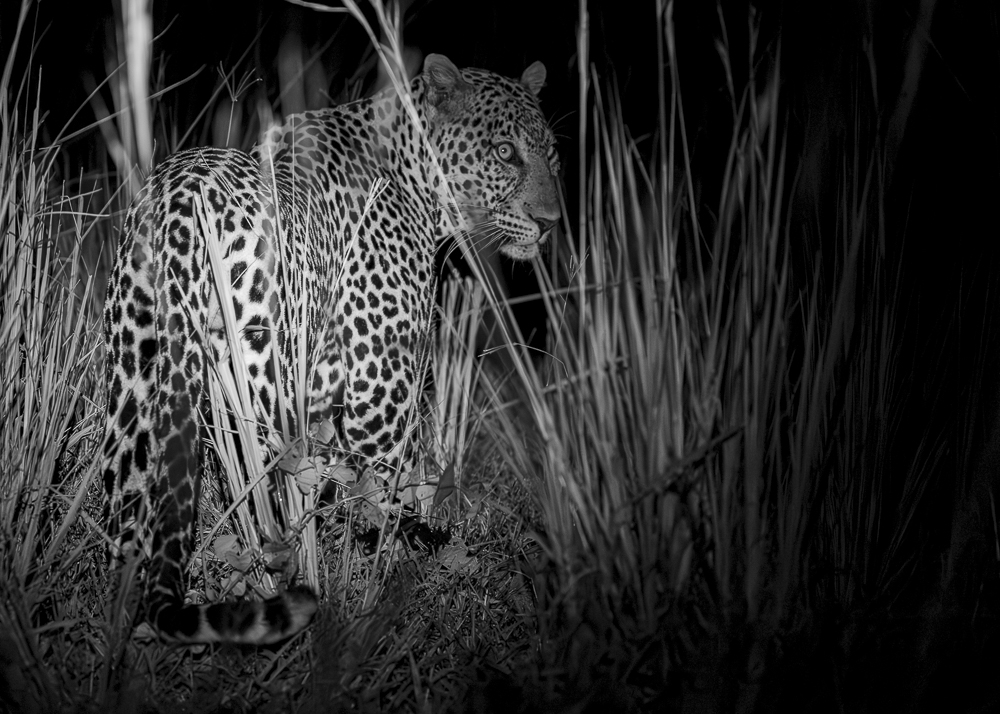
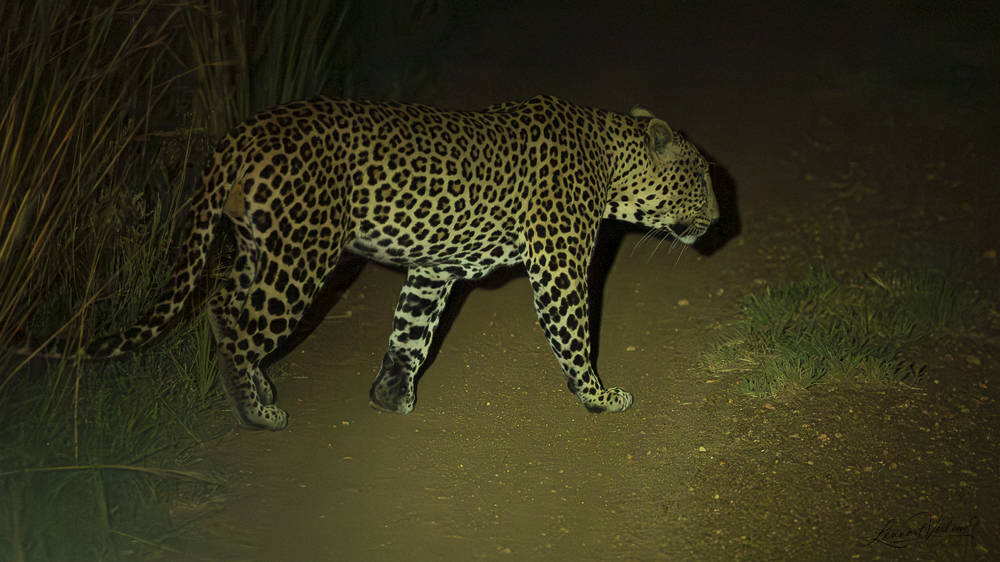
Leopard
The next day, we left the park behind, but not before adding another raptor to our list: the Red-necked Falcon. We even saw three birds chasing each other.
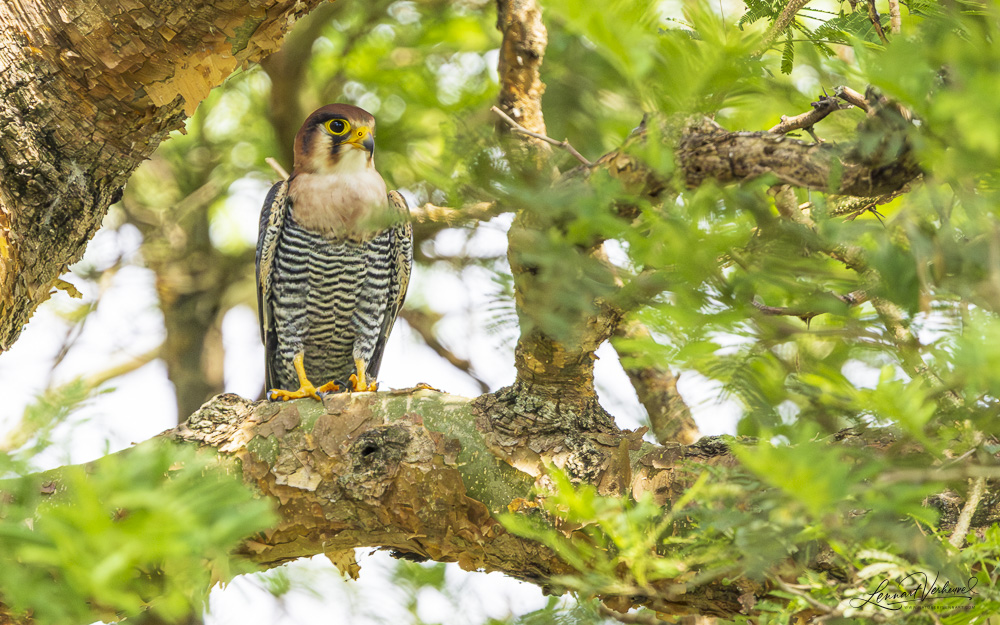
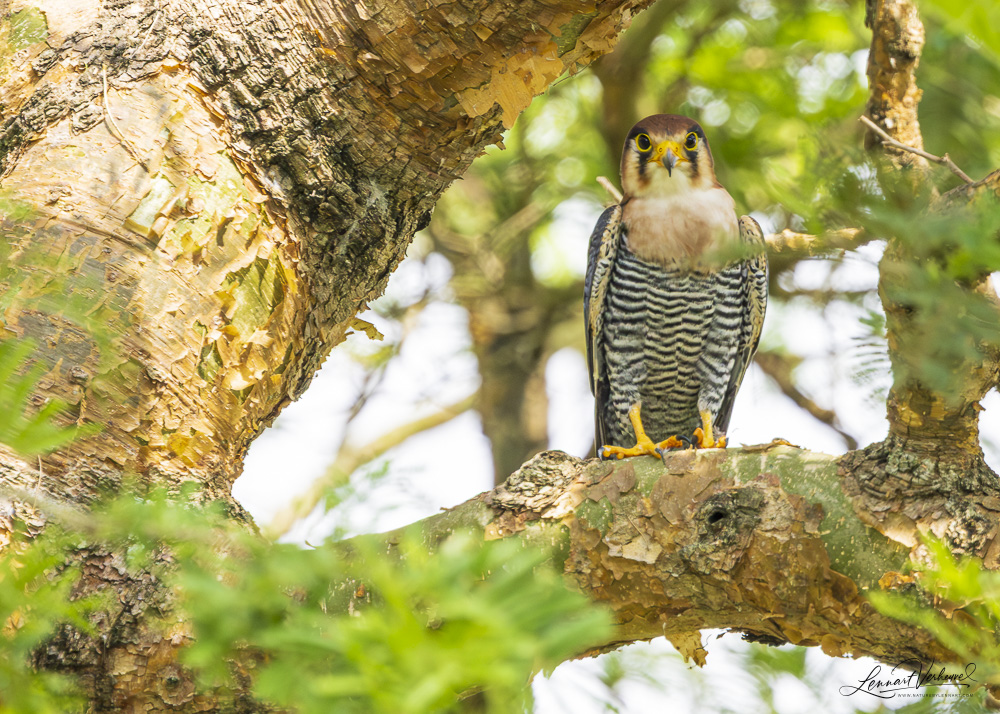
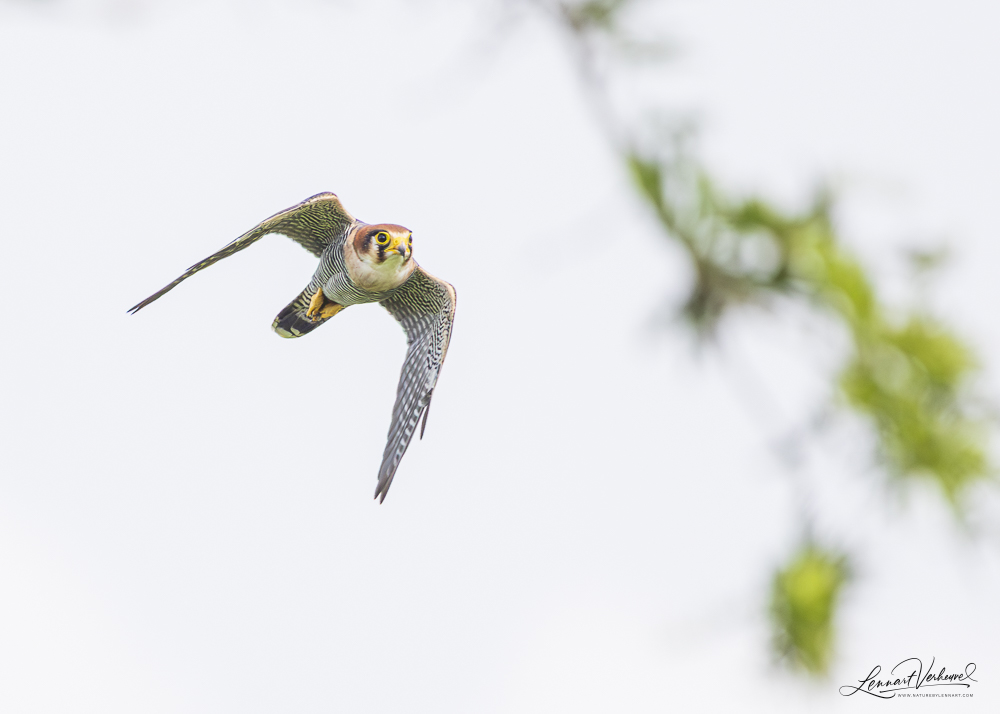
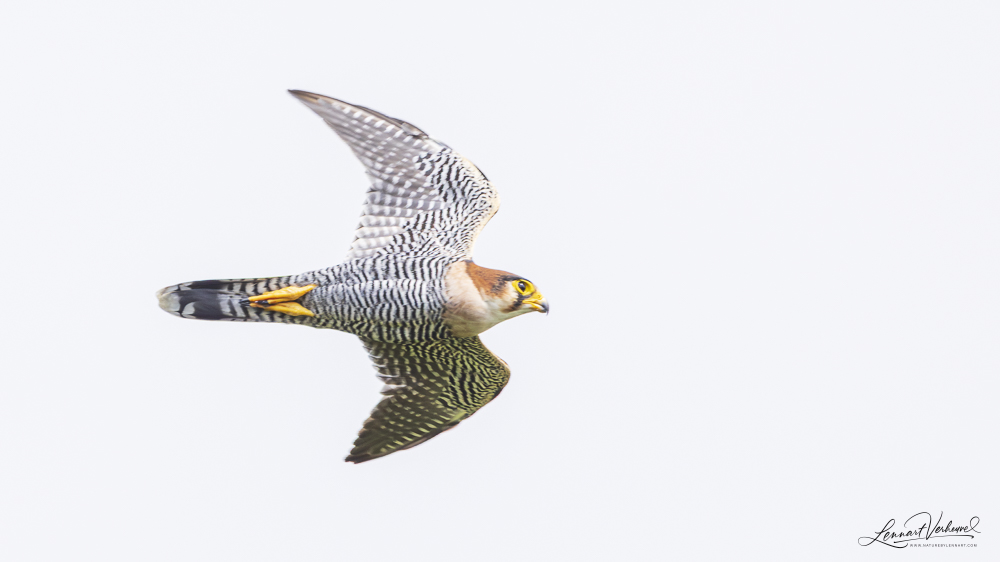
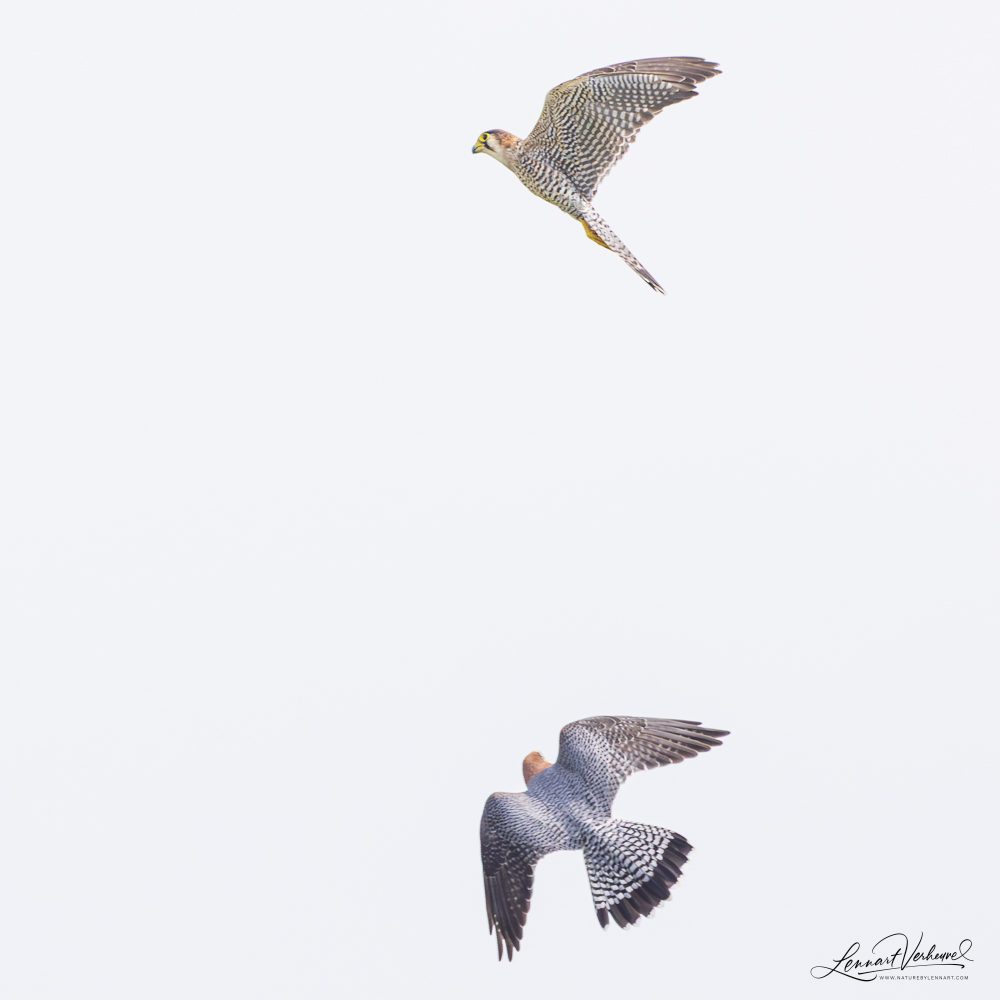
Red-necked Falcon
So our visit to this beautiful park ended on a high note, and we could prepare for a long drive ahead—one that would bring some excitement of its own…
I also made a video report from these days. In fact, so much happened in Murchison that I needed two videos! You can find the clips about our approach to the park, our day in the park, and the day after below.
With this, the reports on my website about my Uganda trip come to an end. Of course, there was much more worth sharing! For a day-by-day account, be sure to check out the other video reports I produced from the journey.
Want to read more about the other highlights of our Uganda trip?
Read about it’s number one attraction: The Gorilla Experience!
Also read how we saw one the worlds best birds: the Shoebill!
Also read about a great day in Kibale National Park with Chimpanzees, Forest Elephants and a Green-breasted Pitta!
Furthermore our visit of a special area with special species: Semliki!